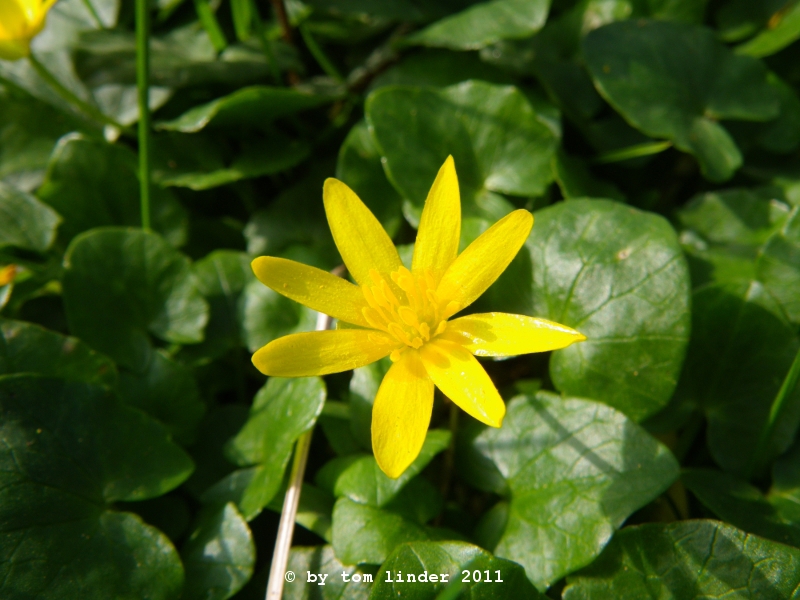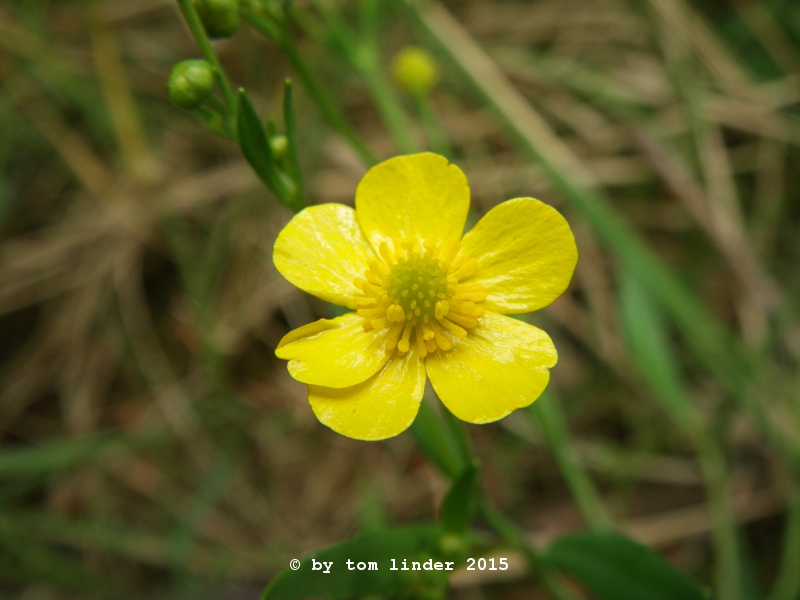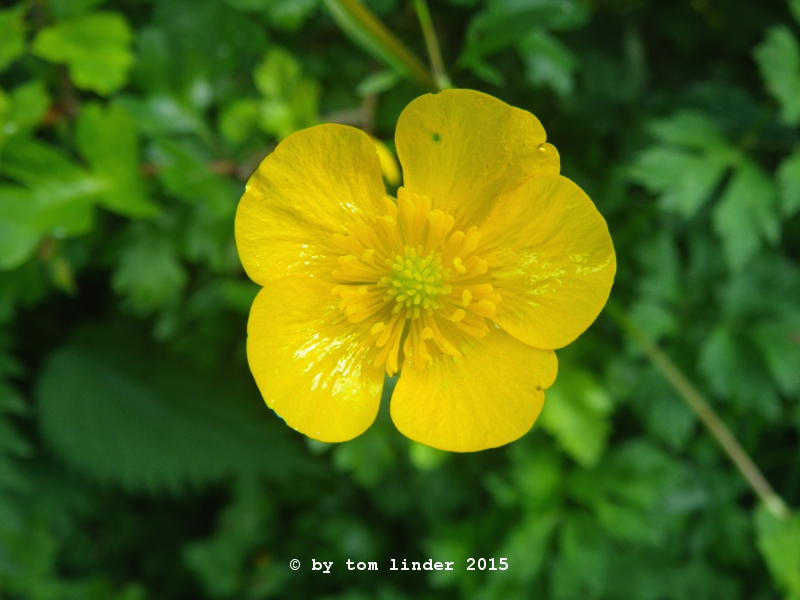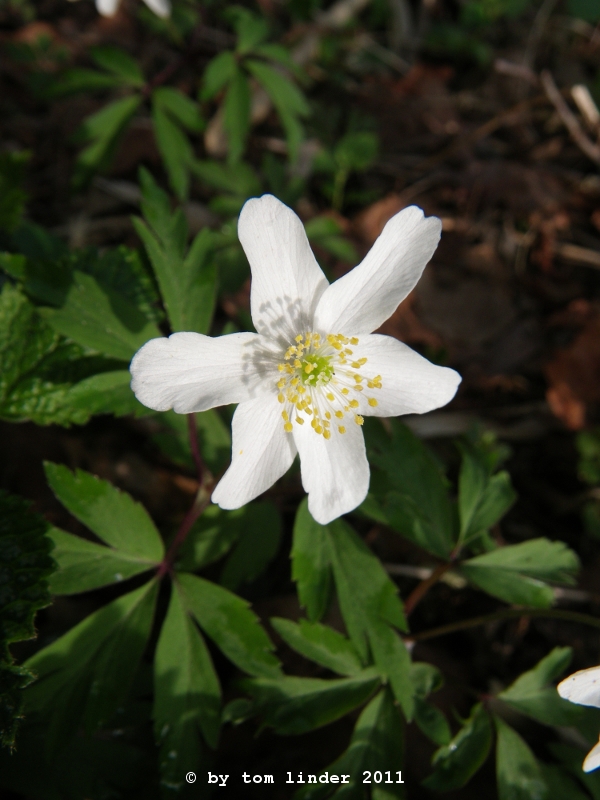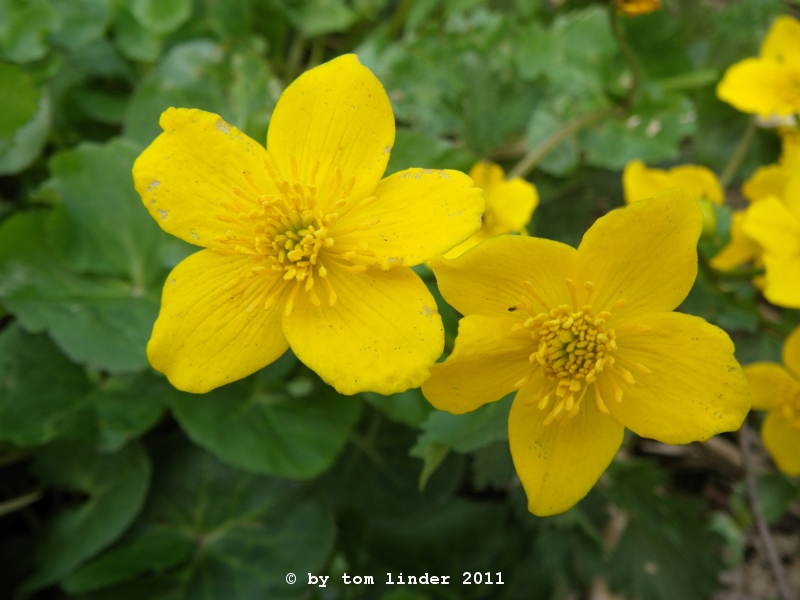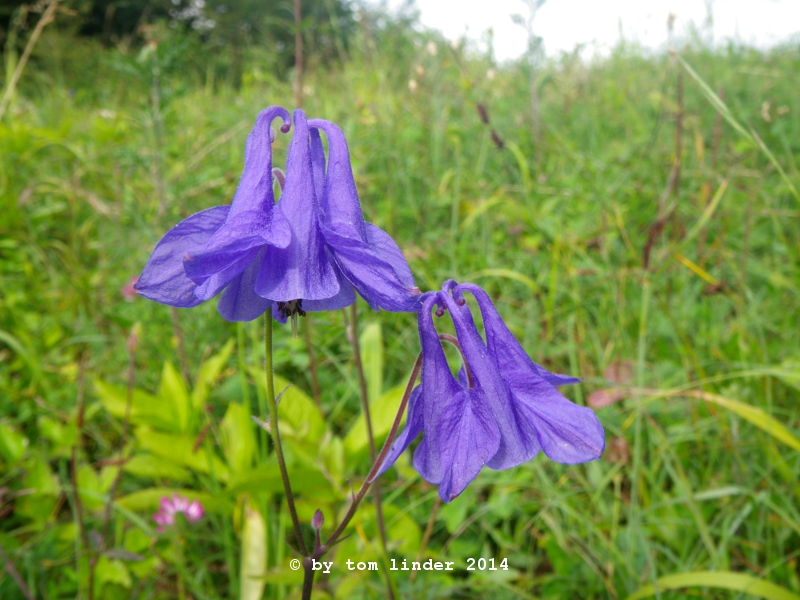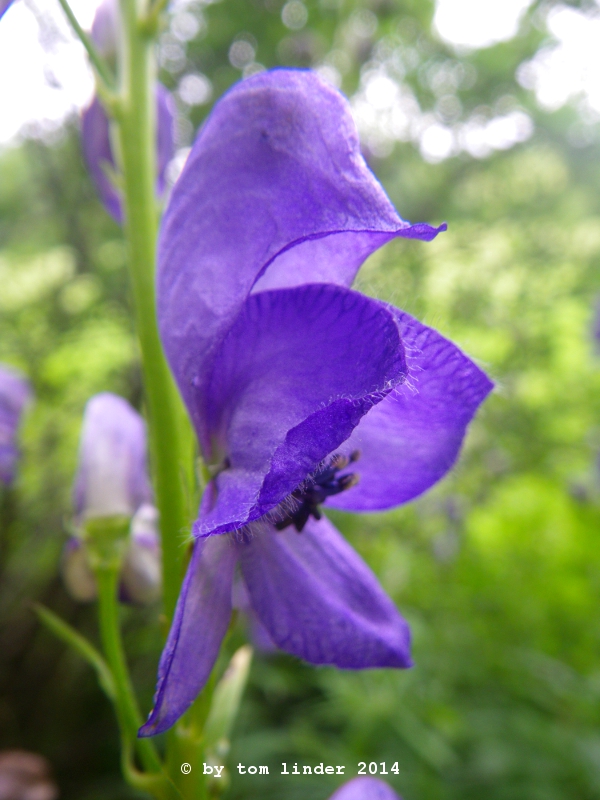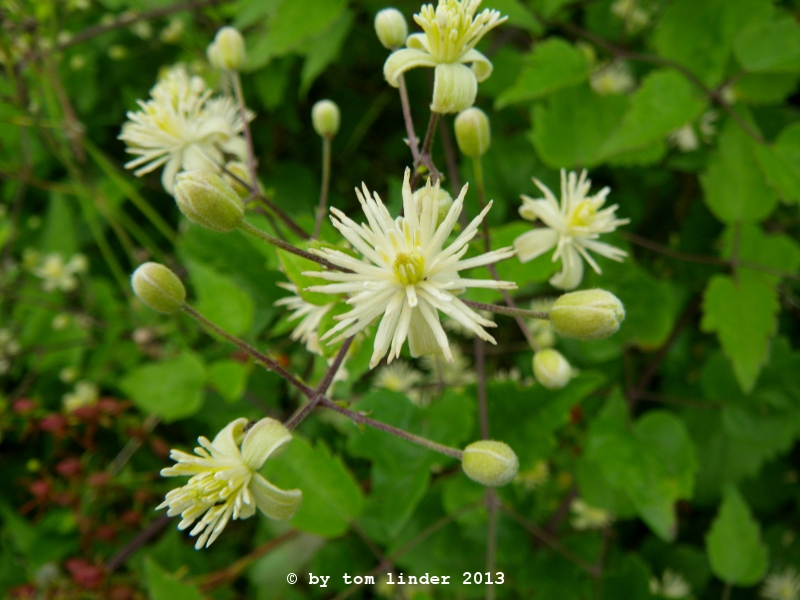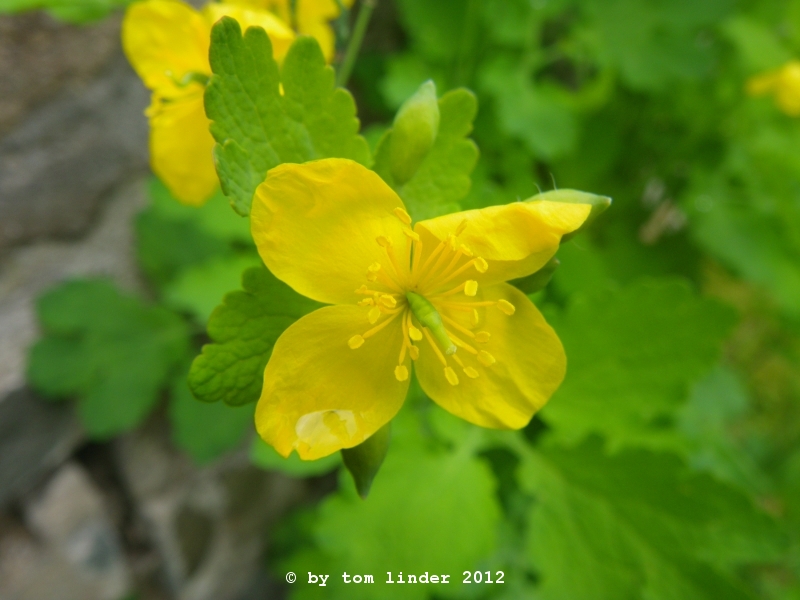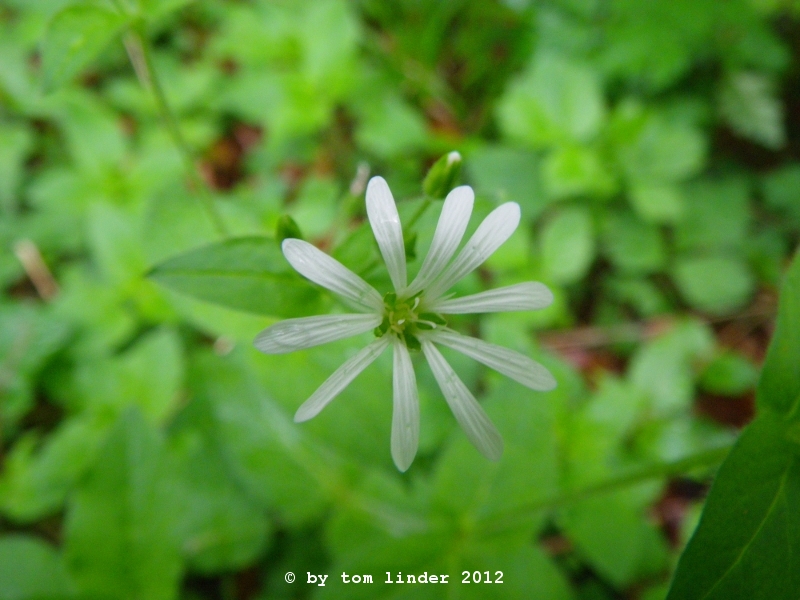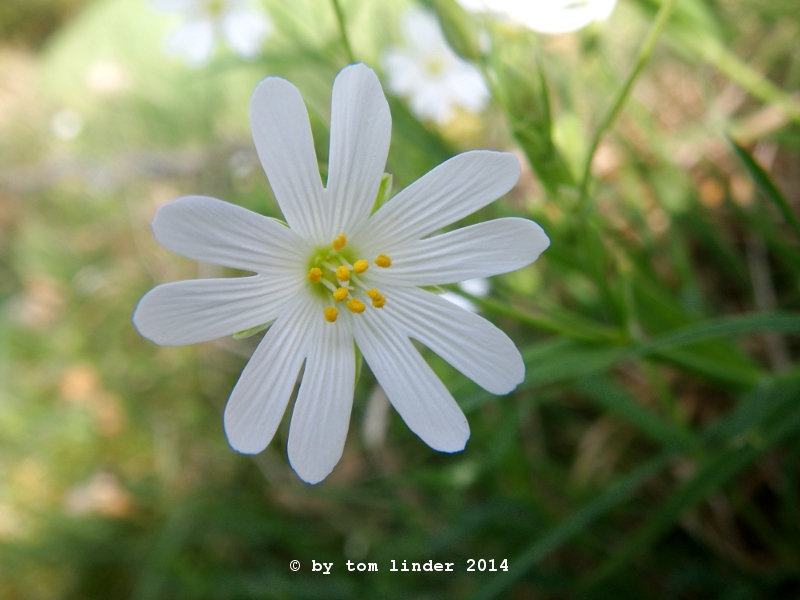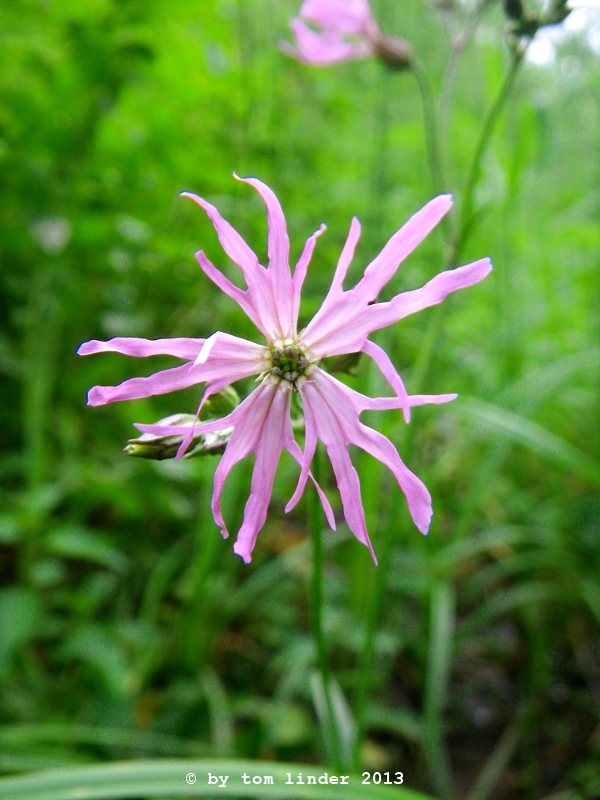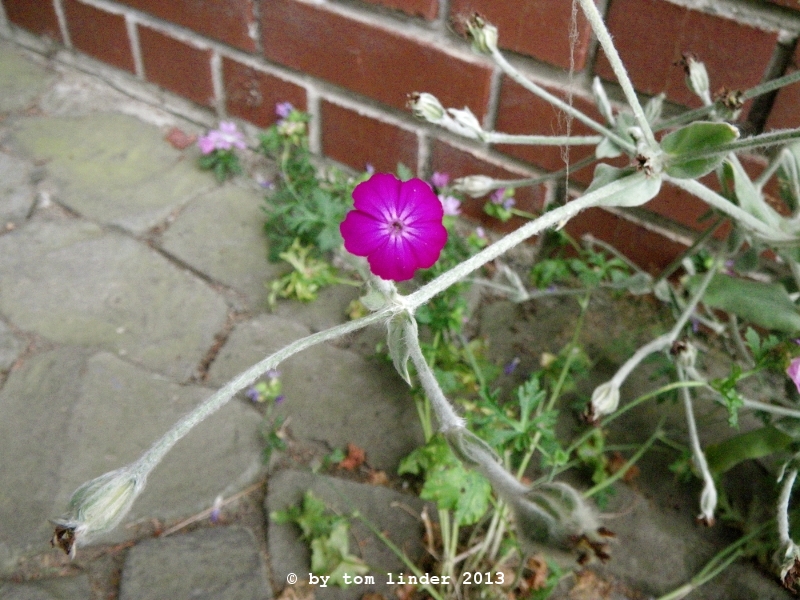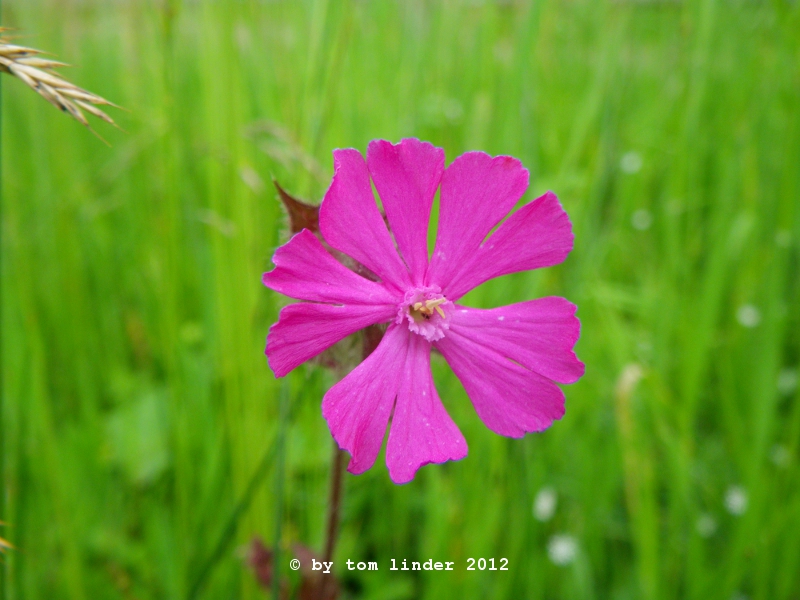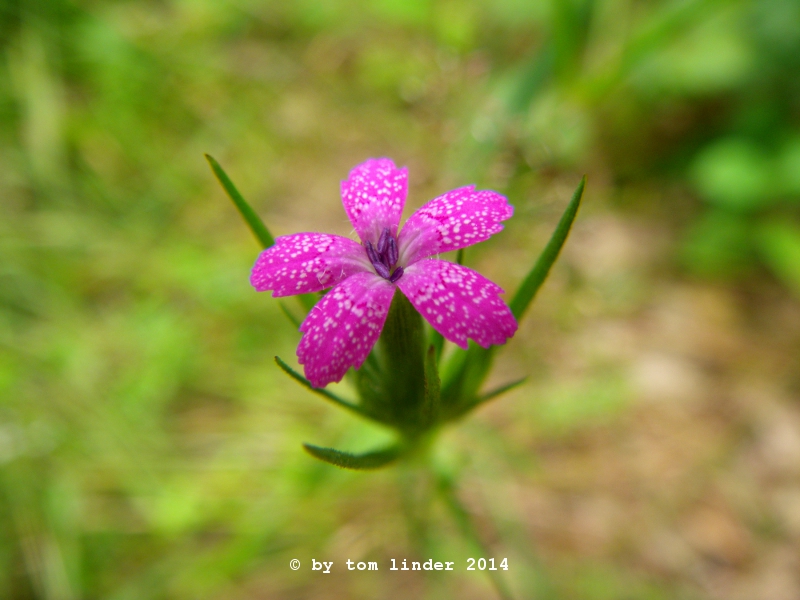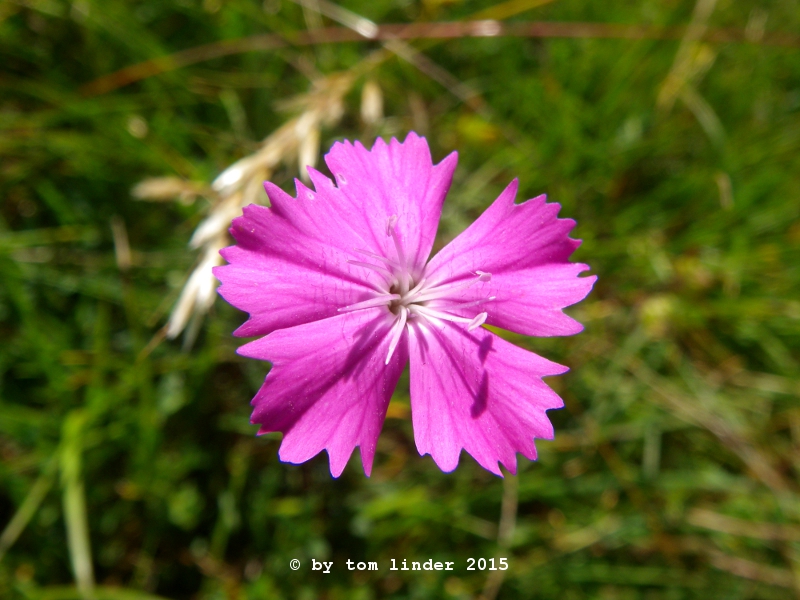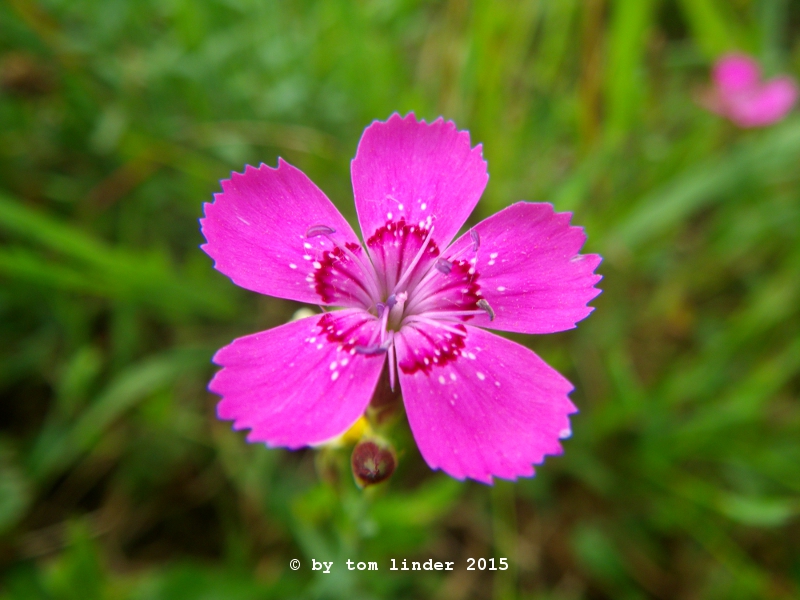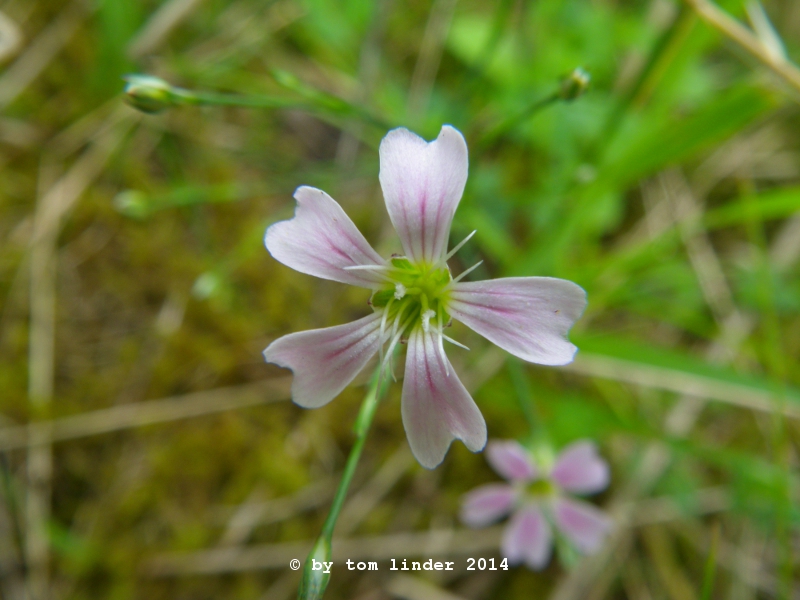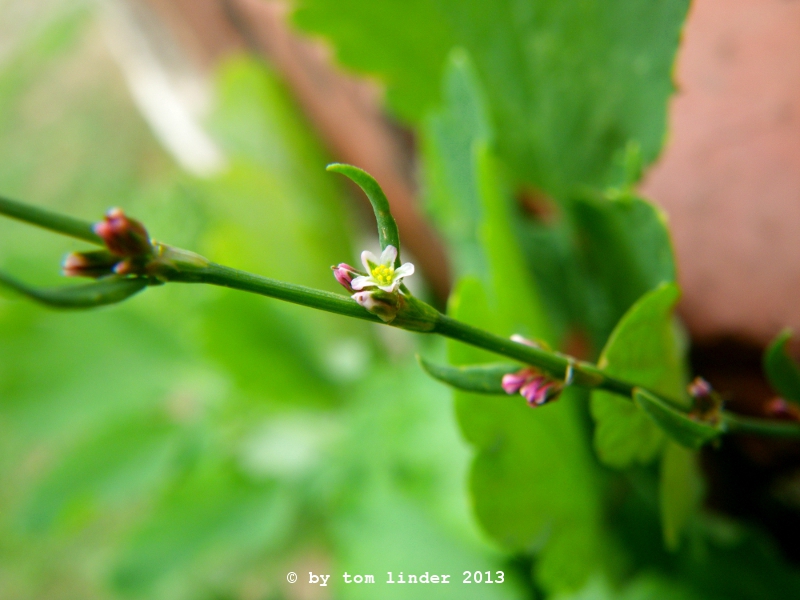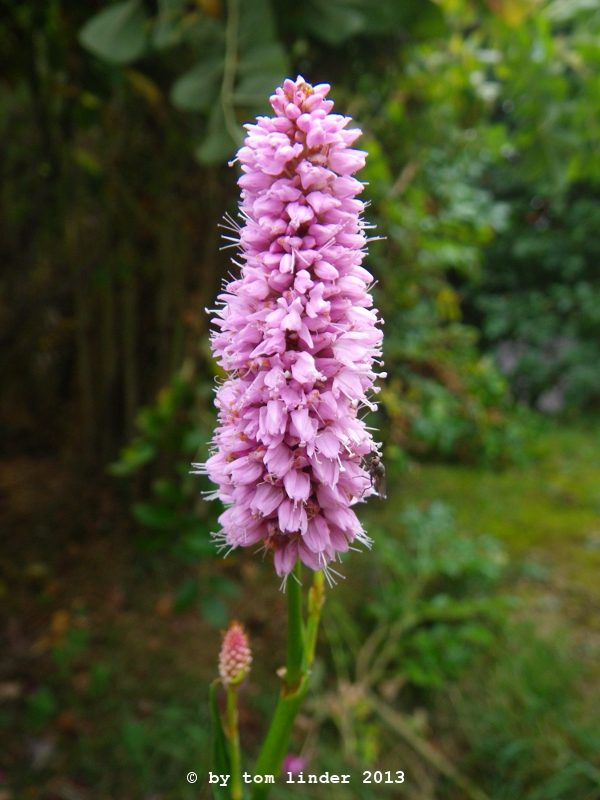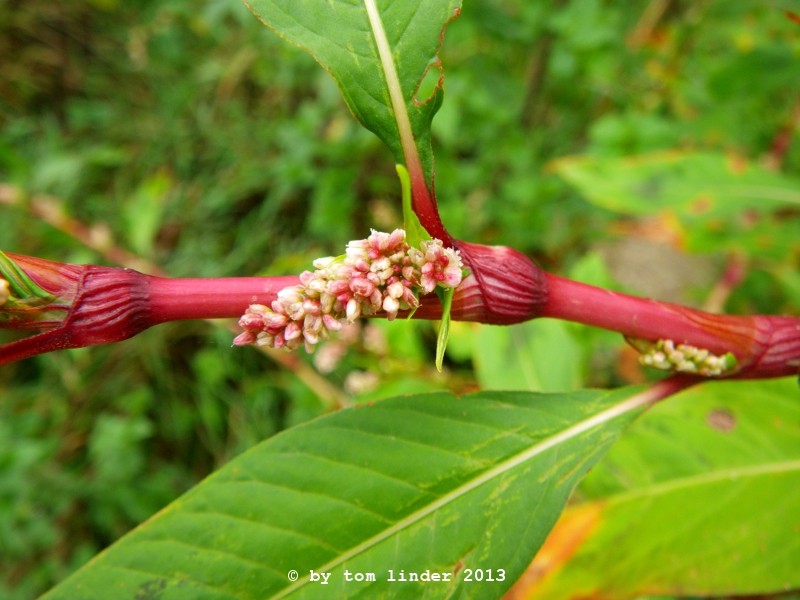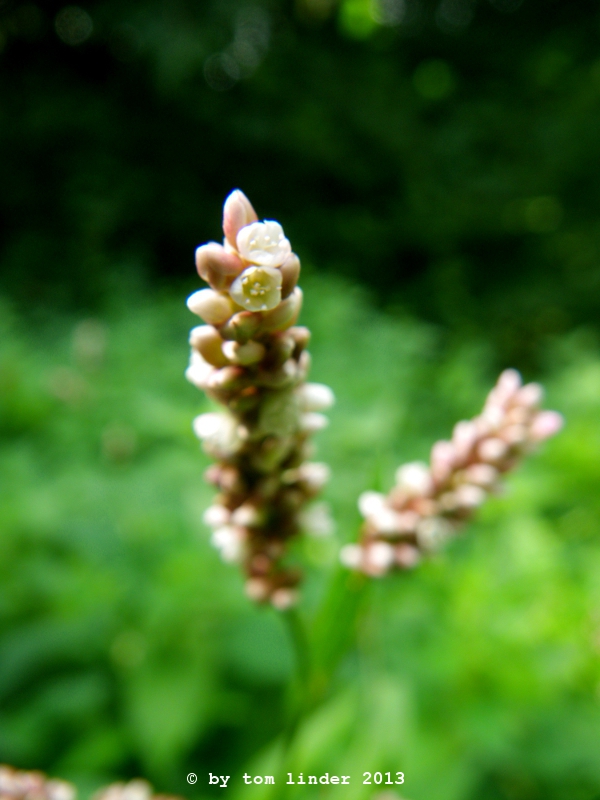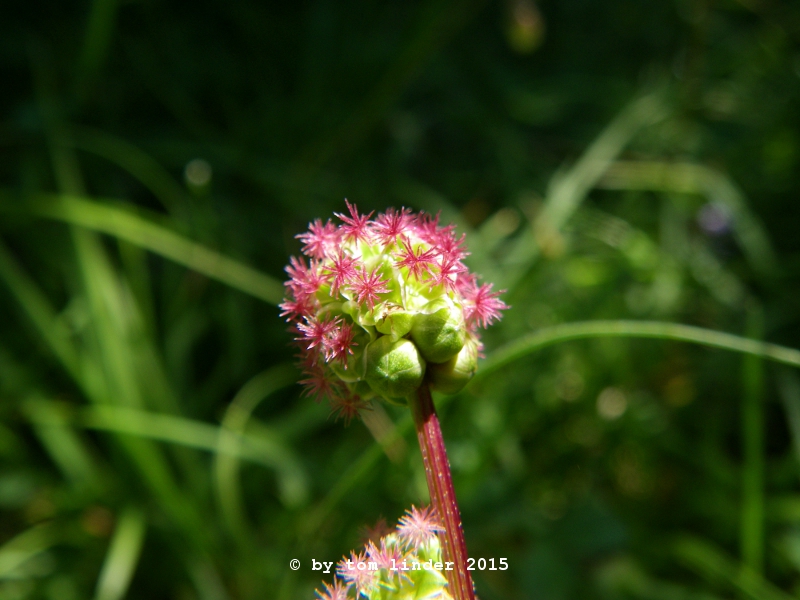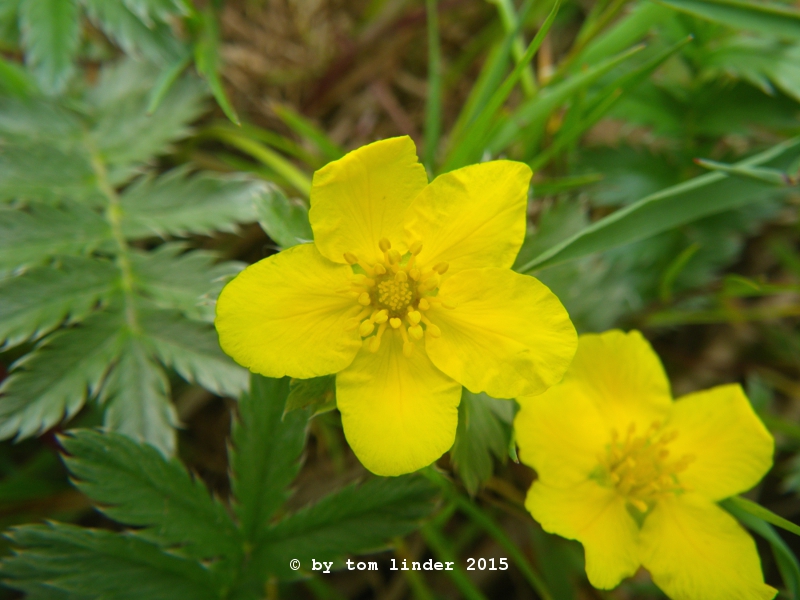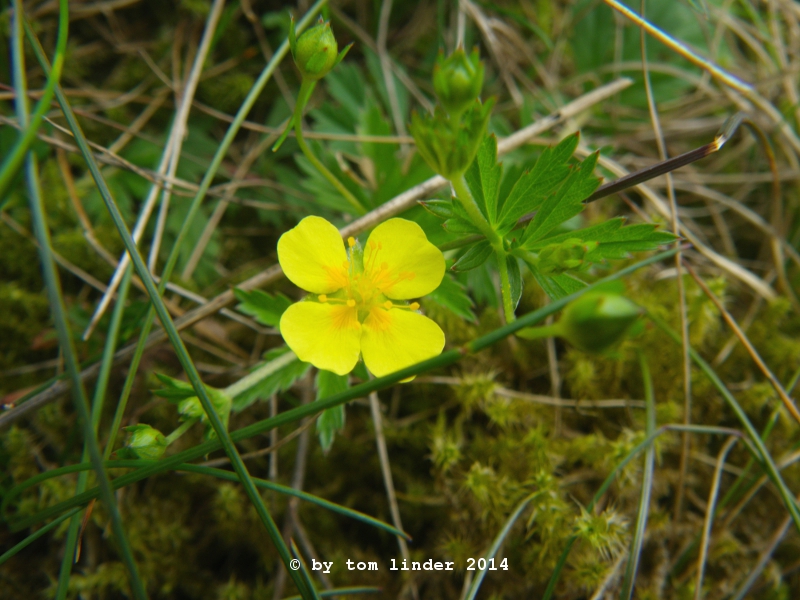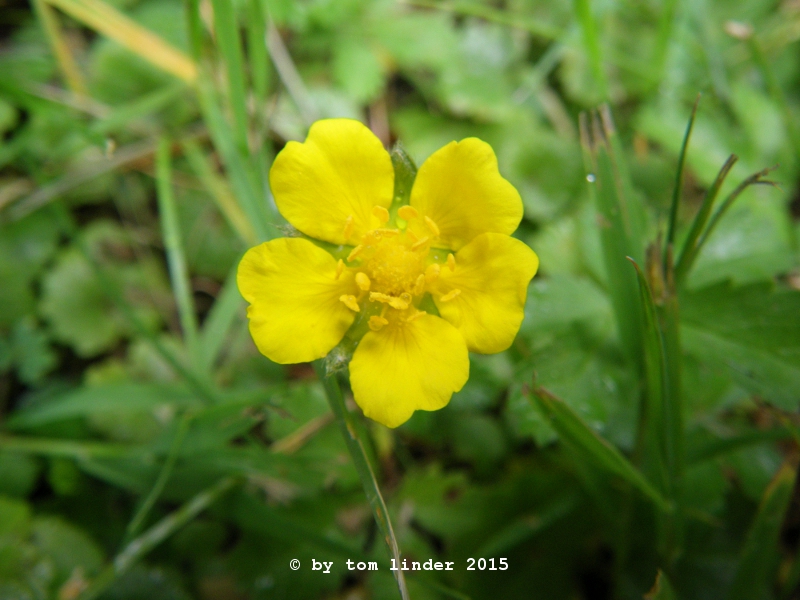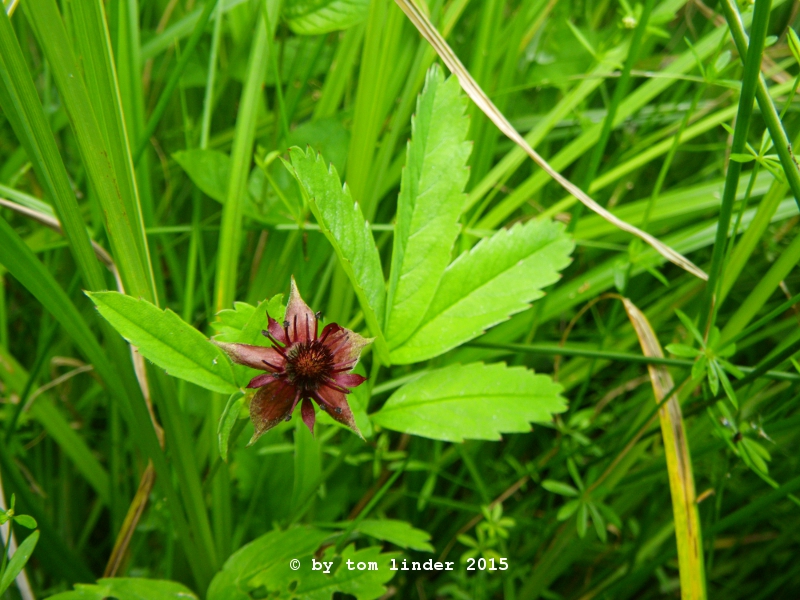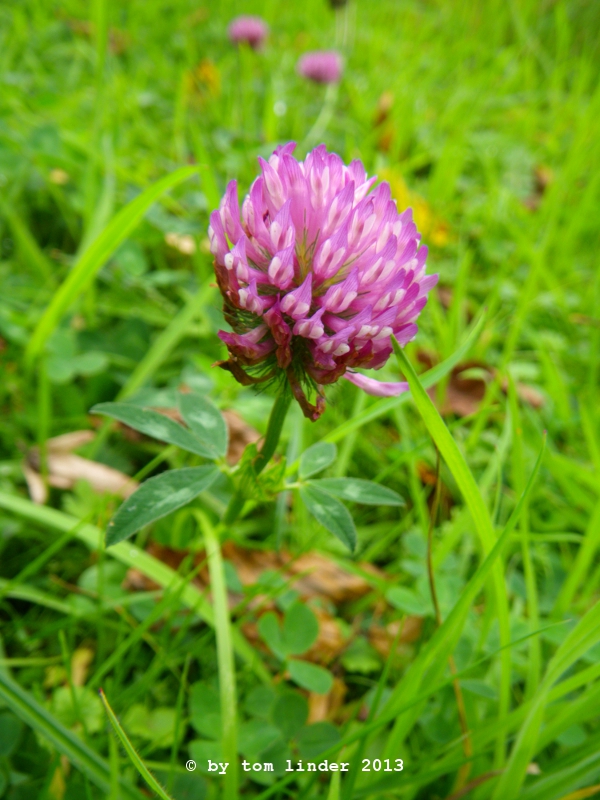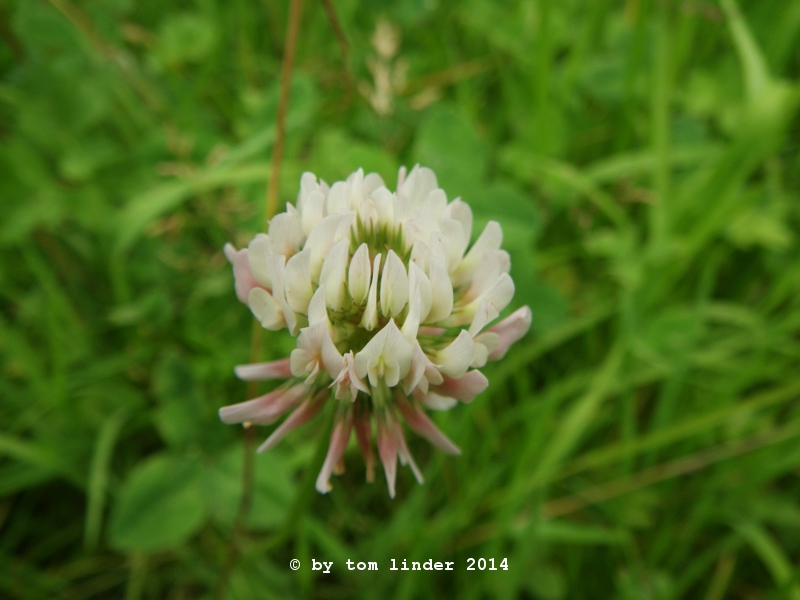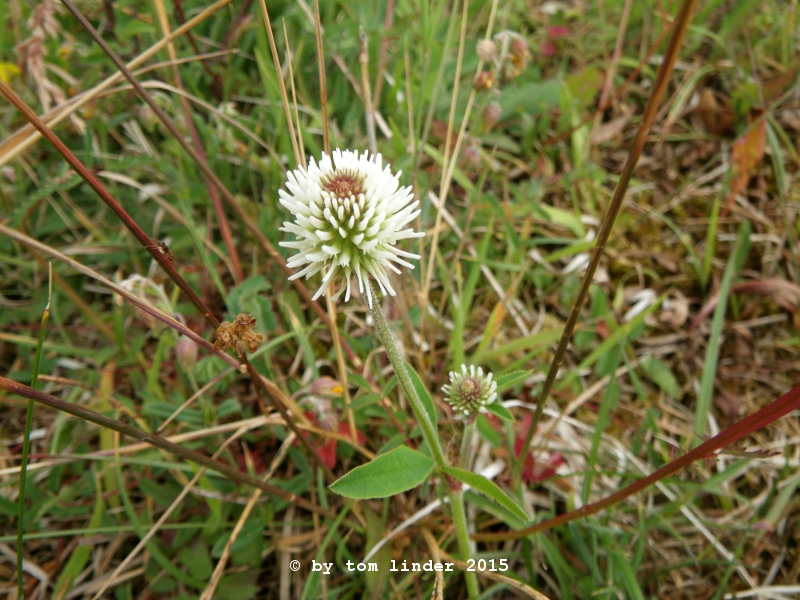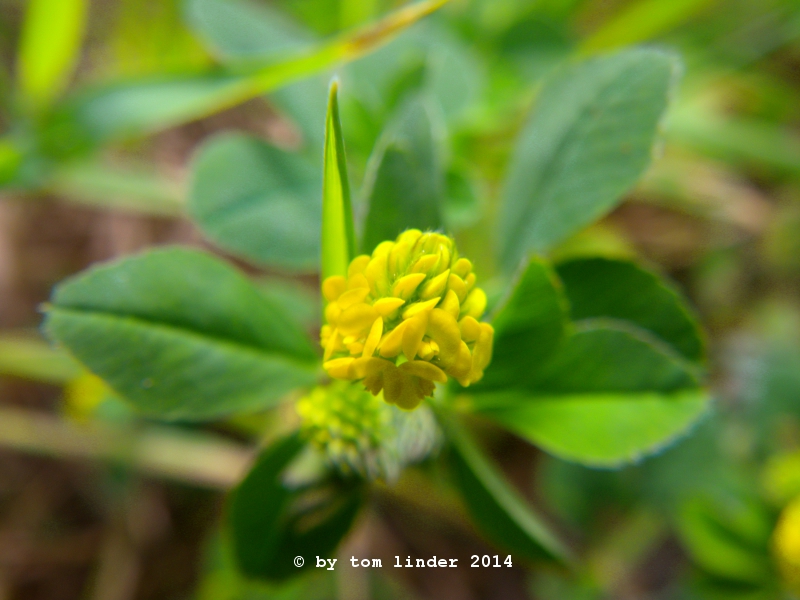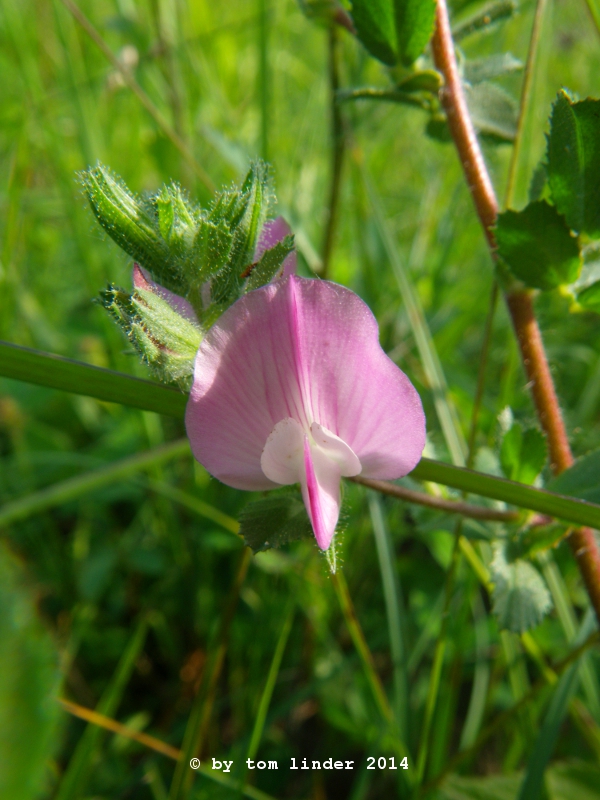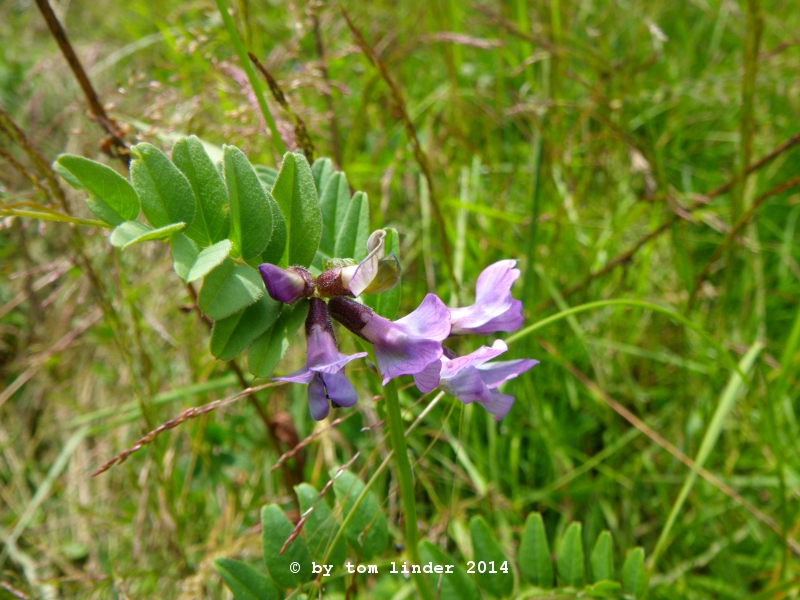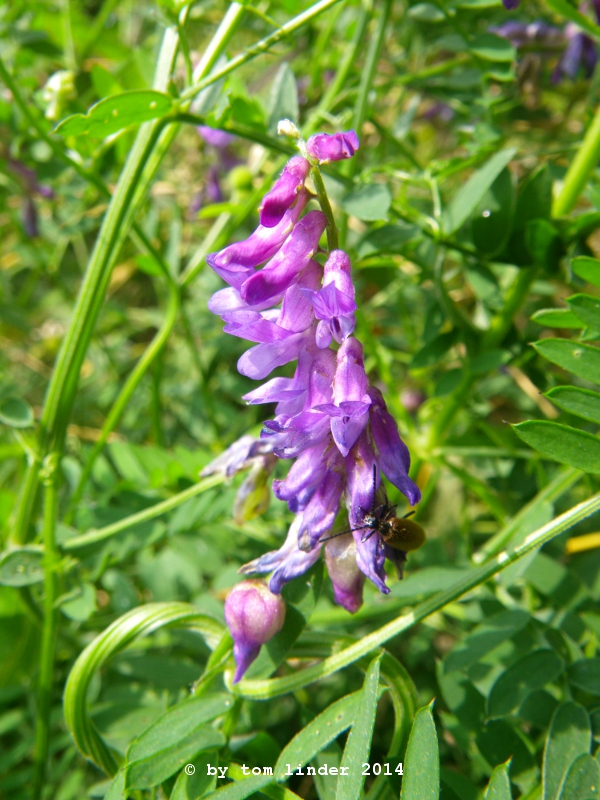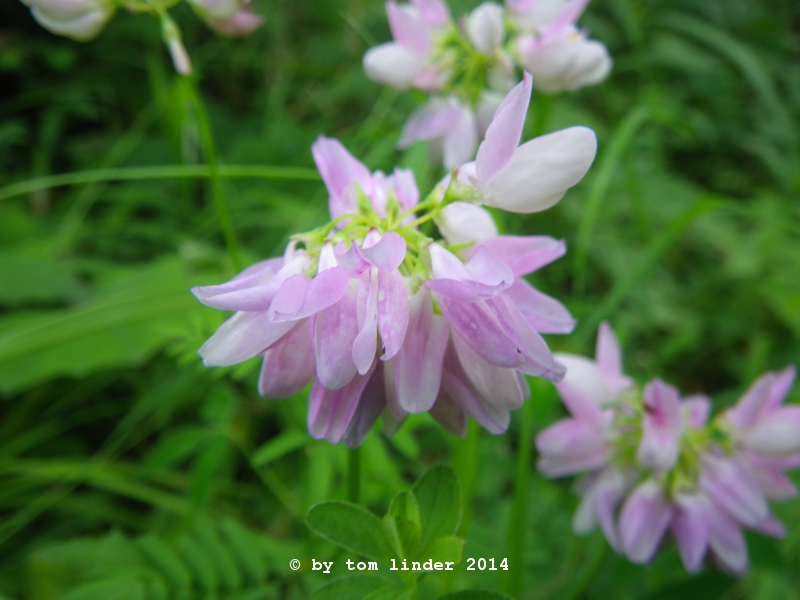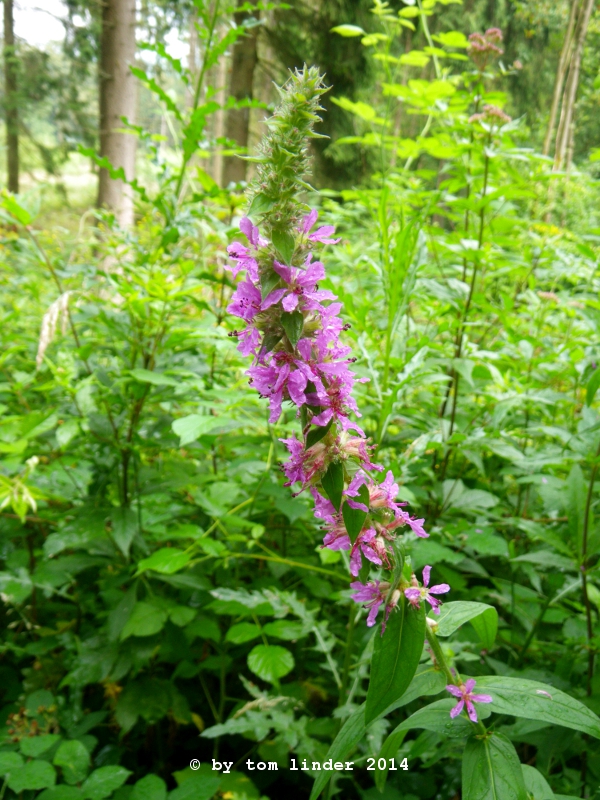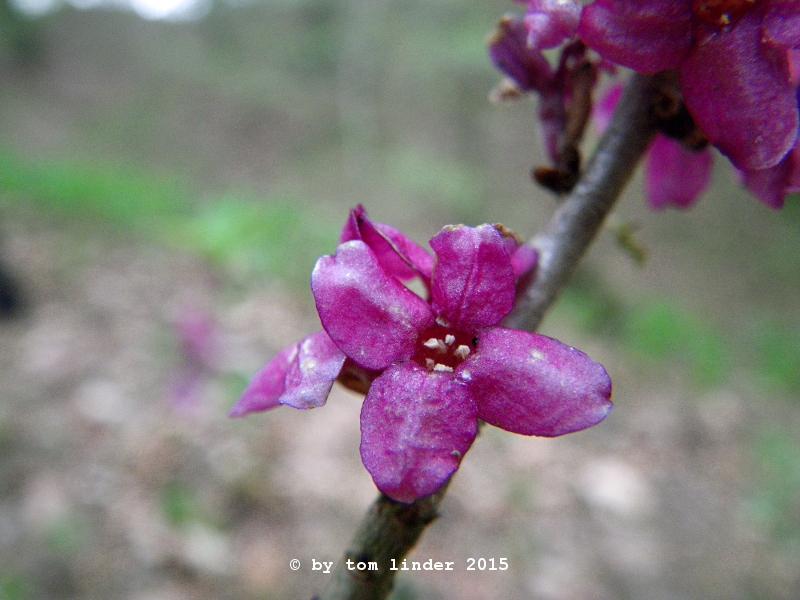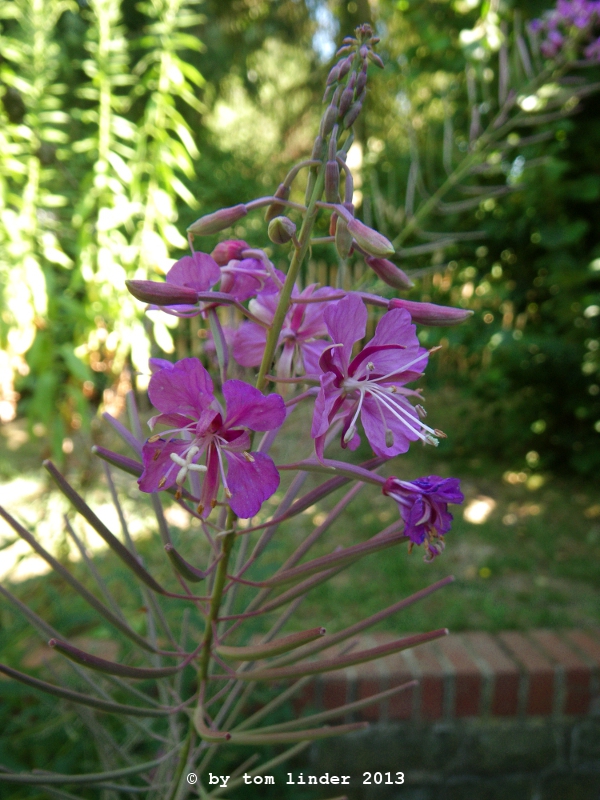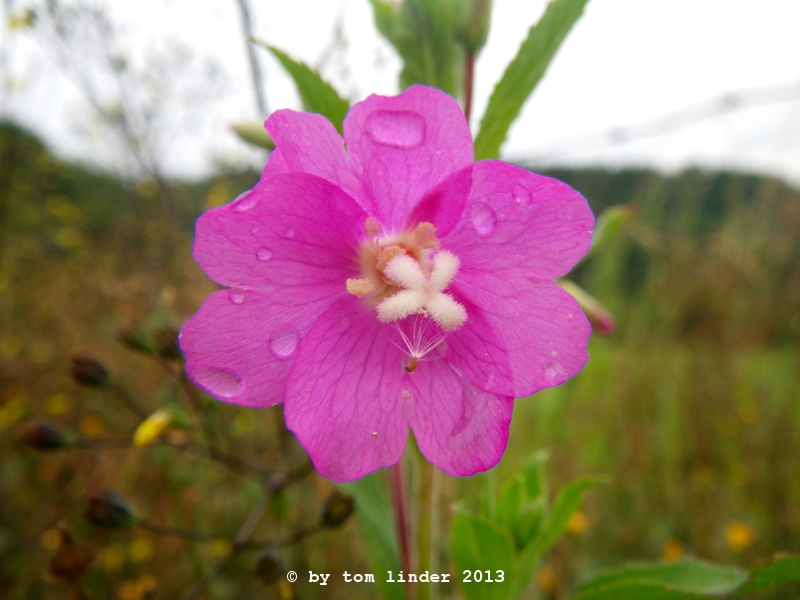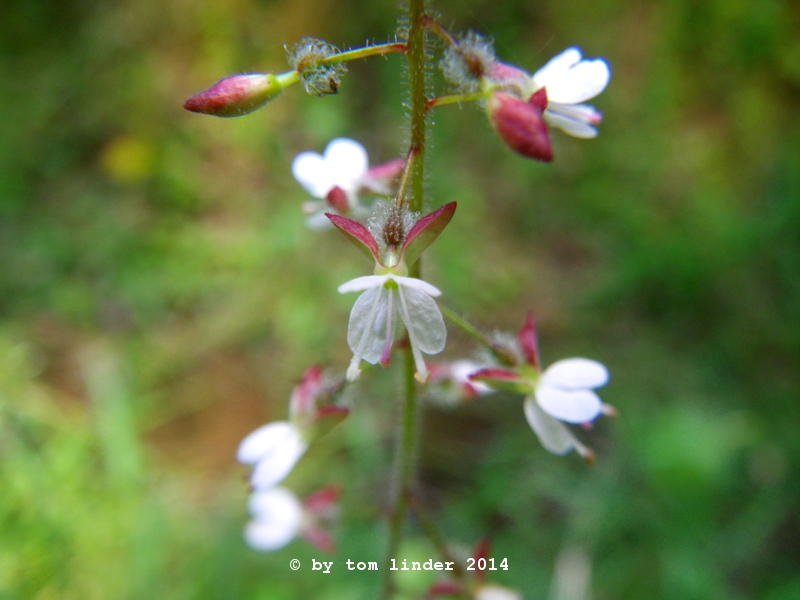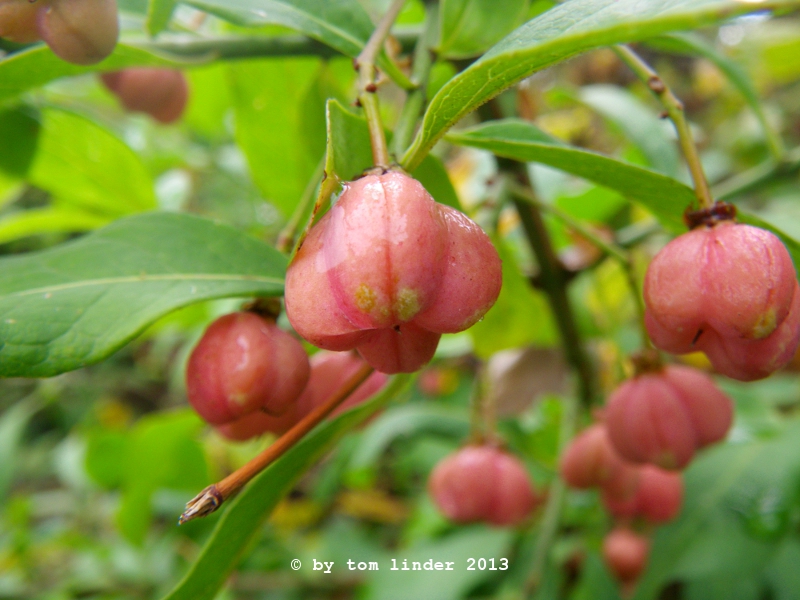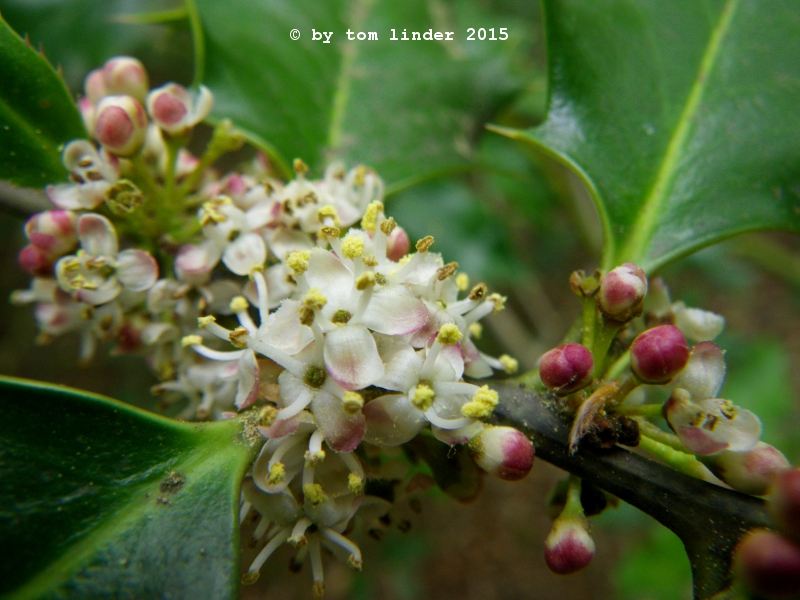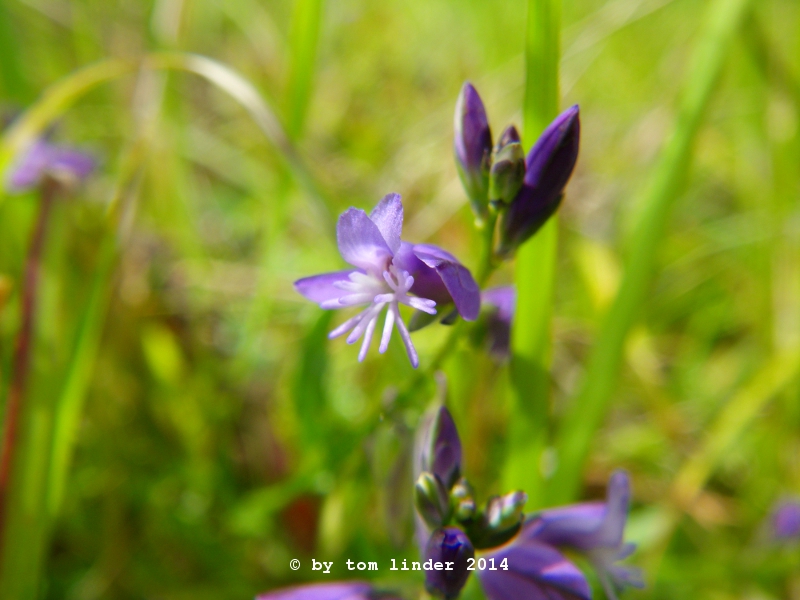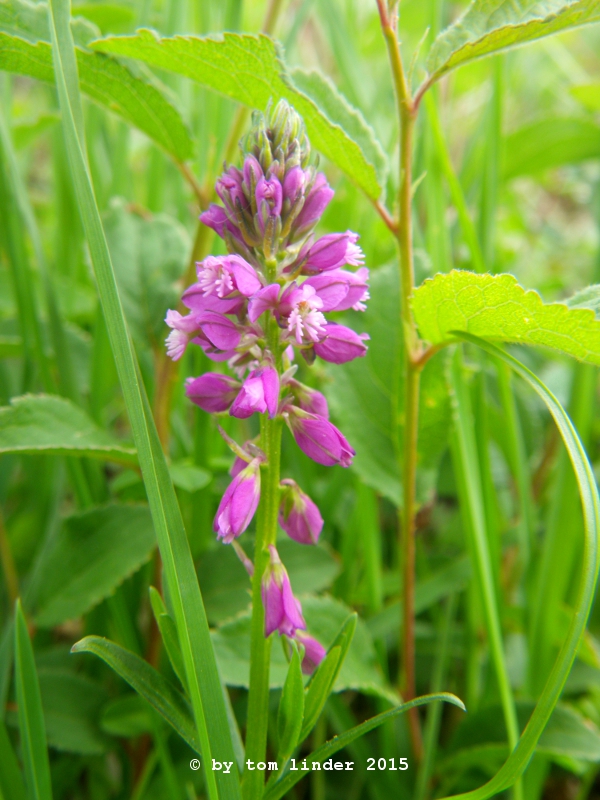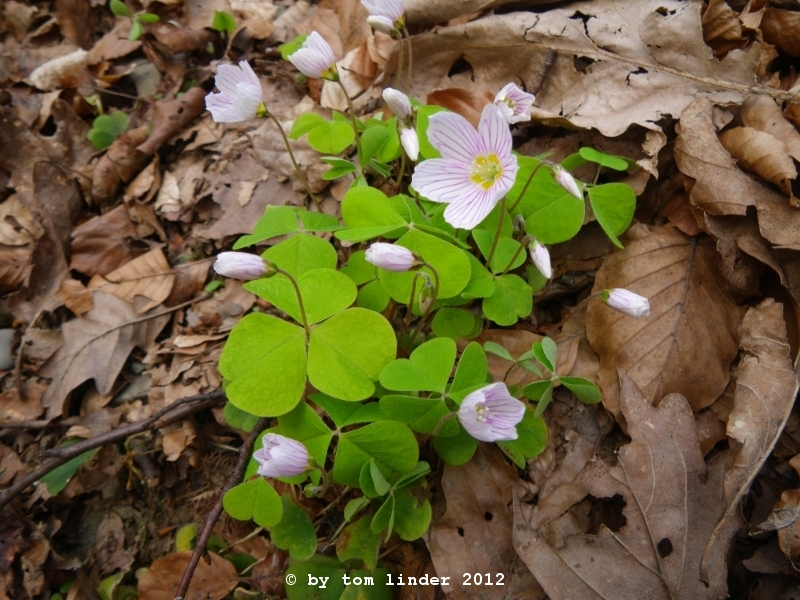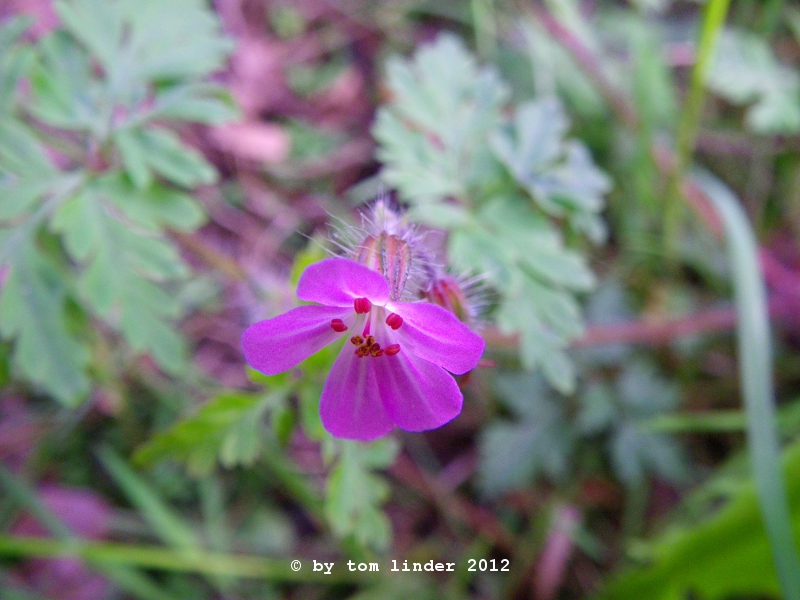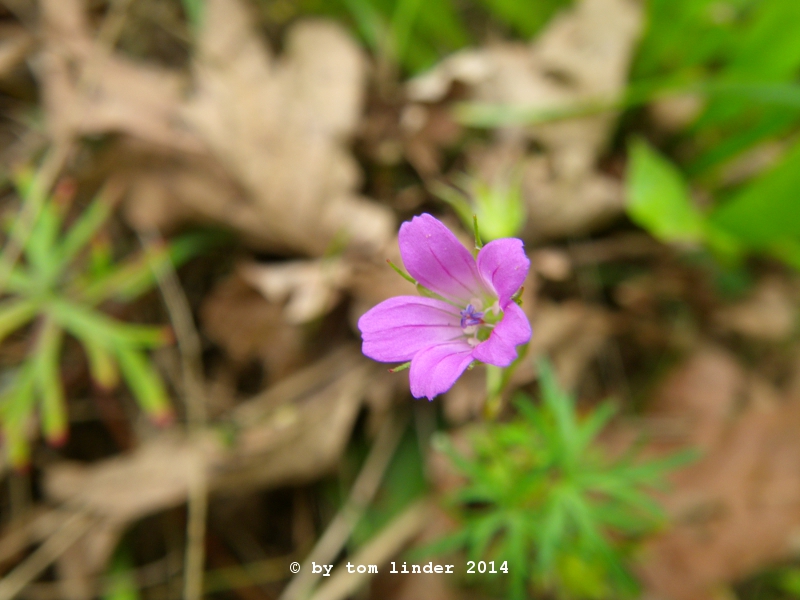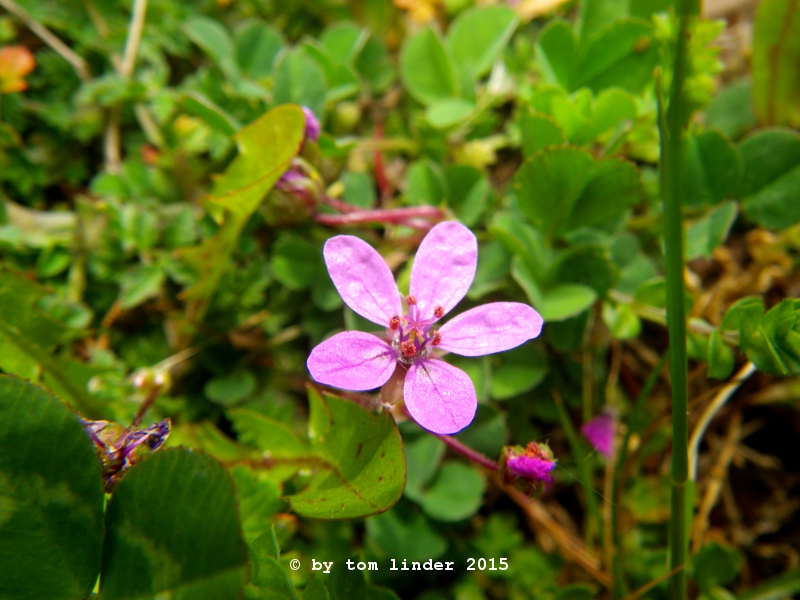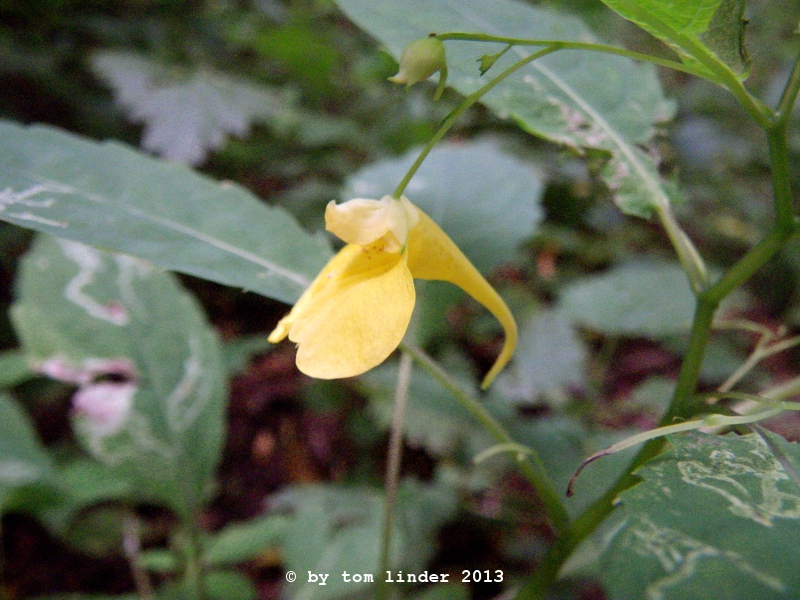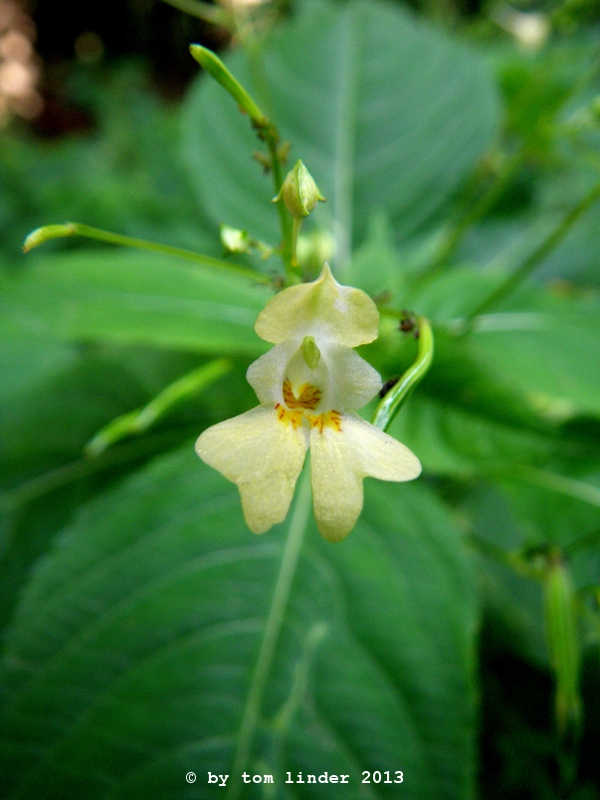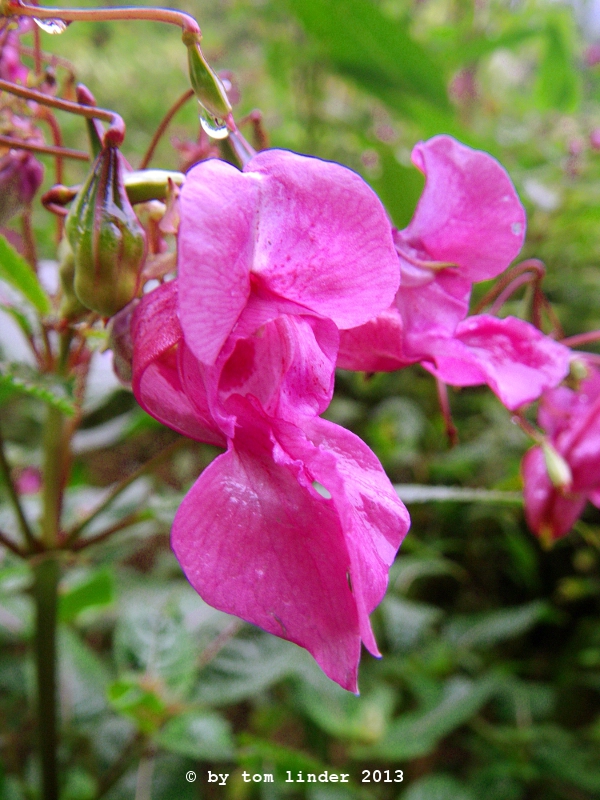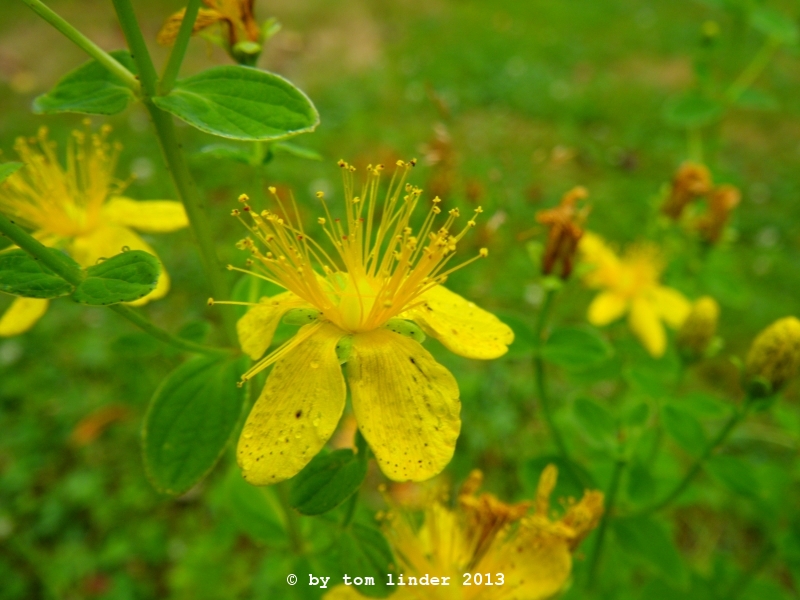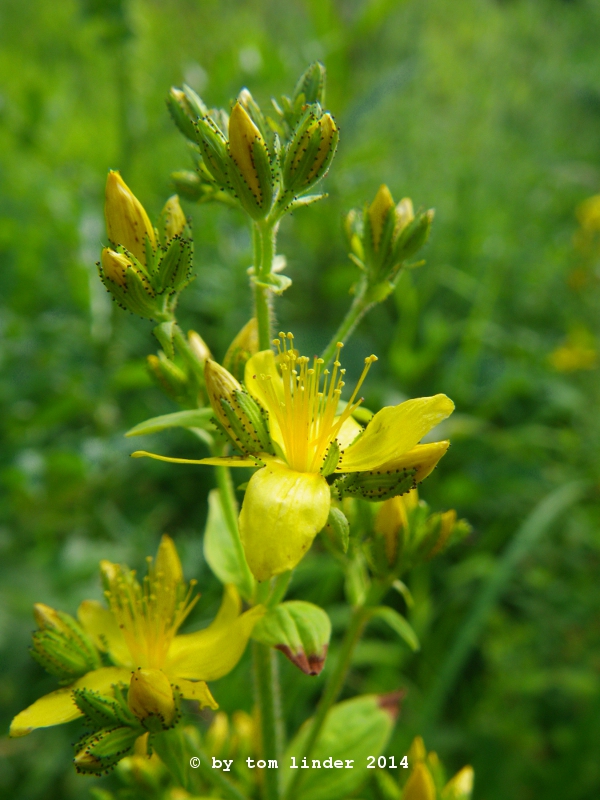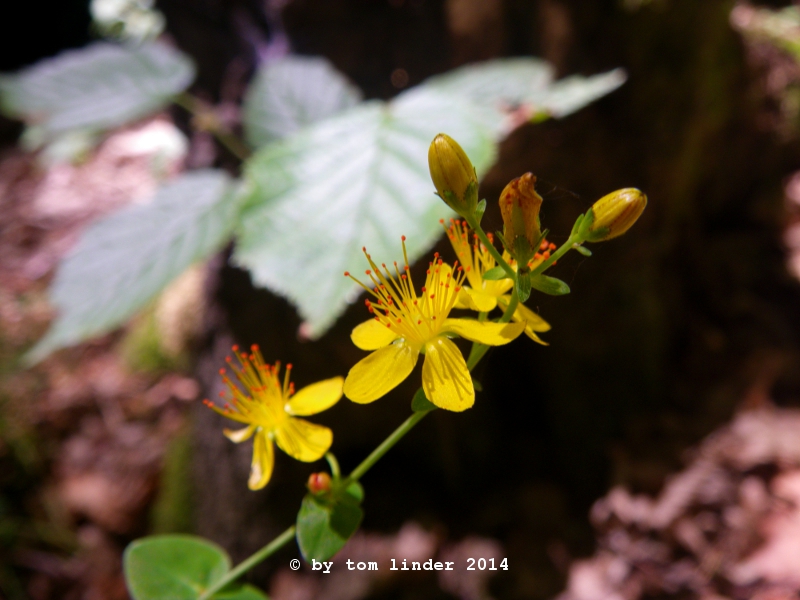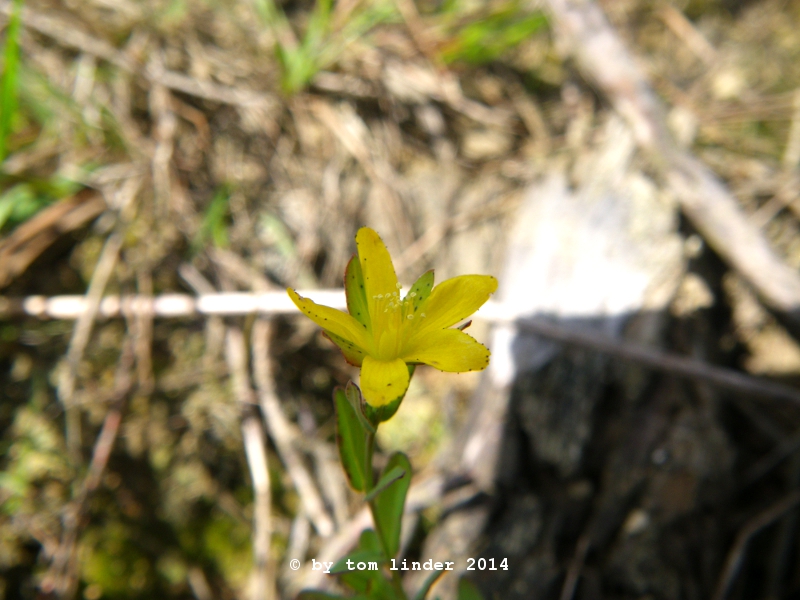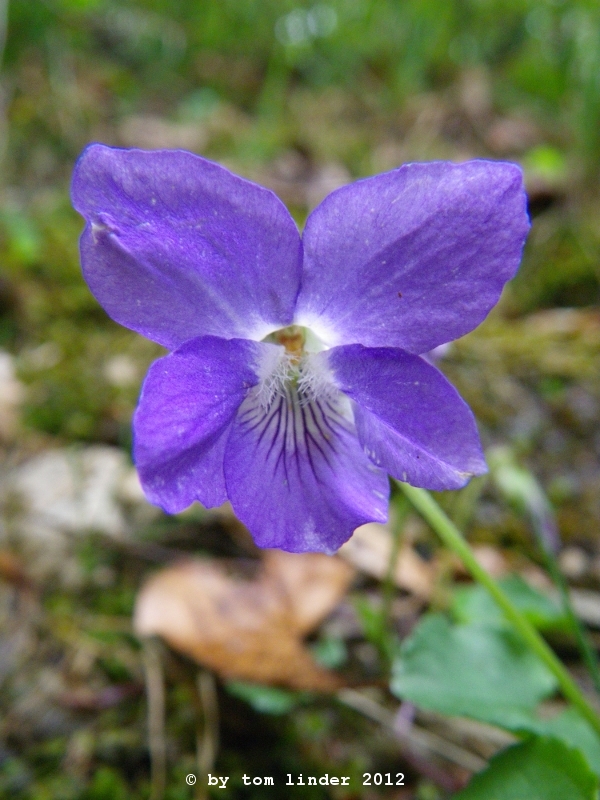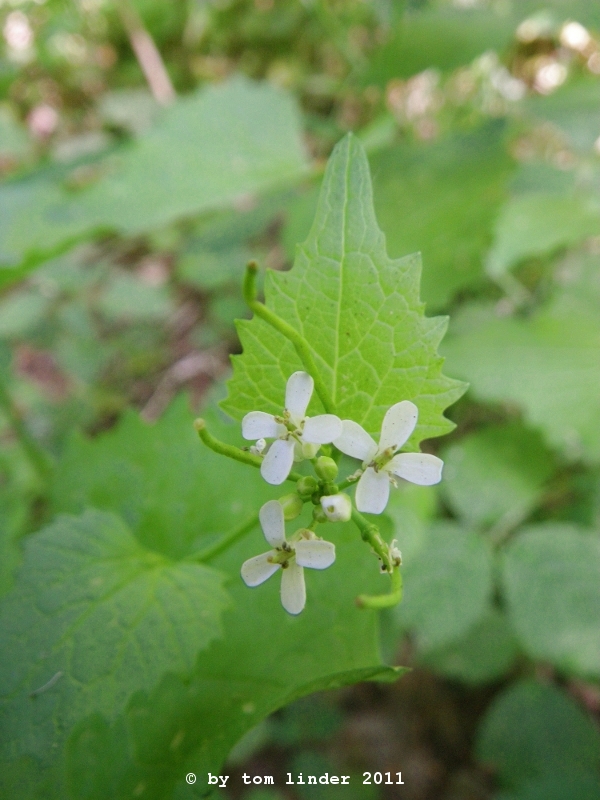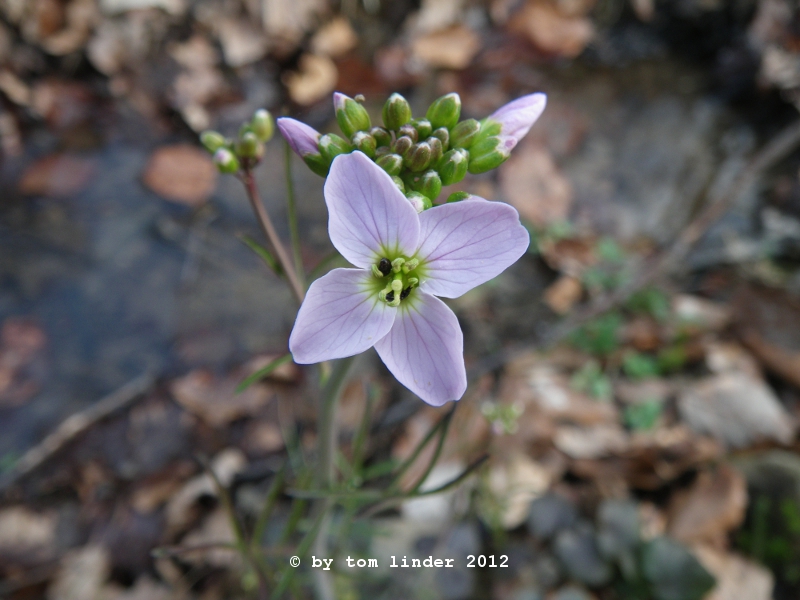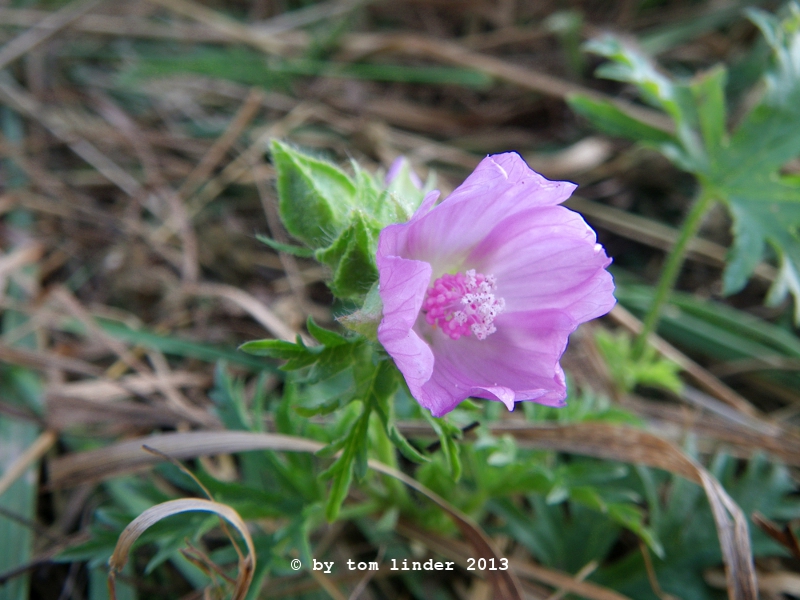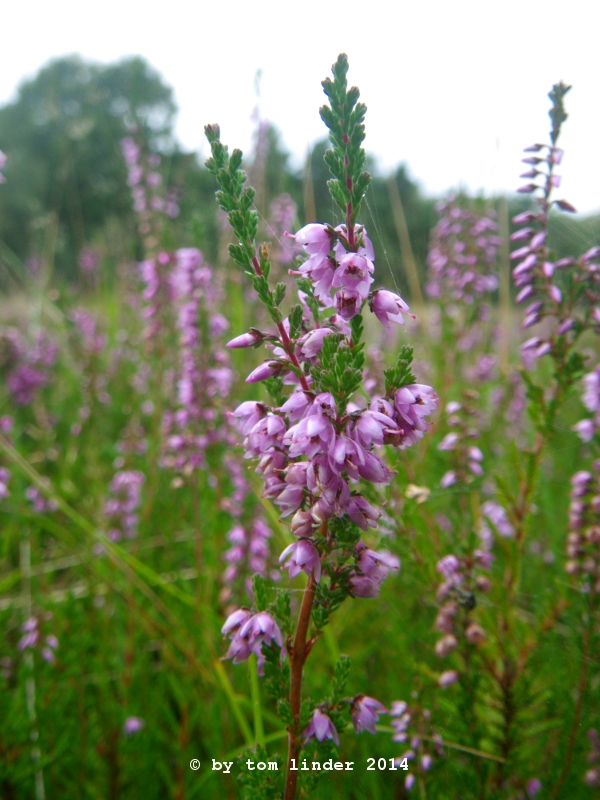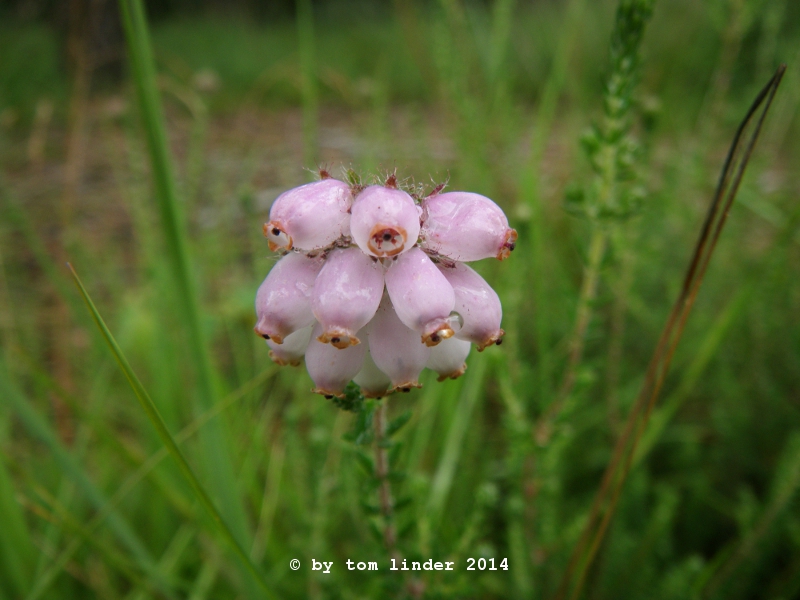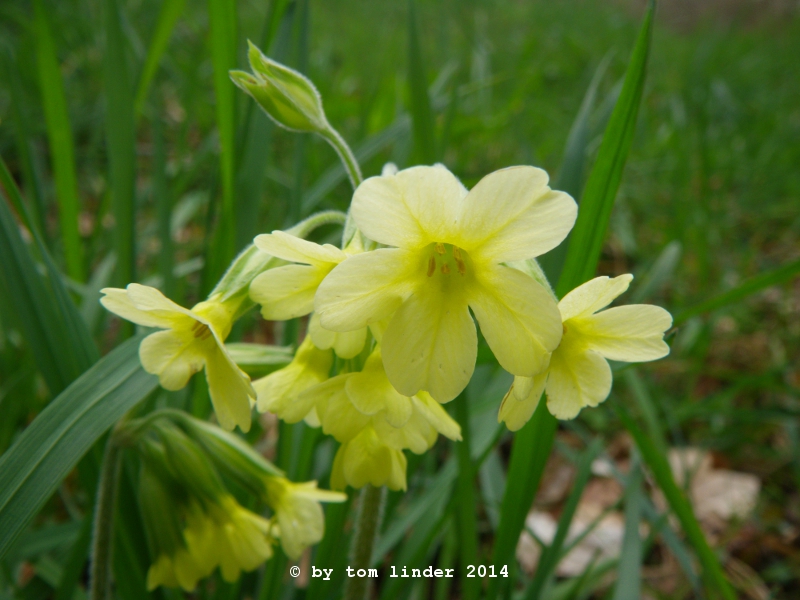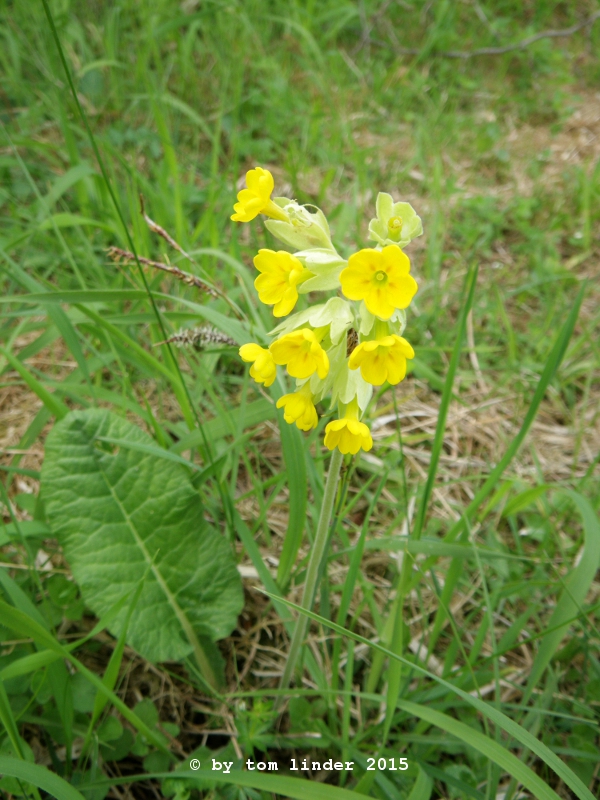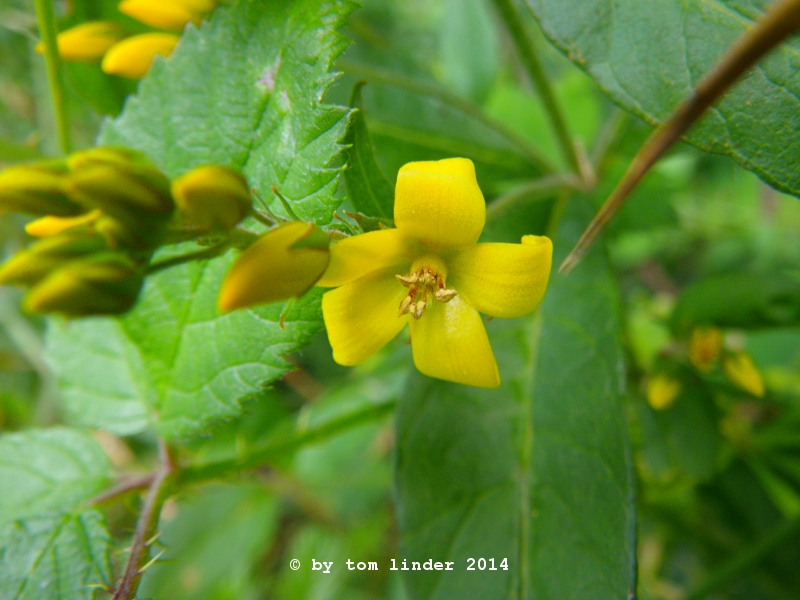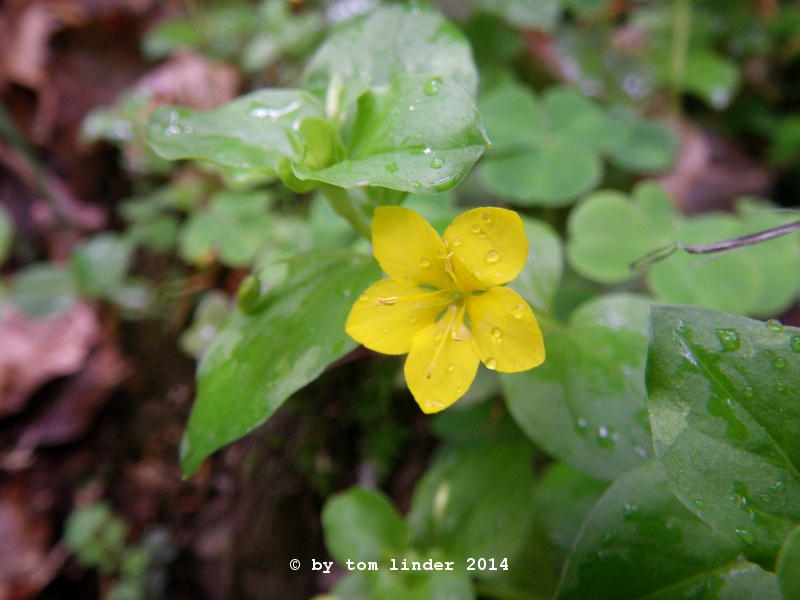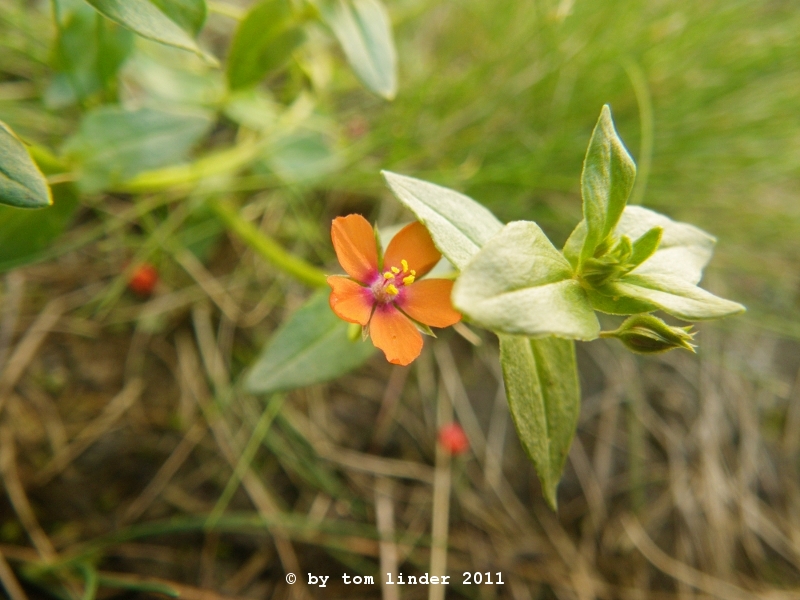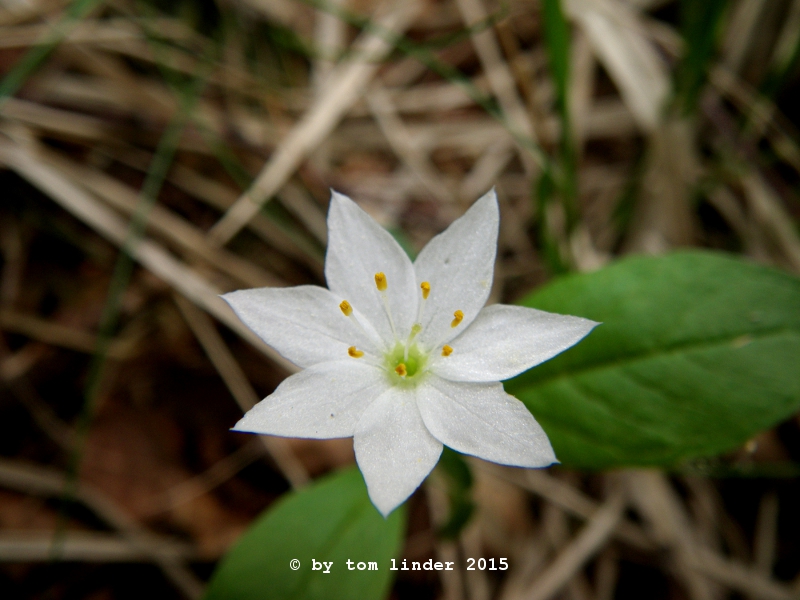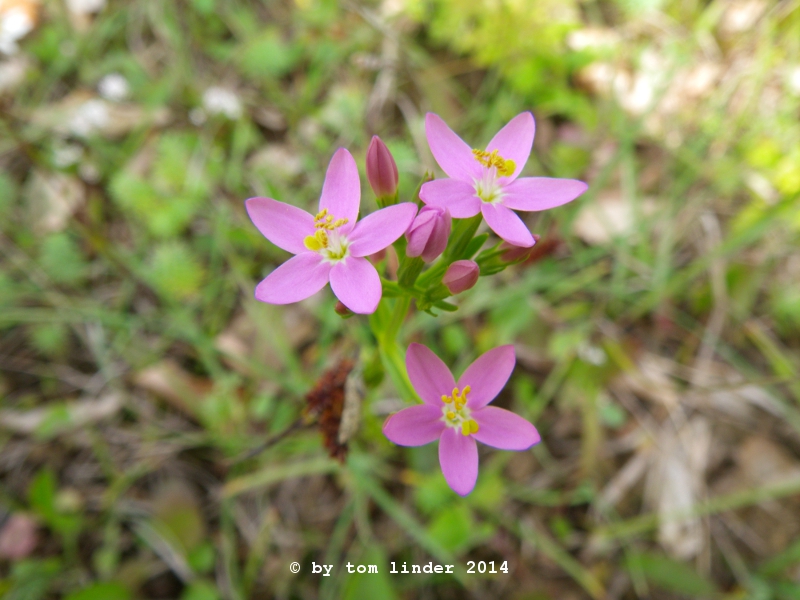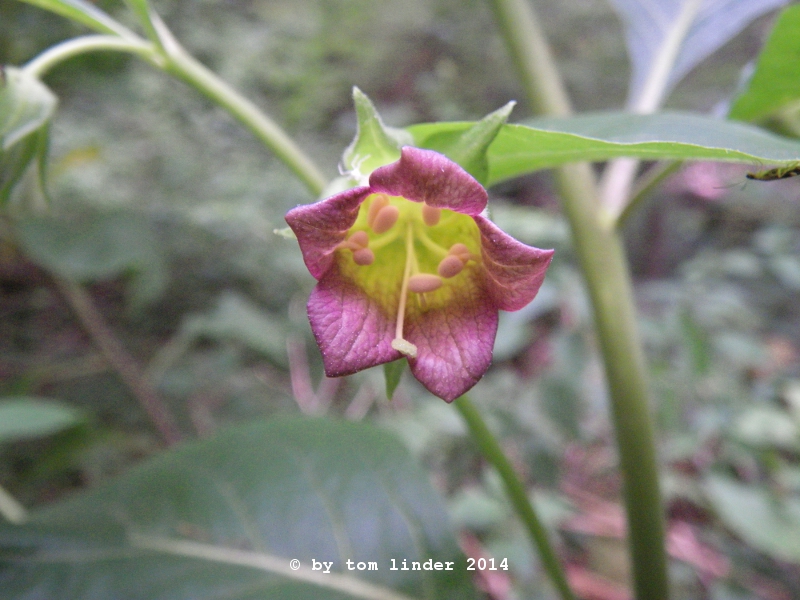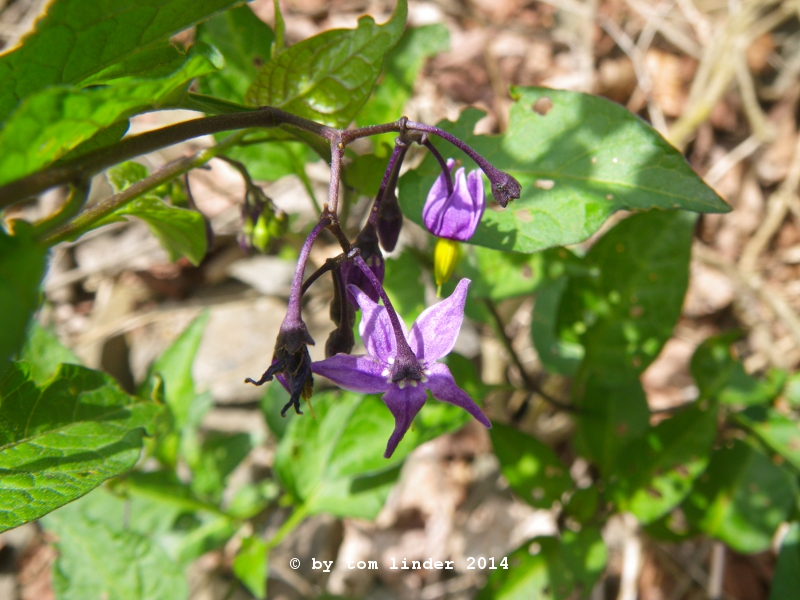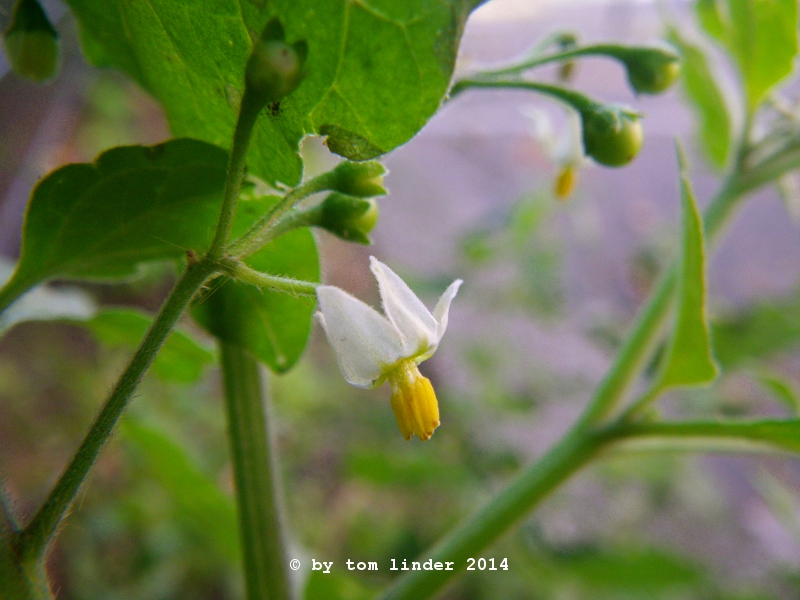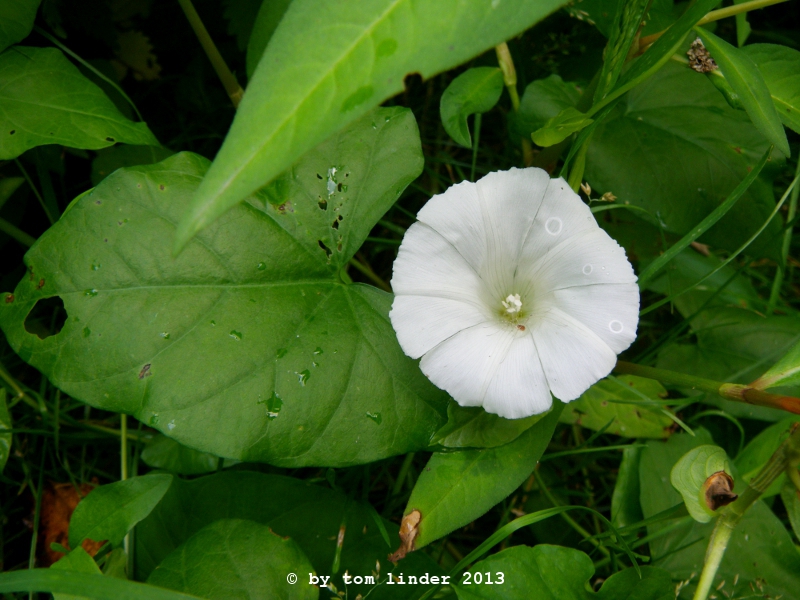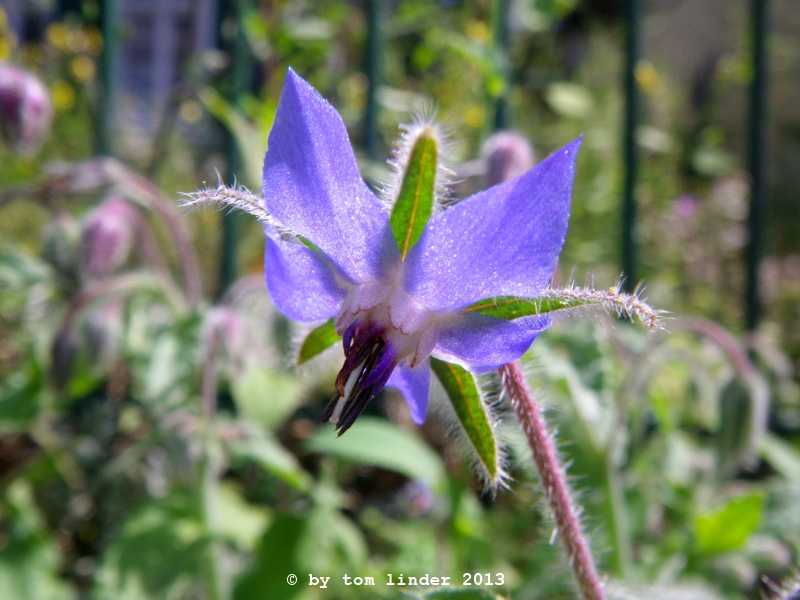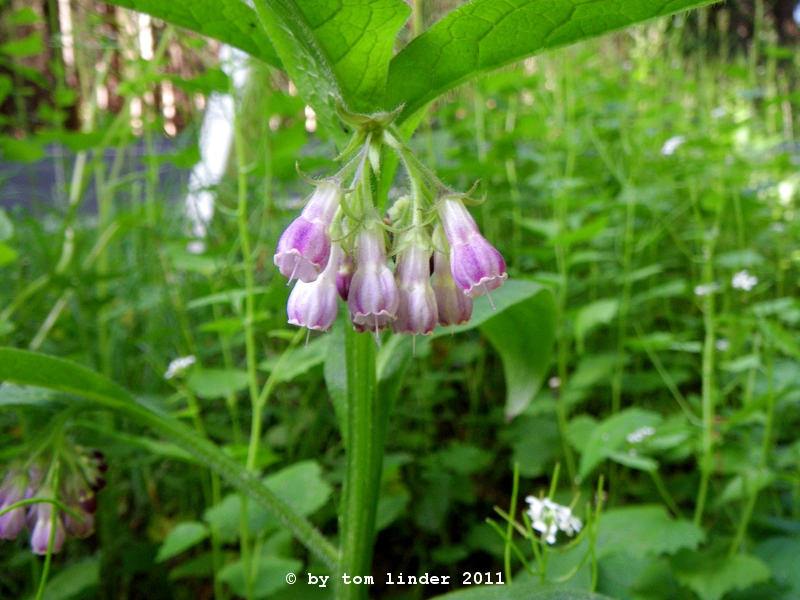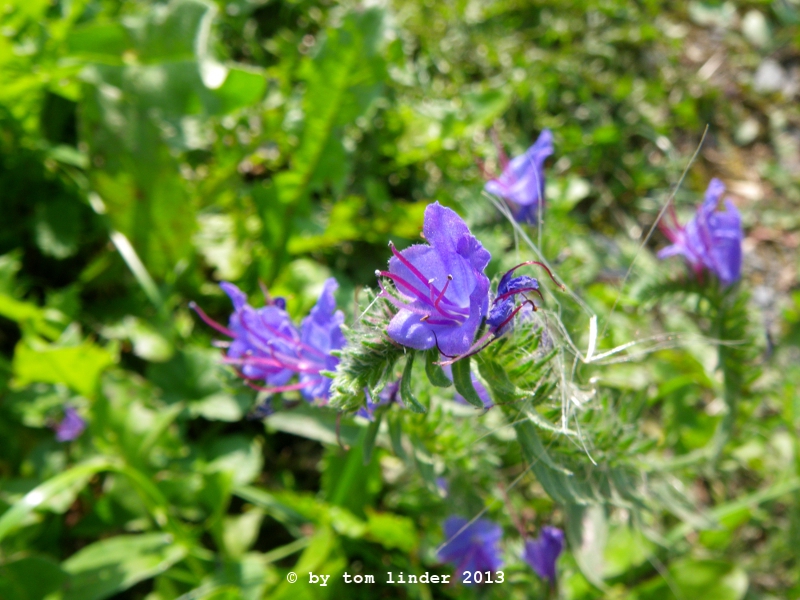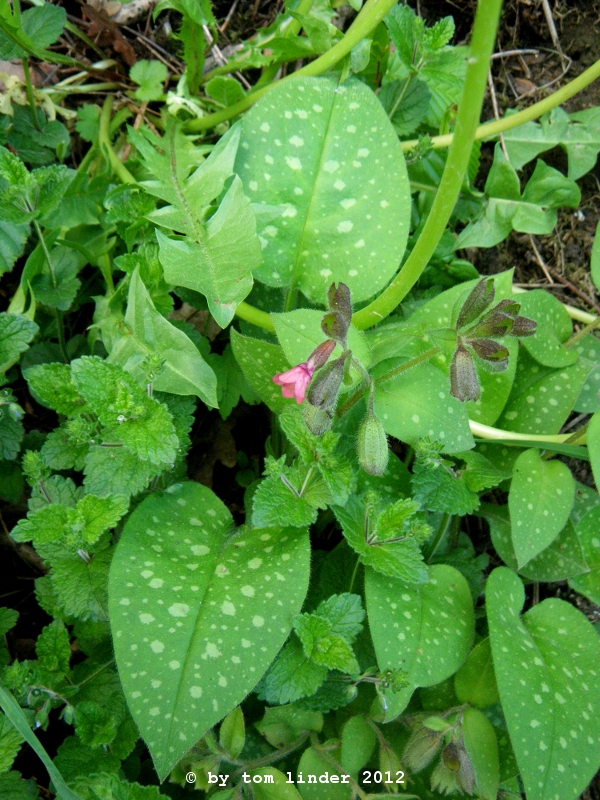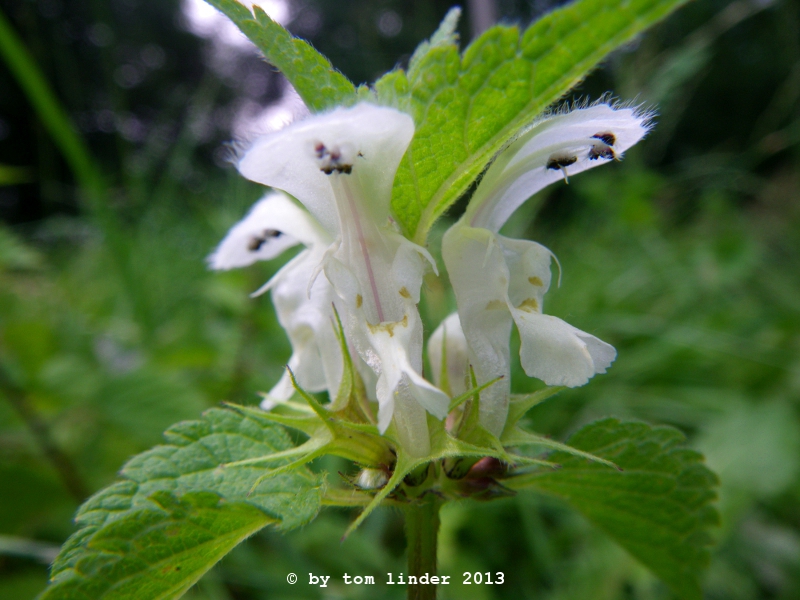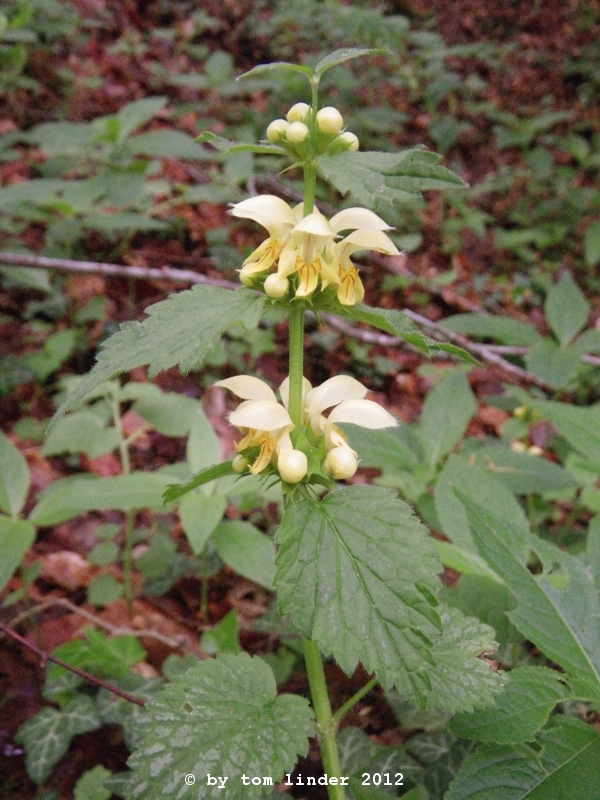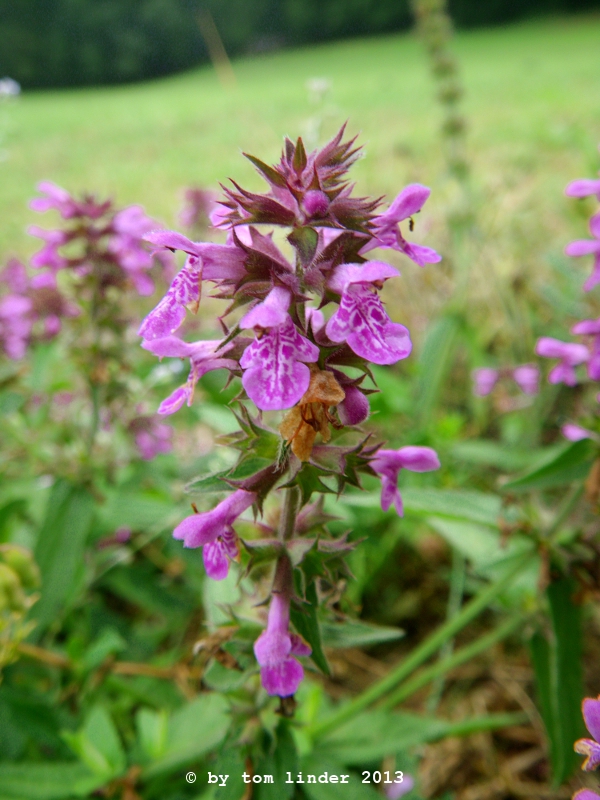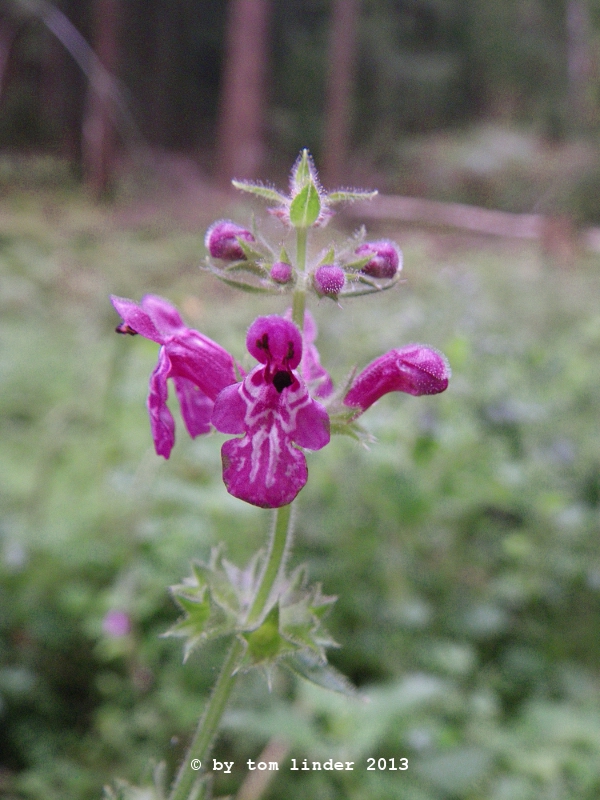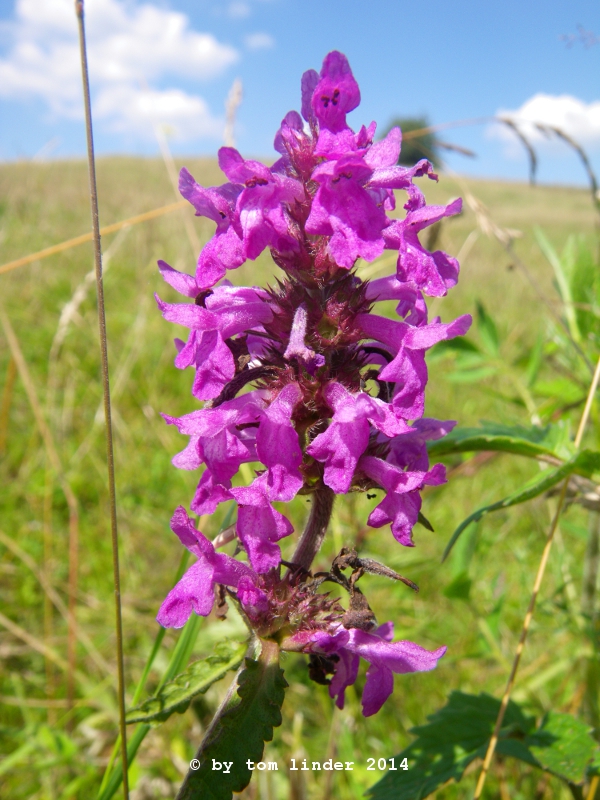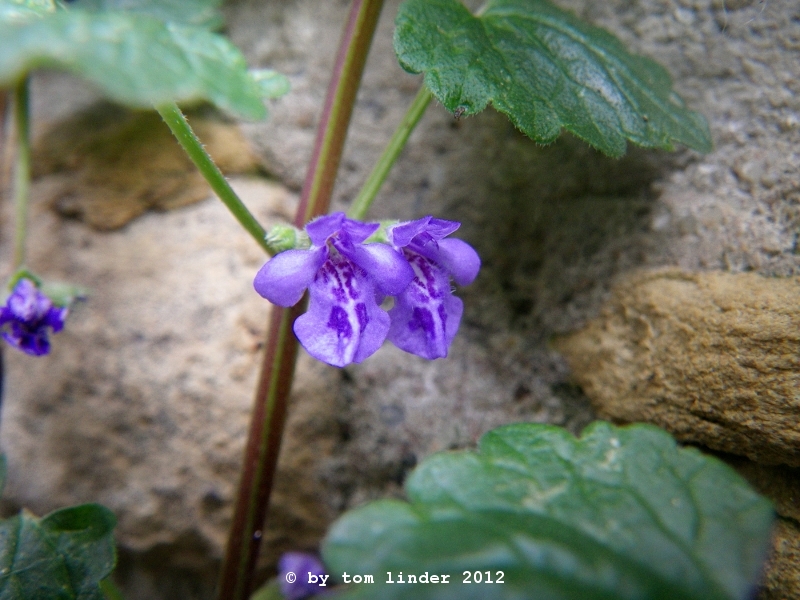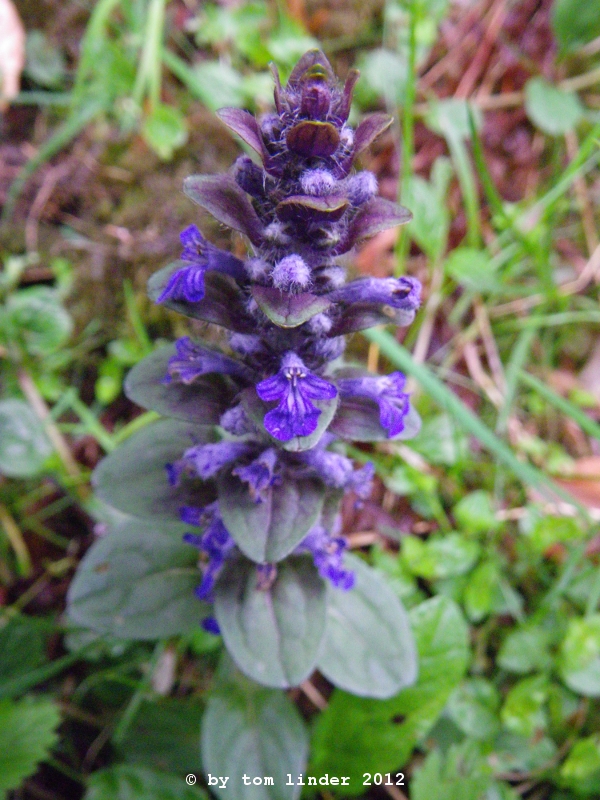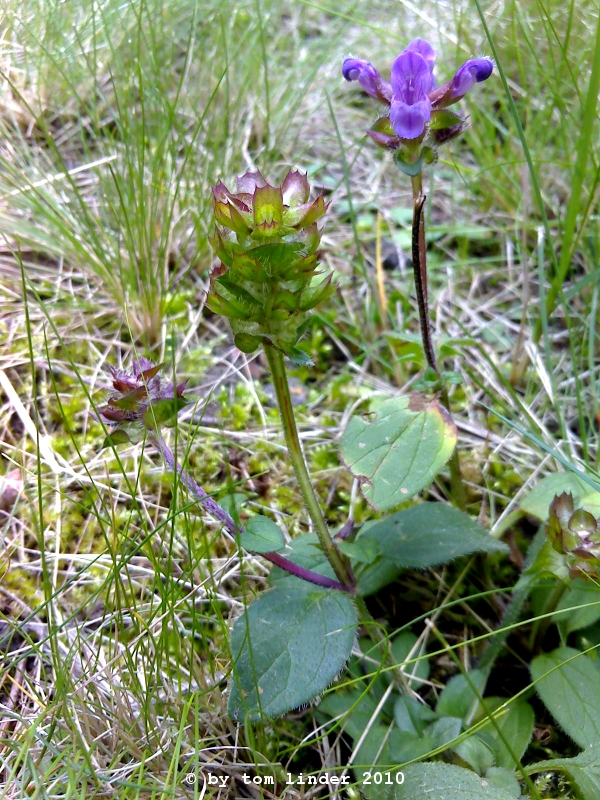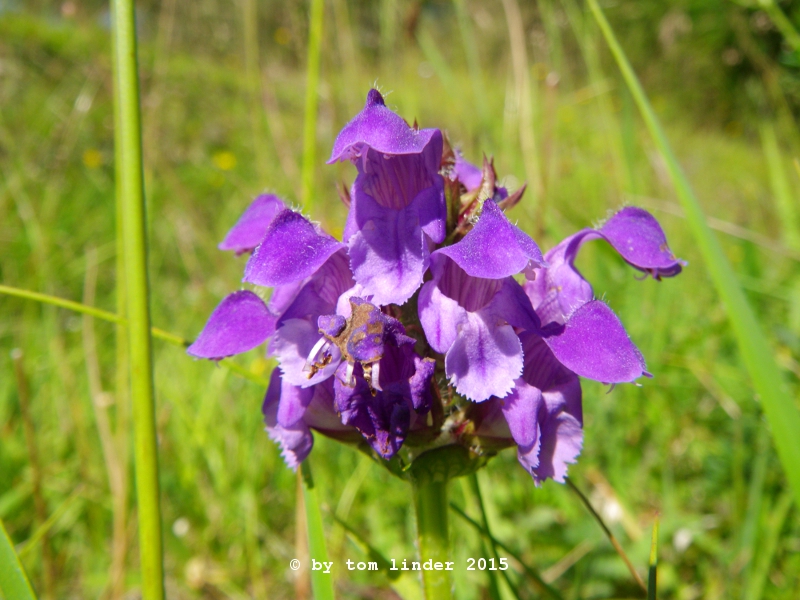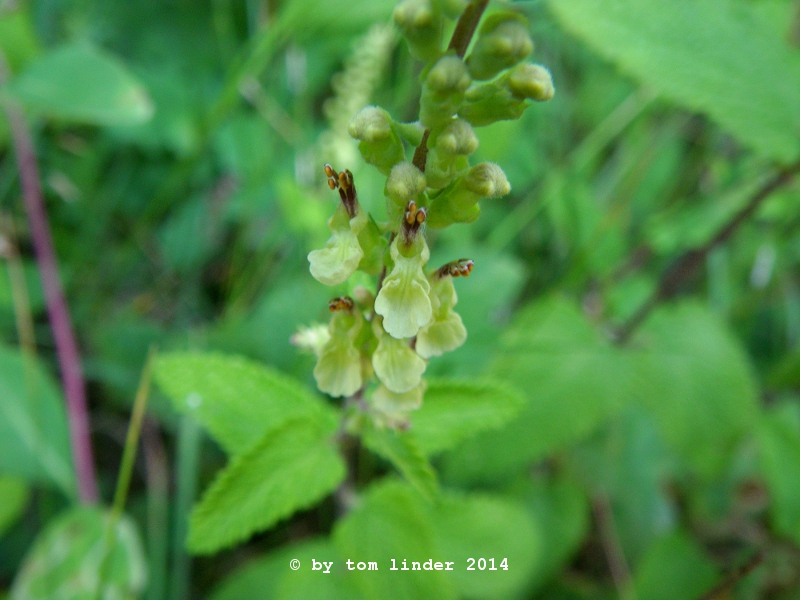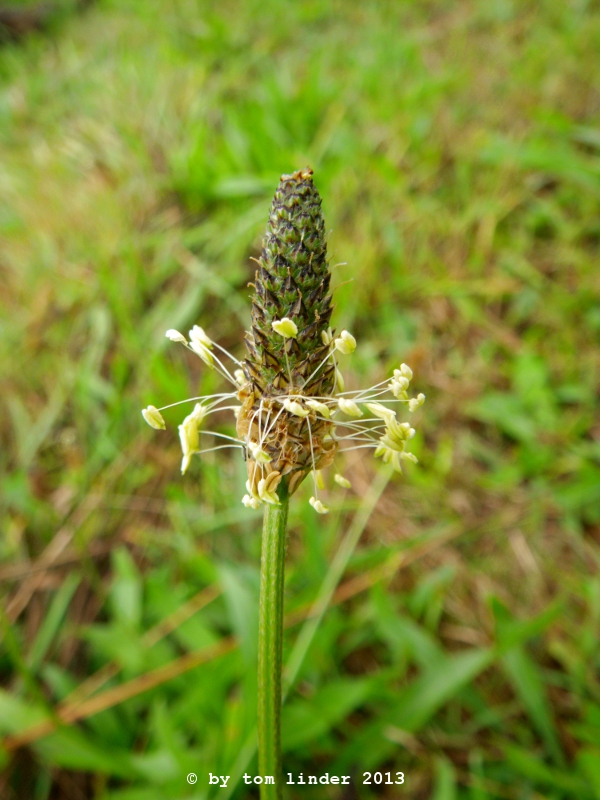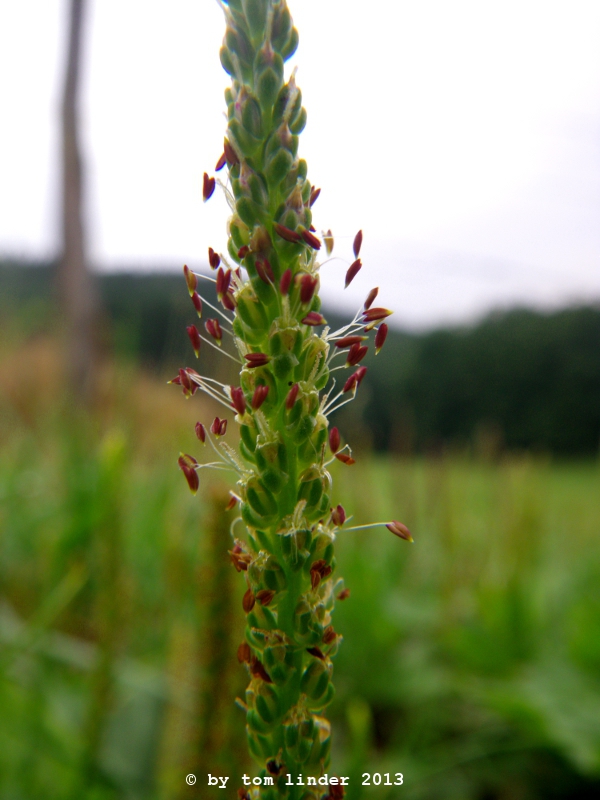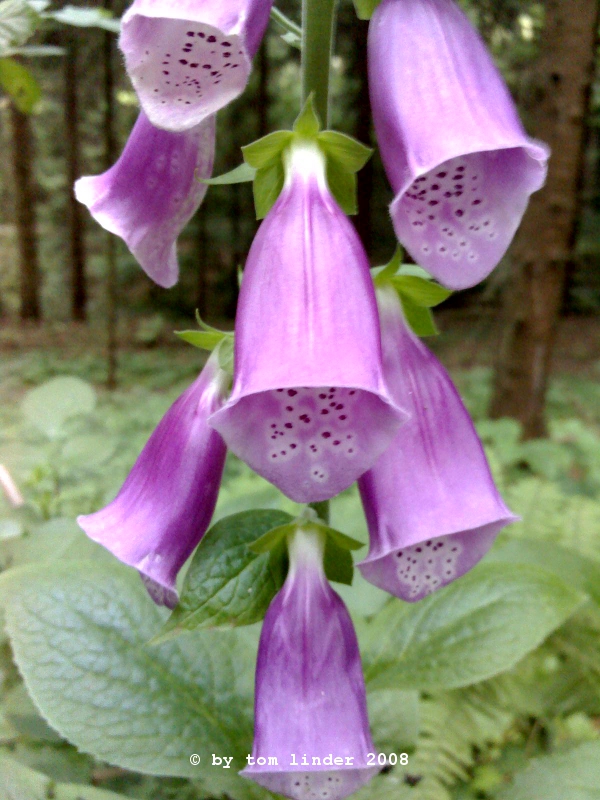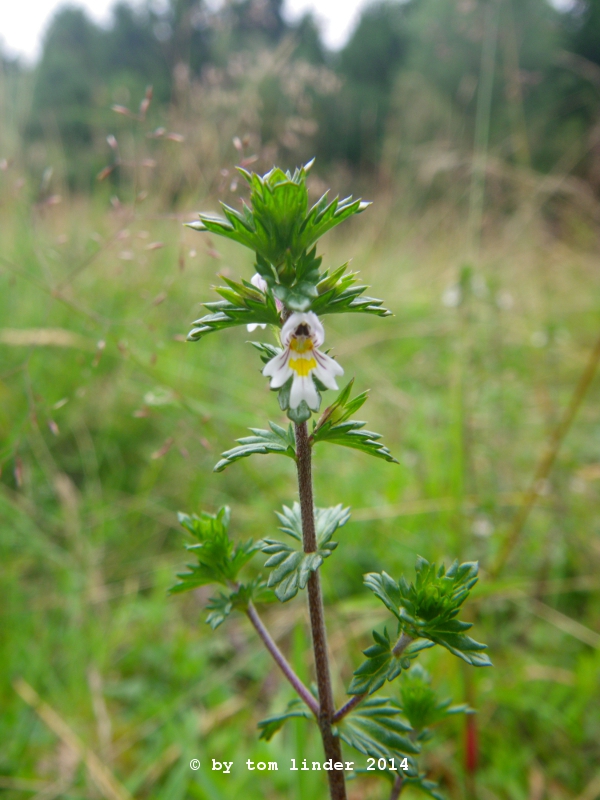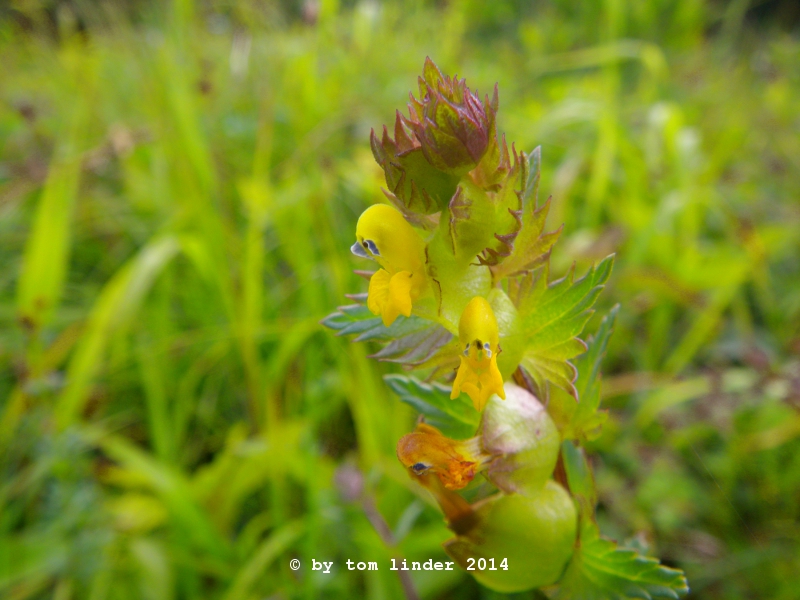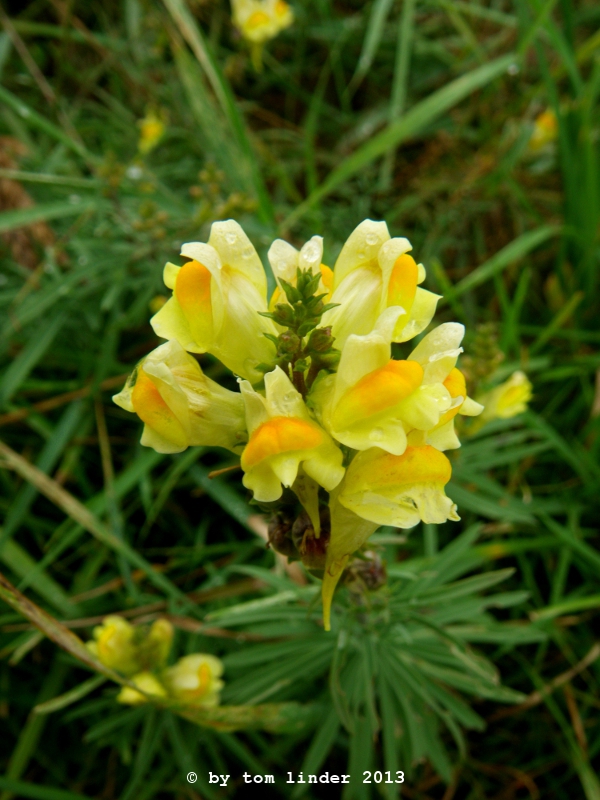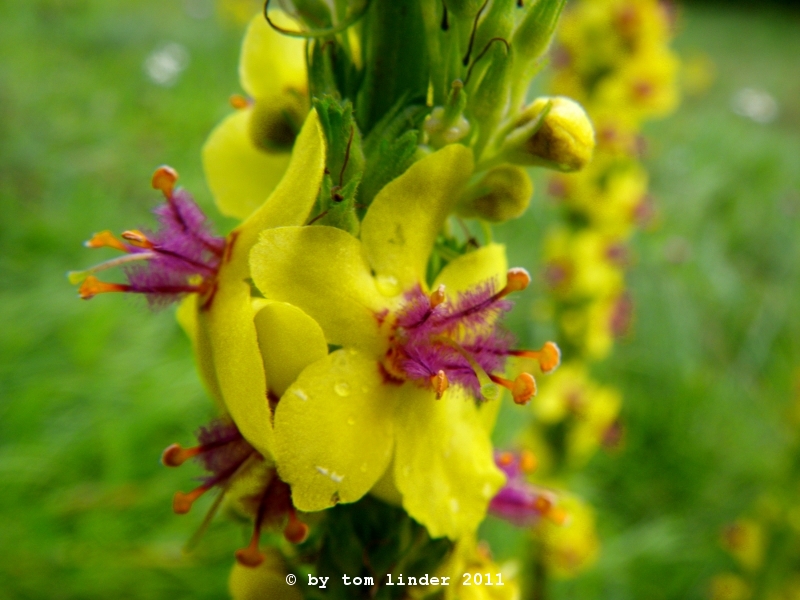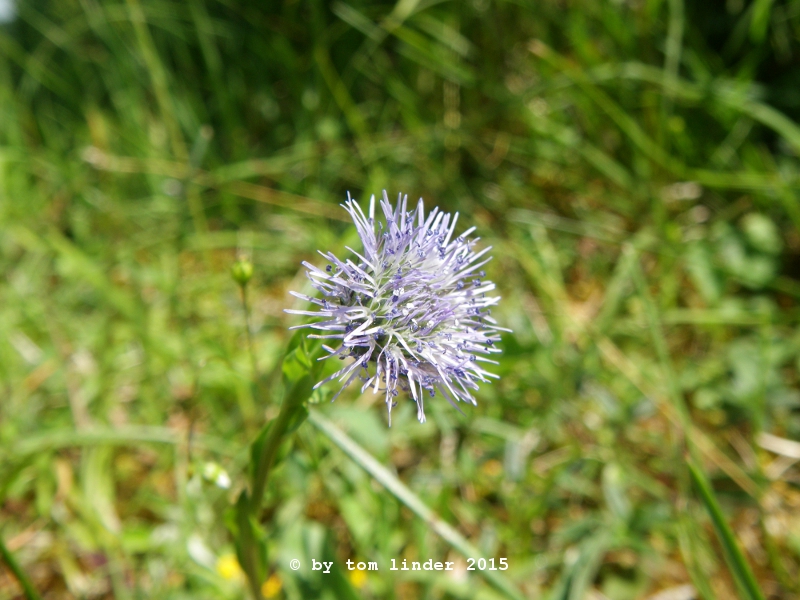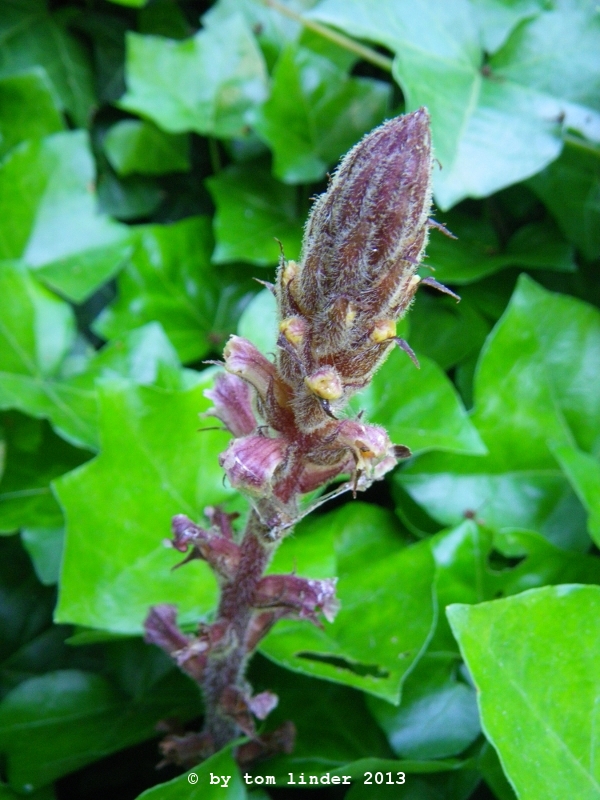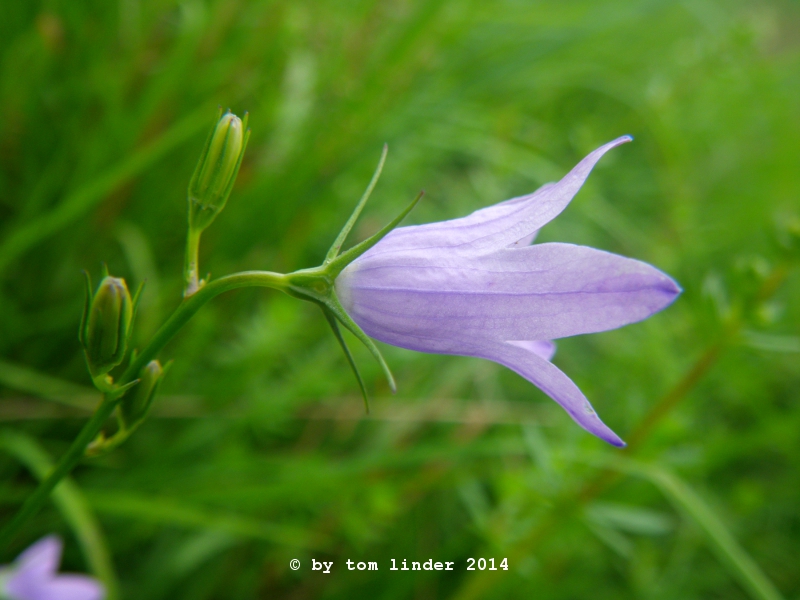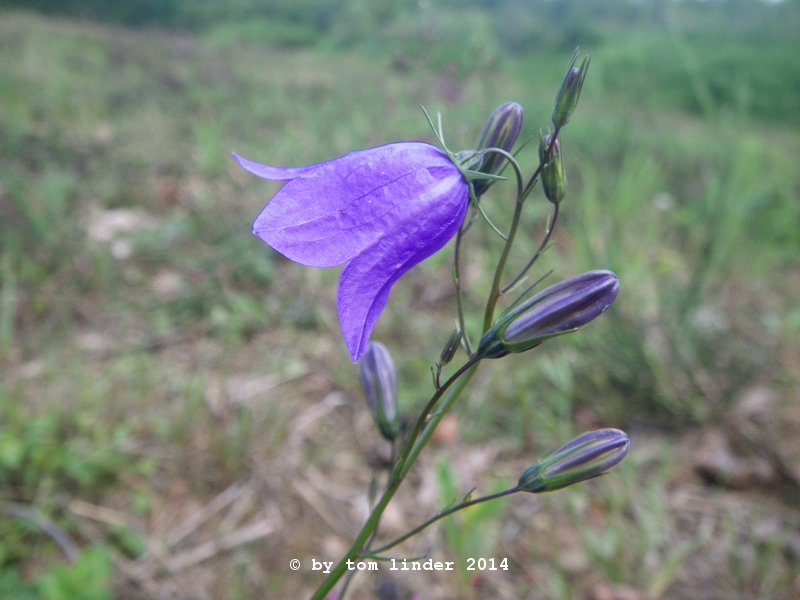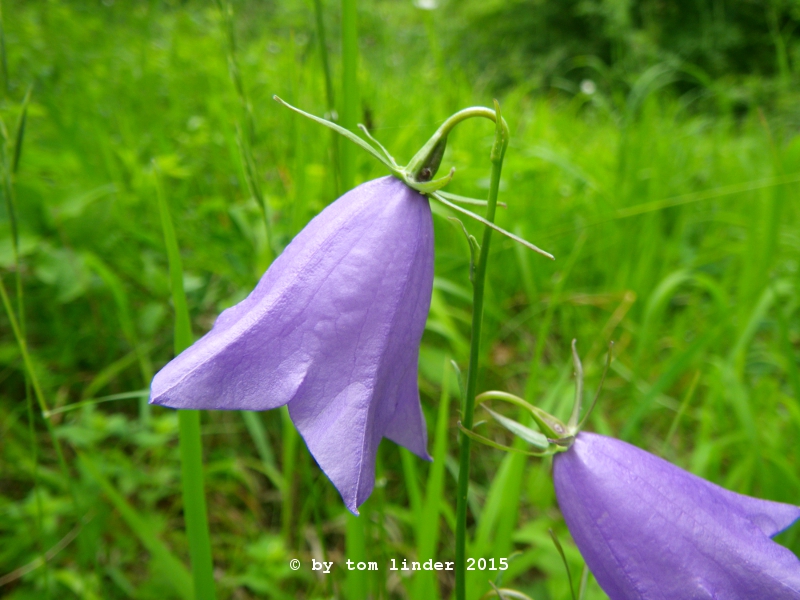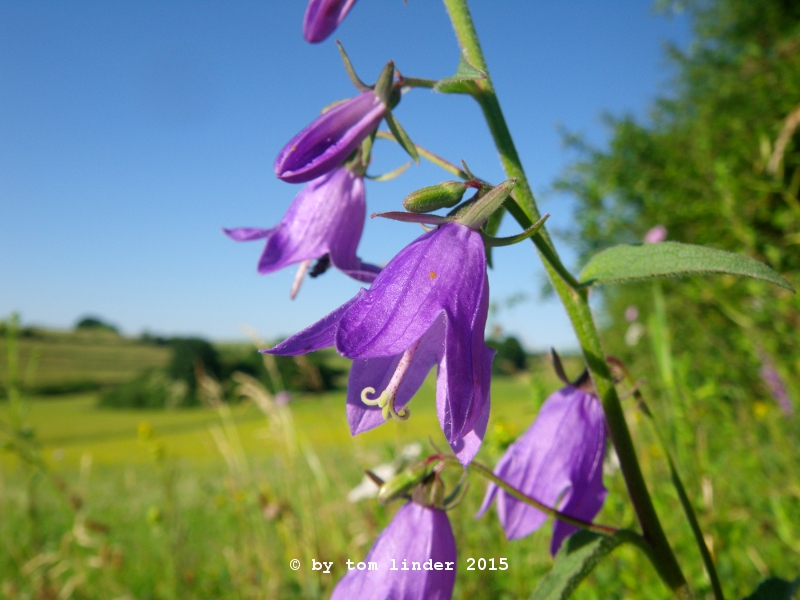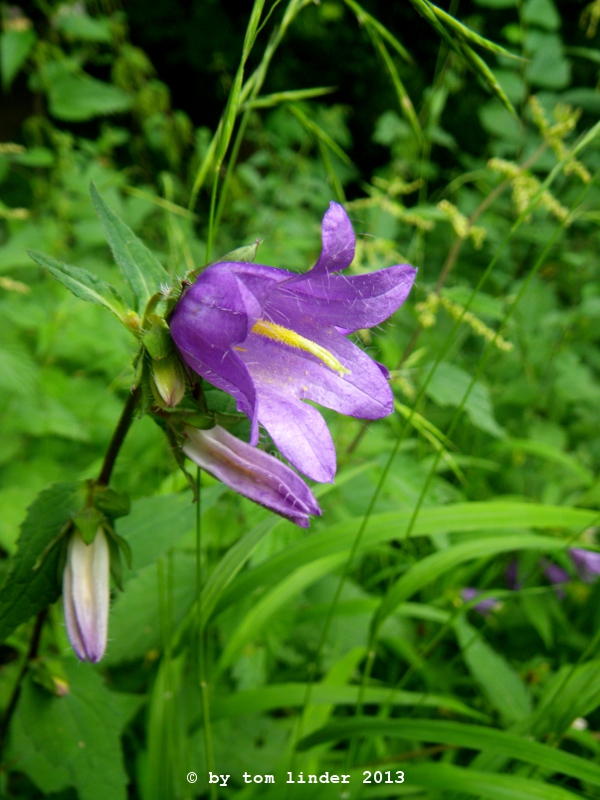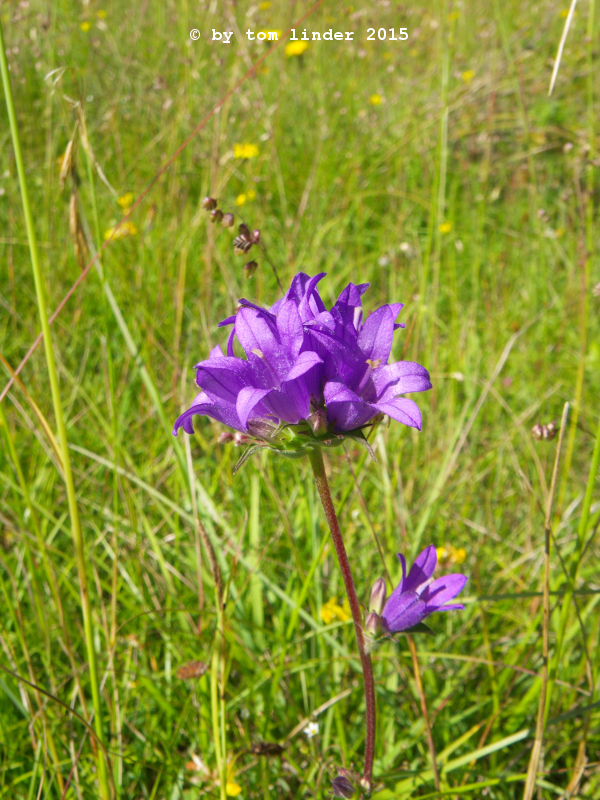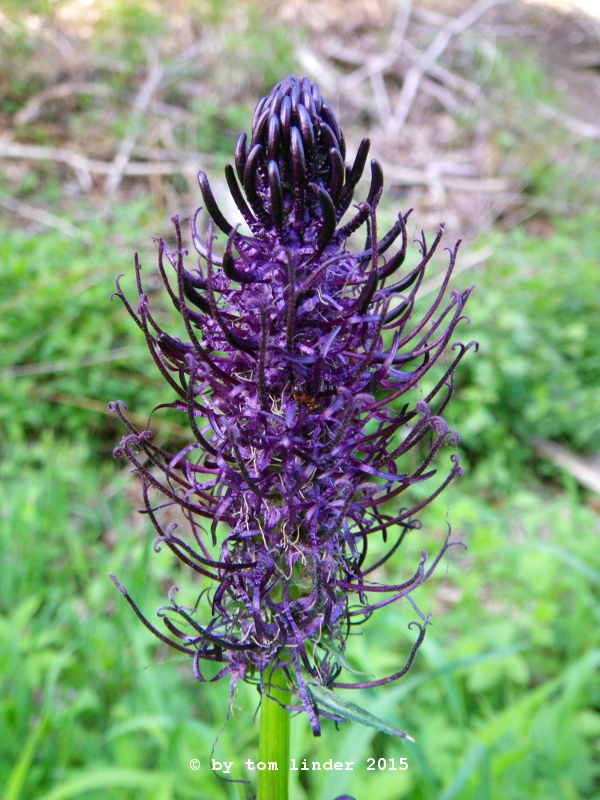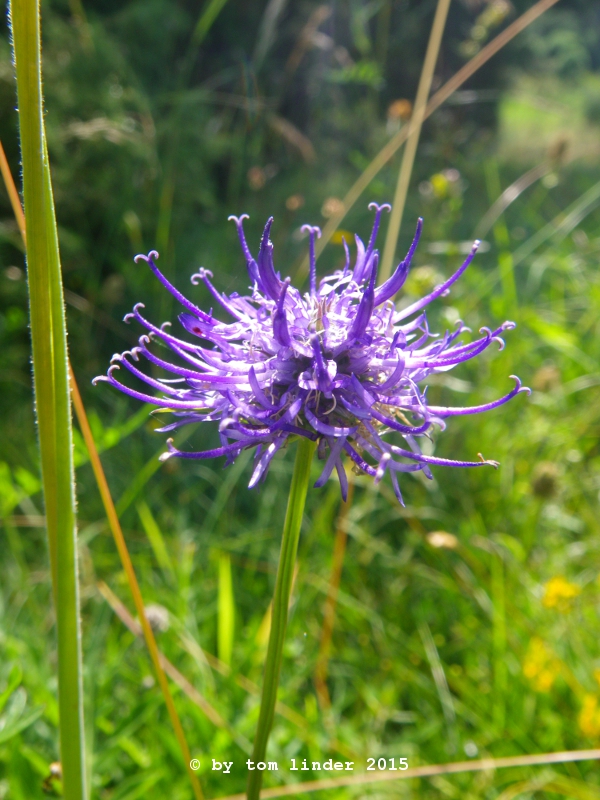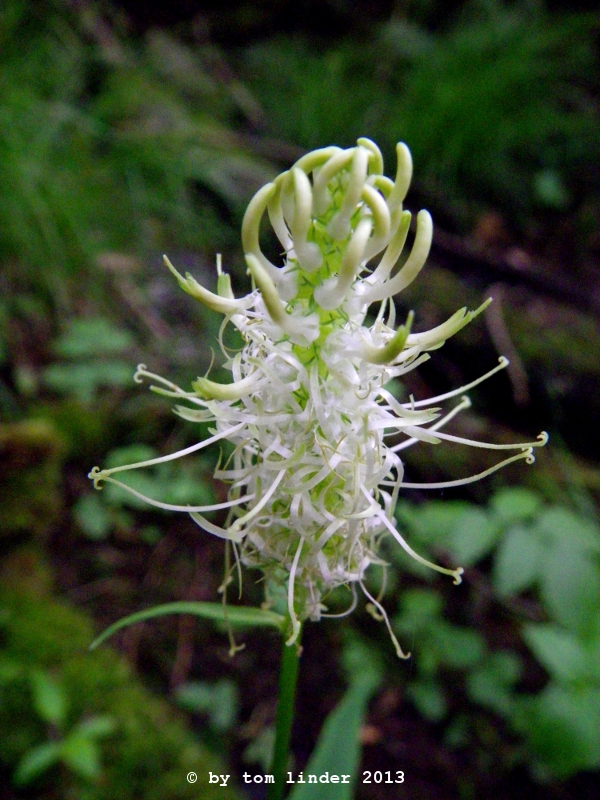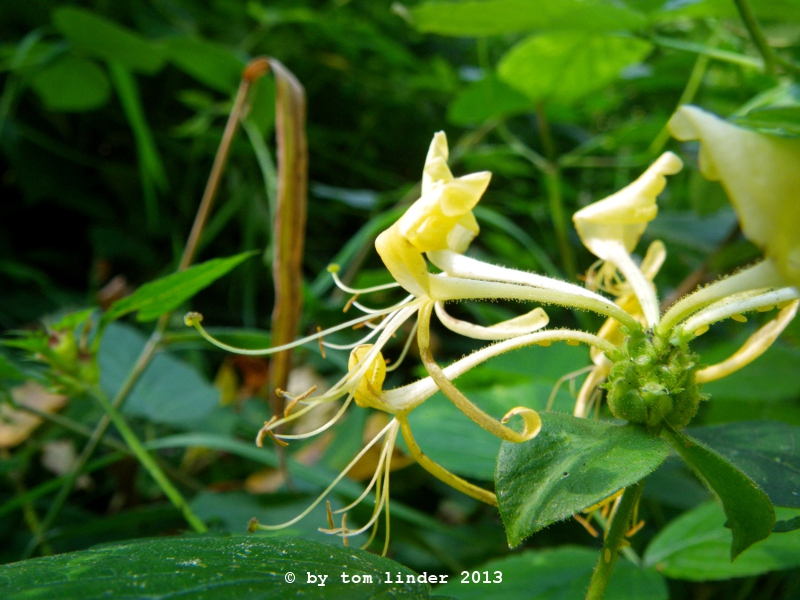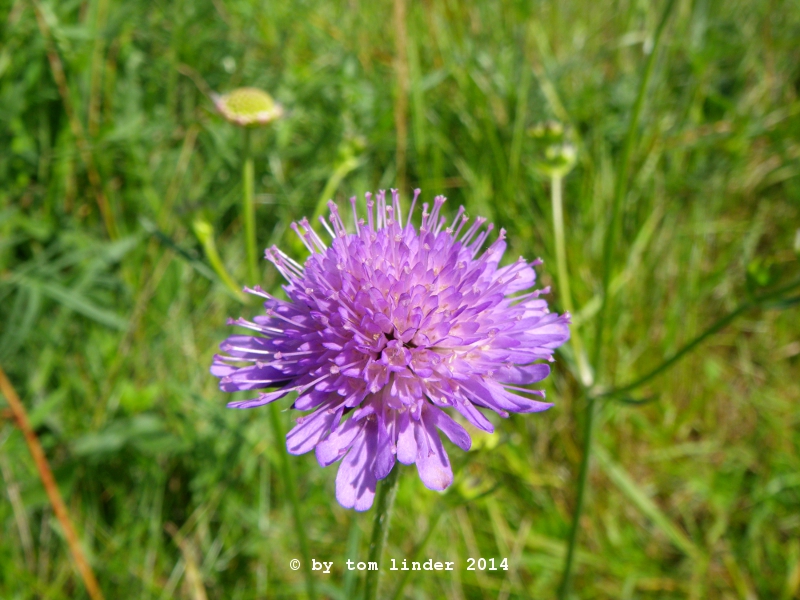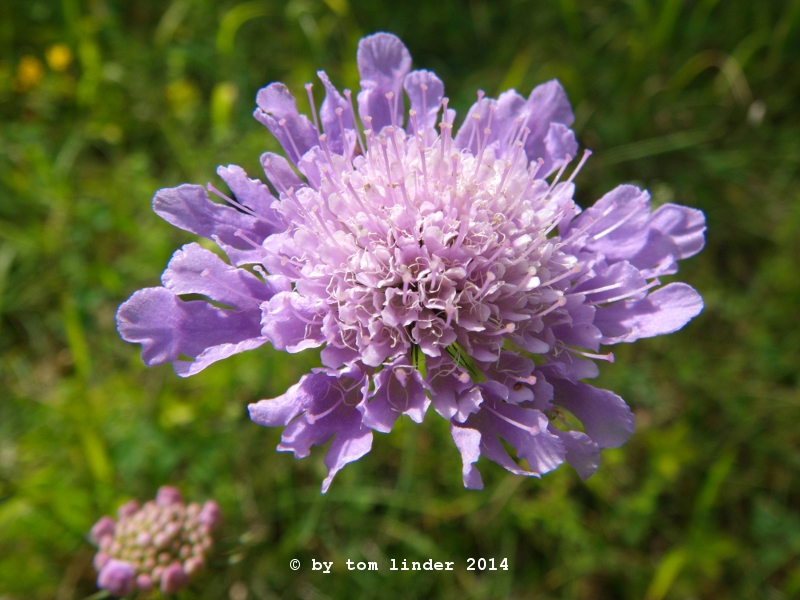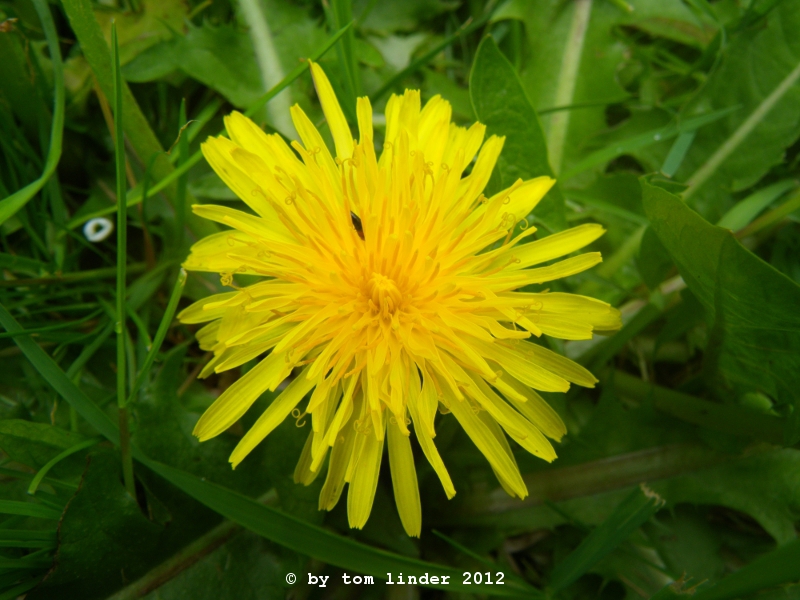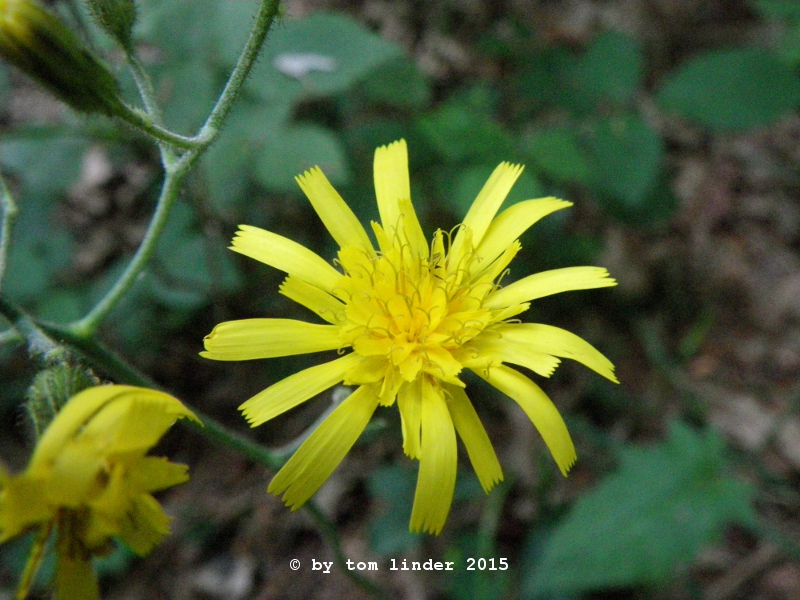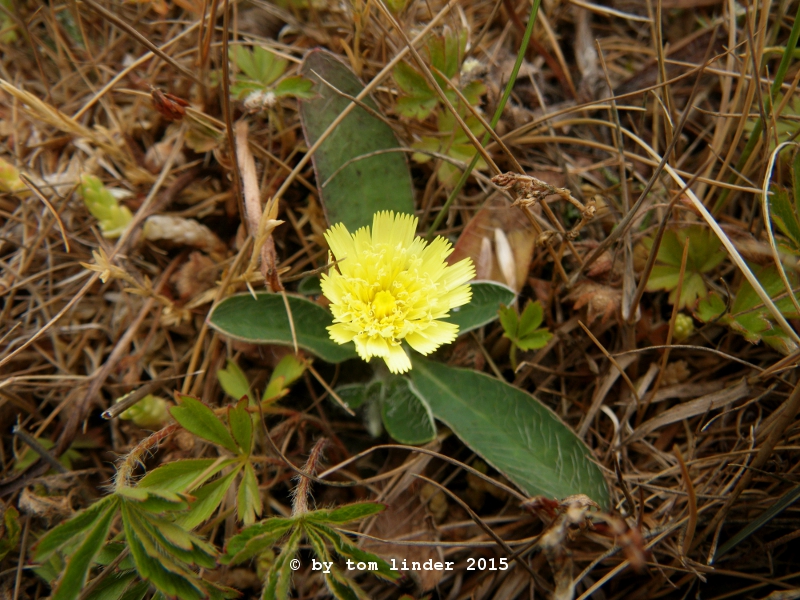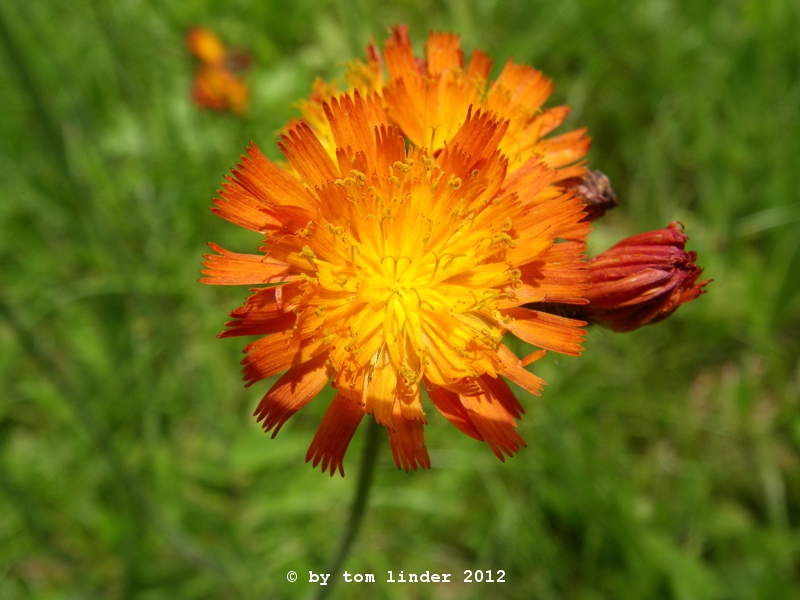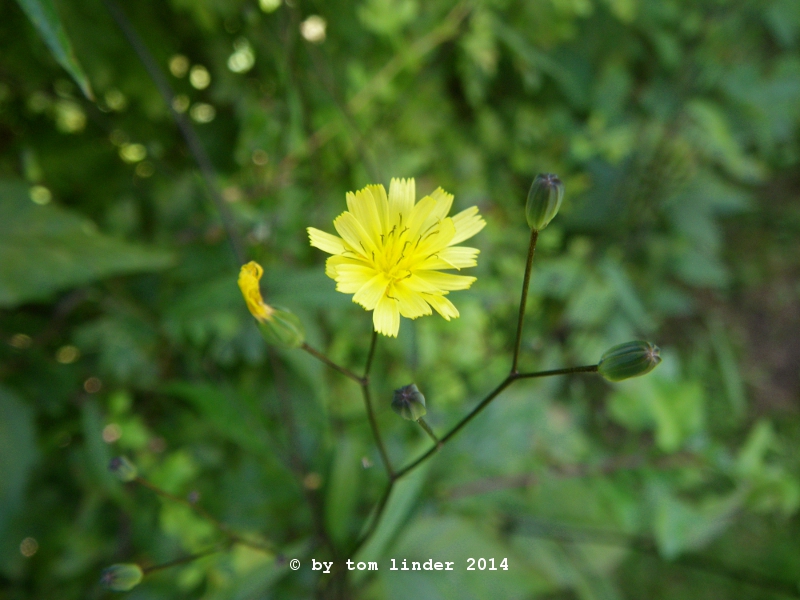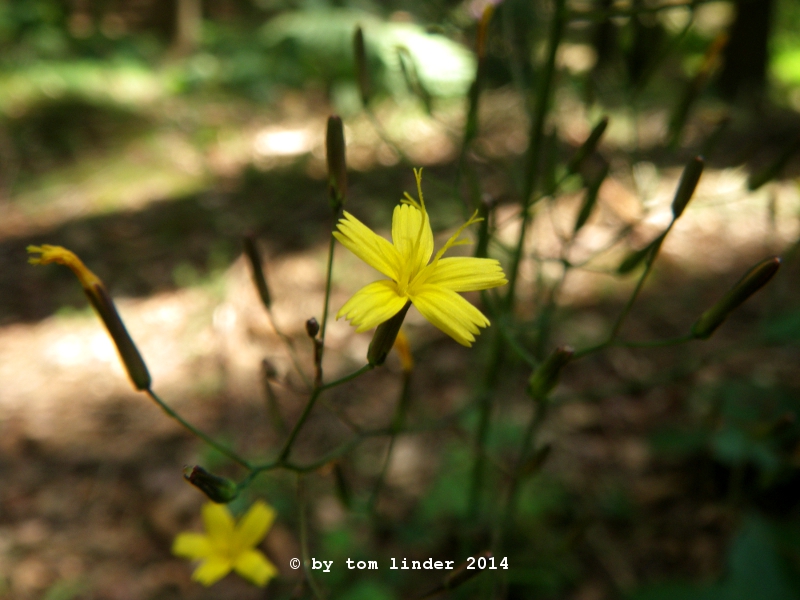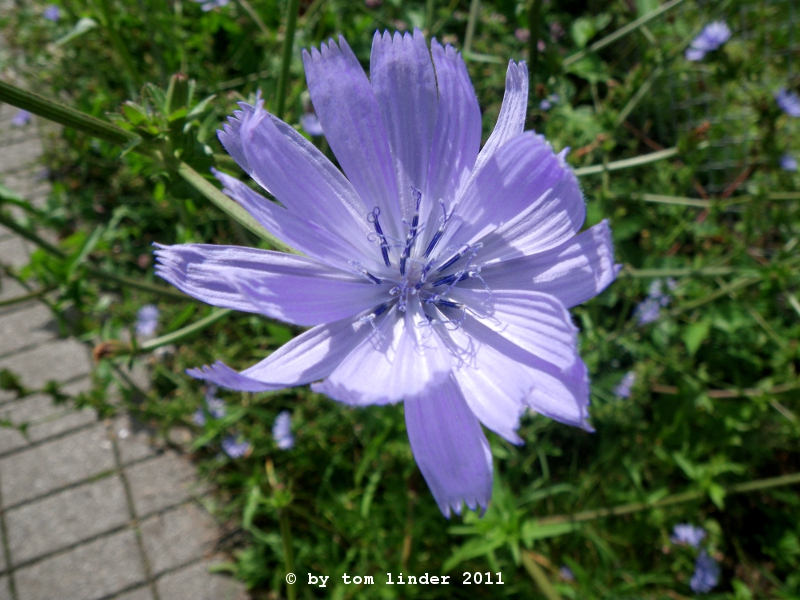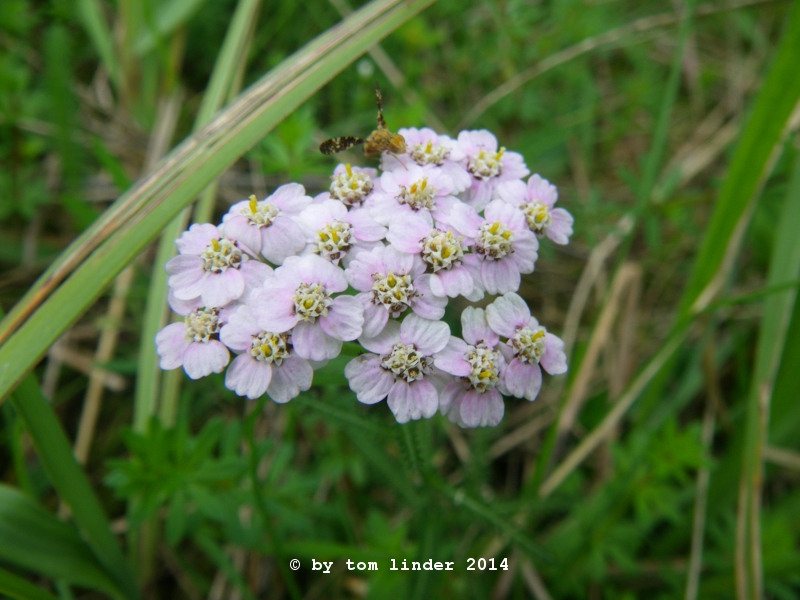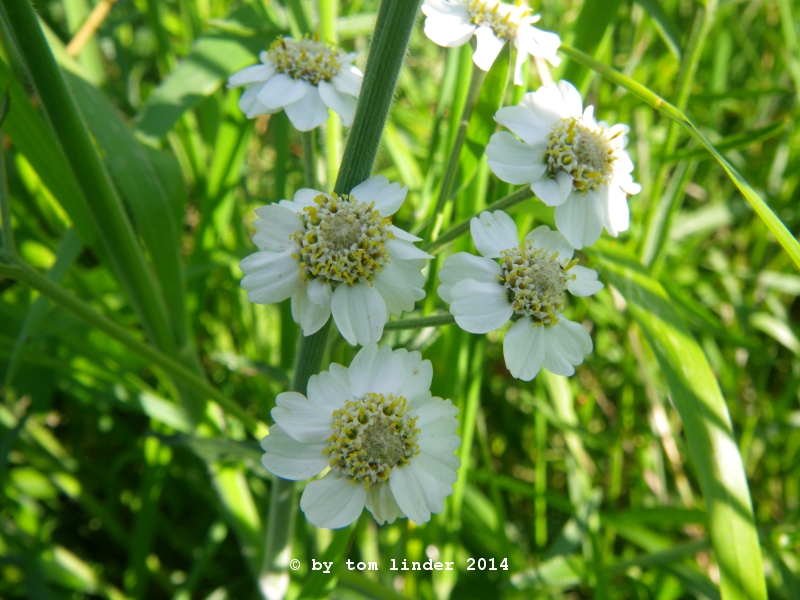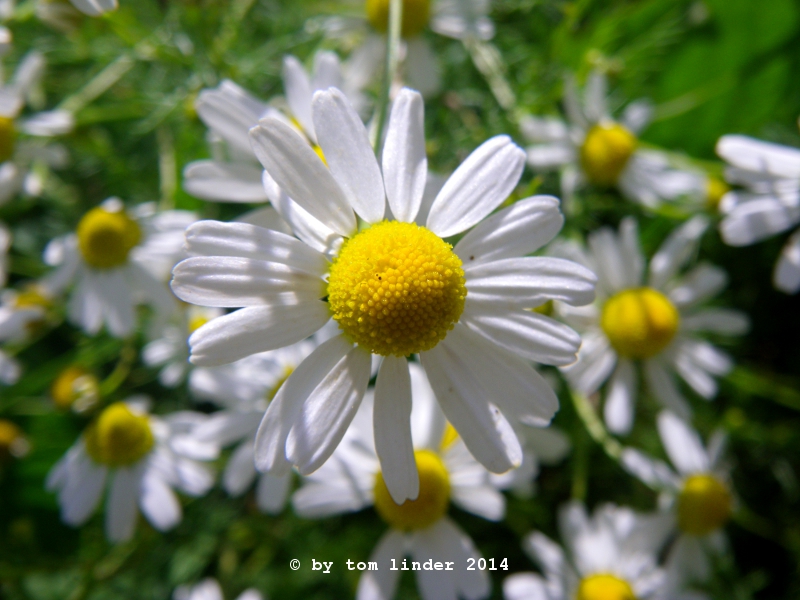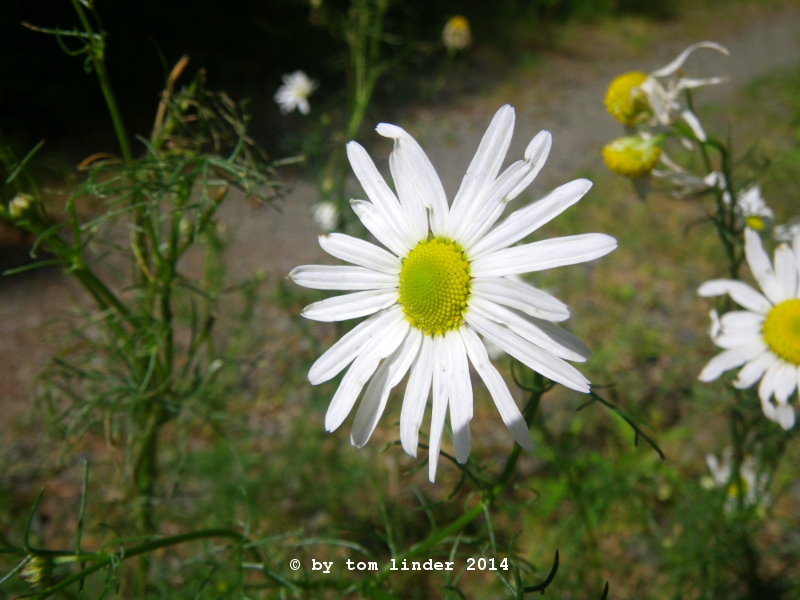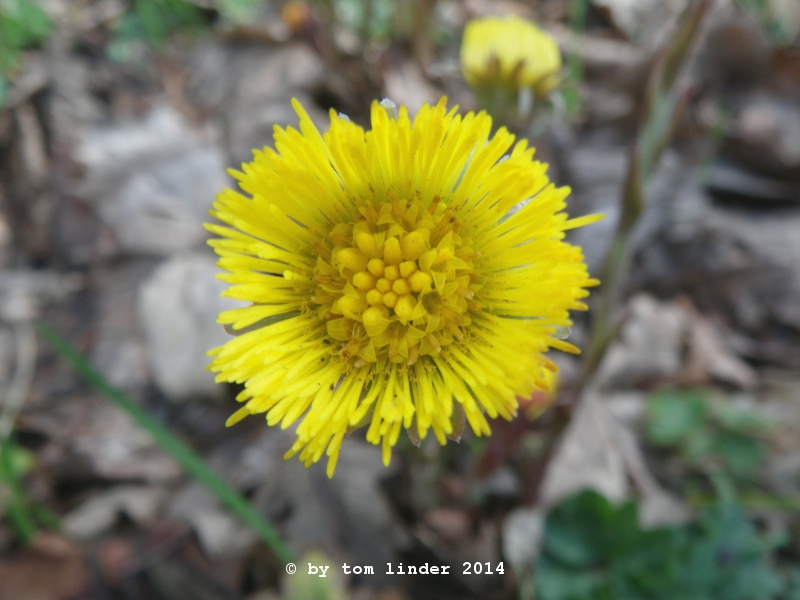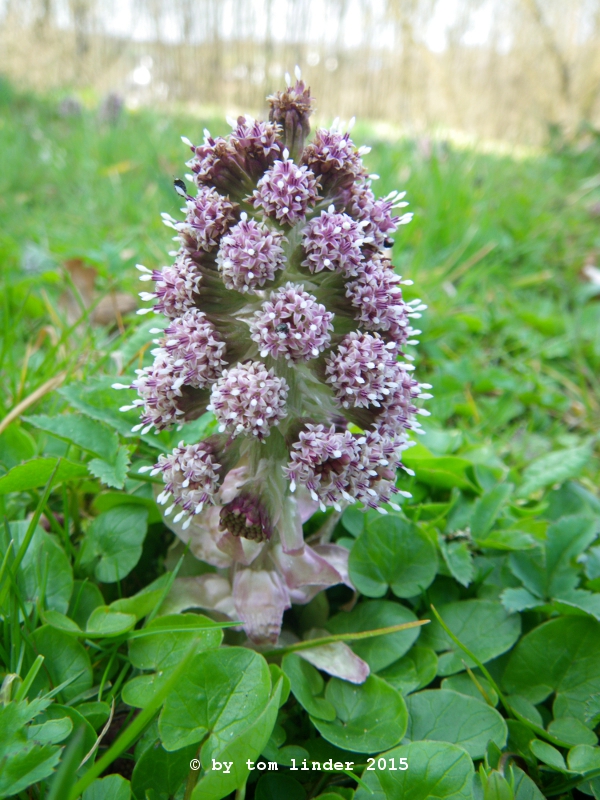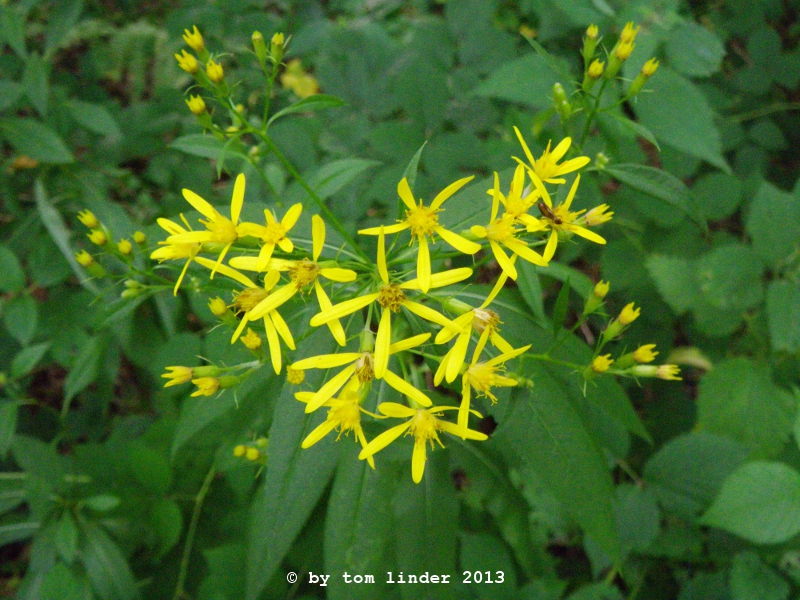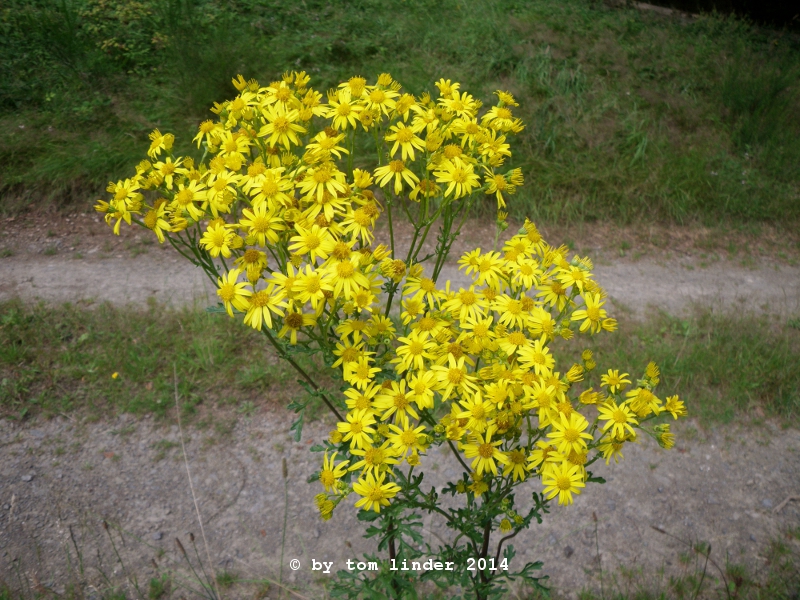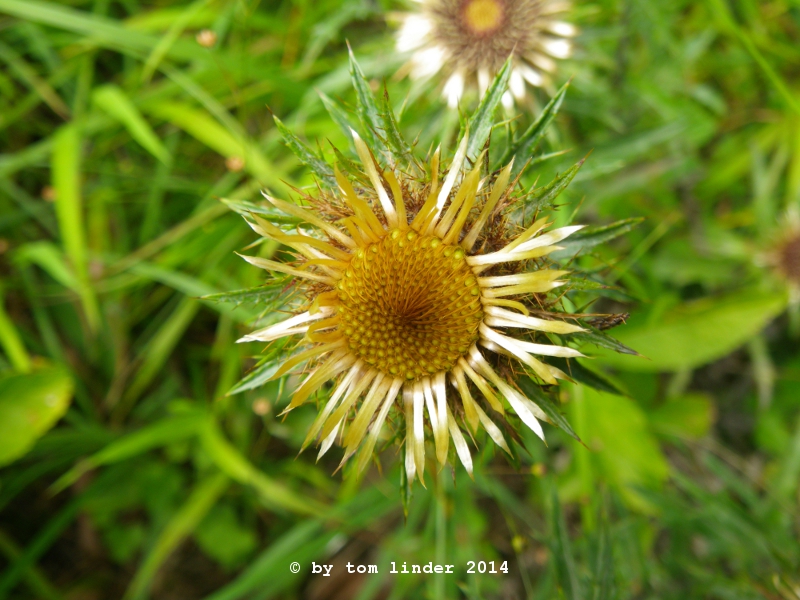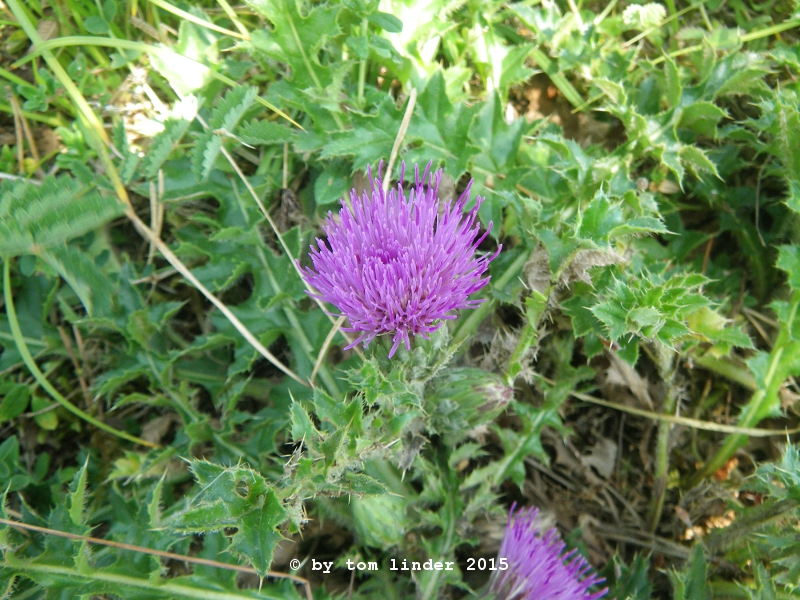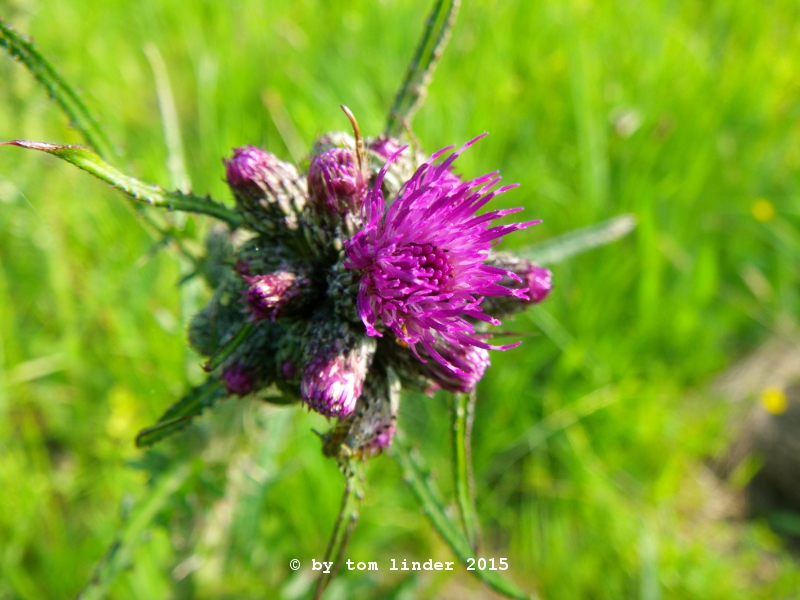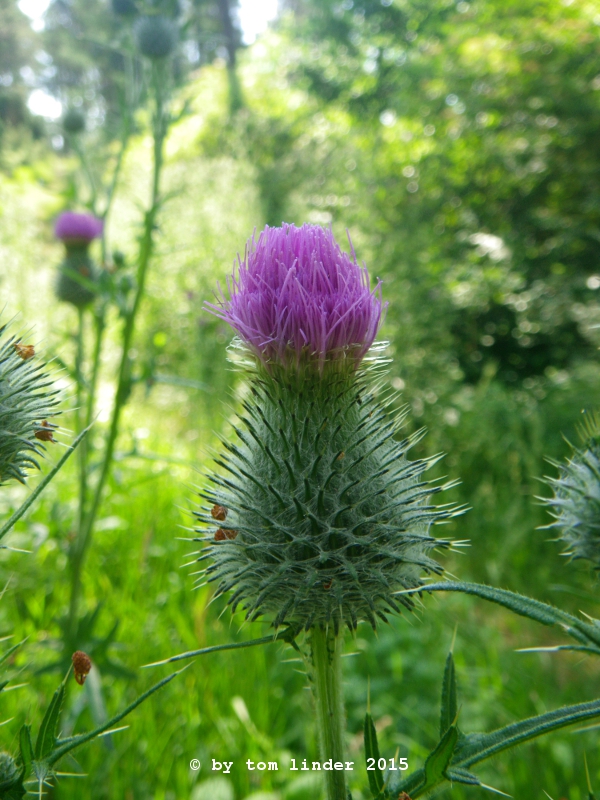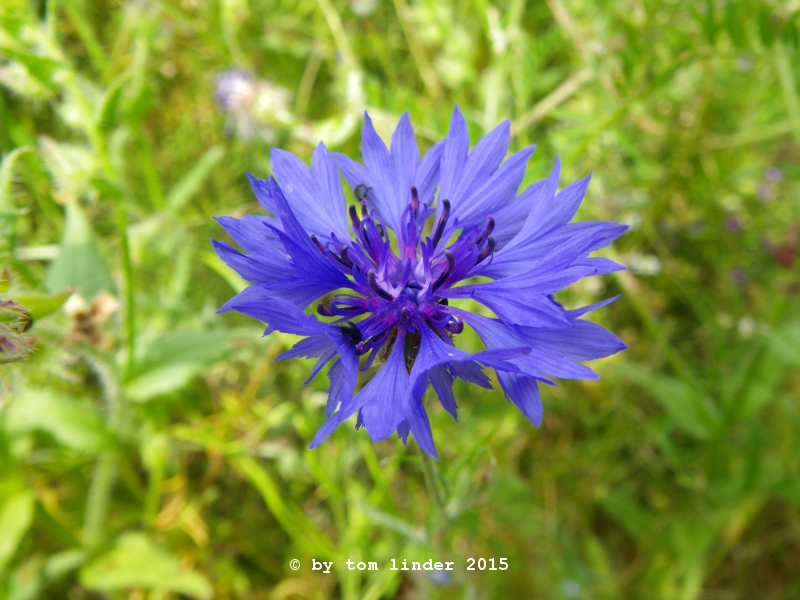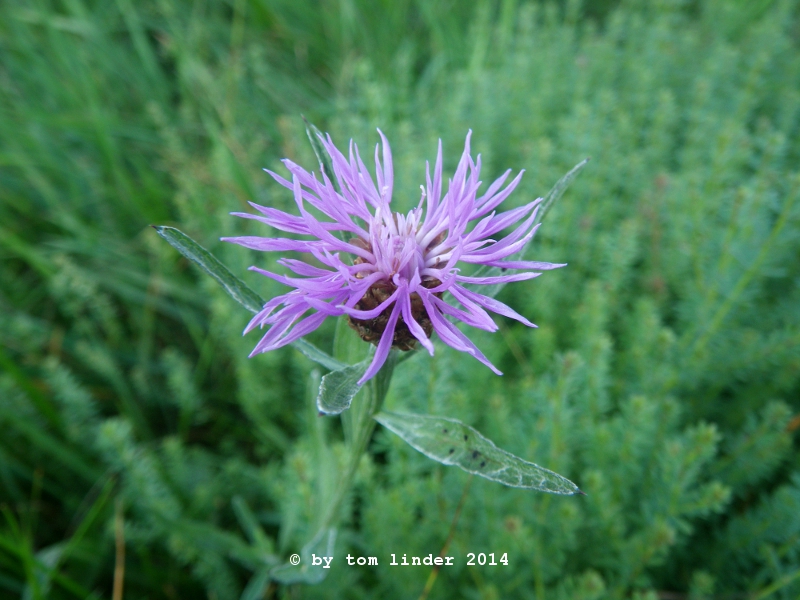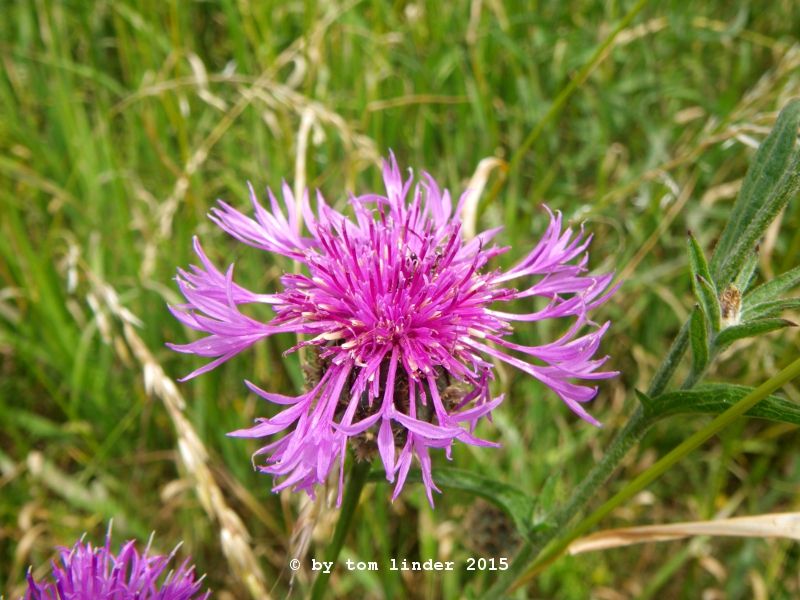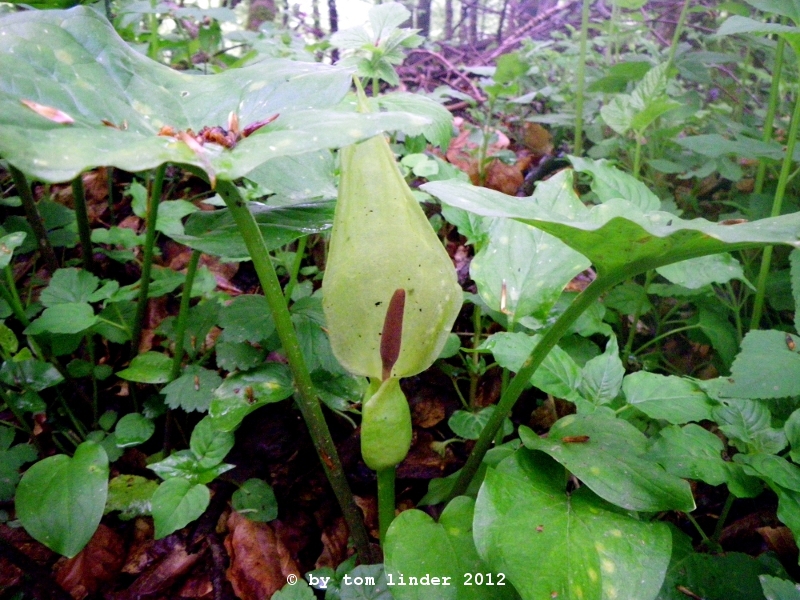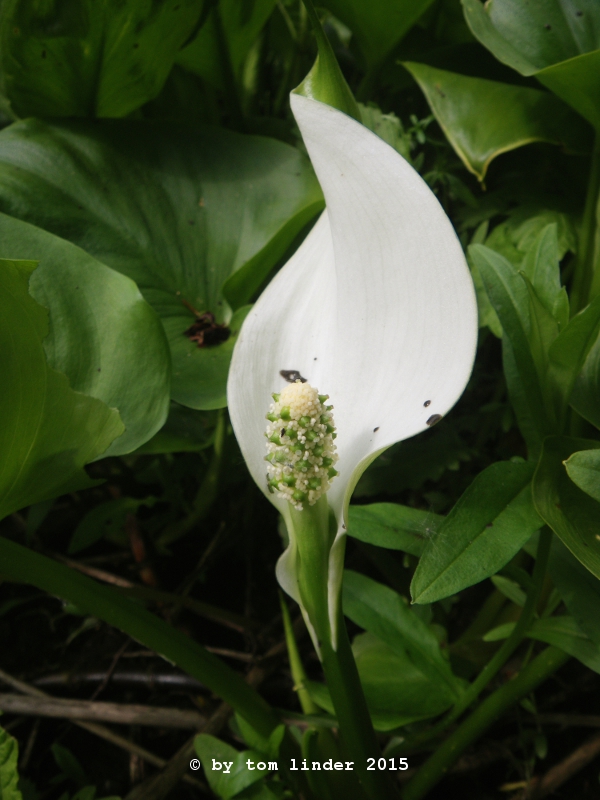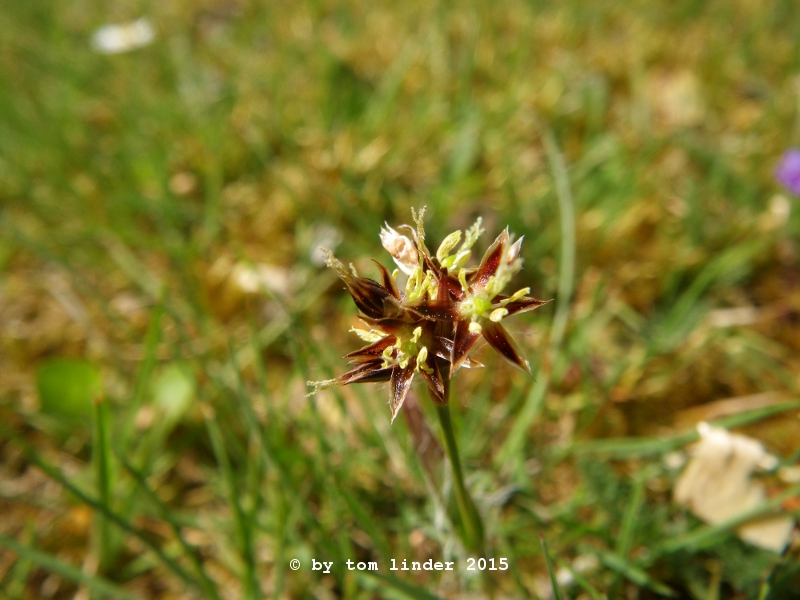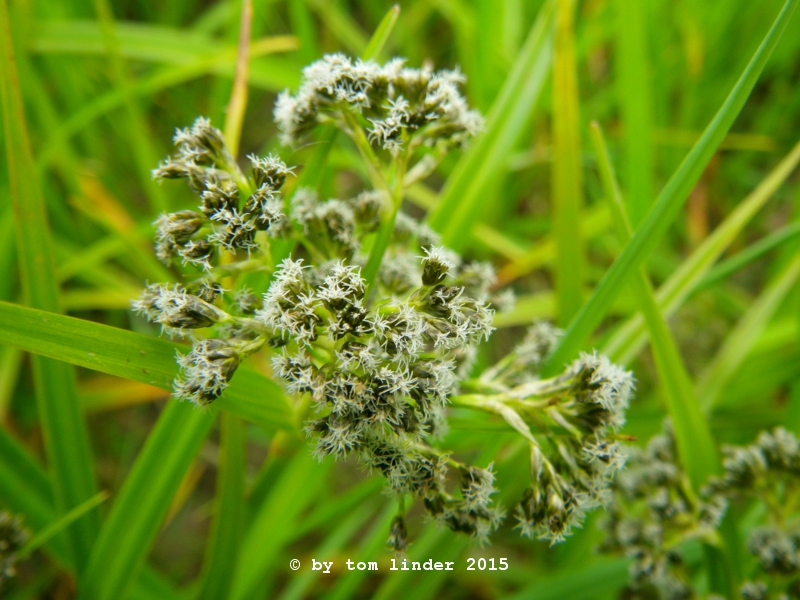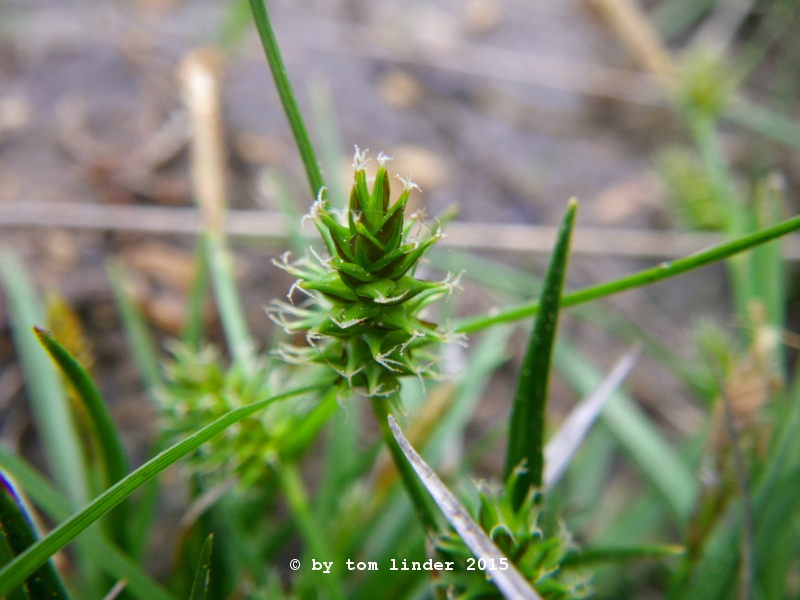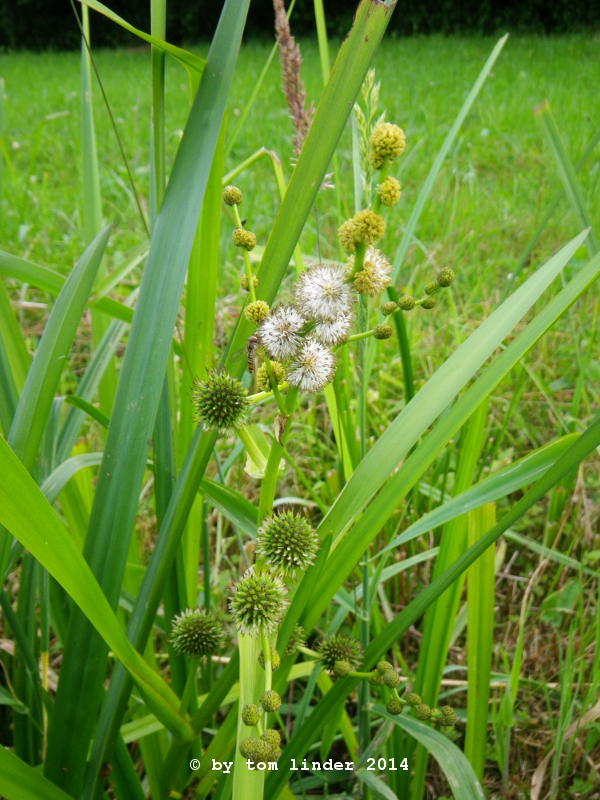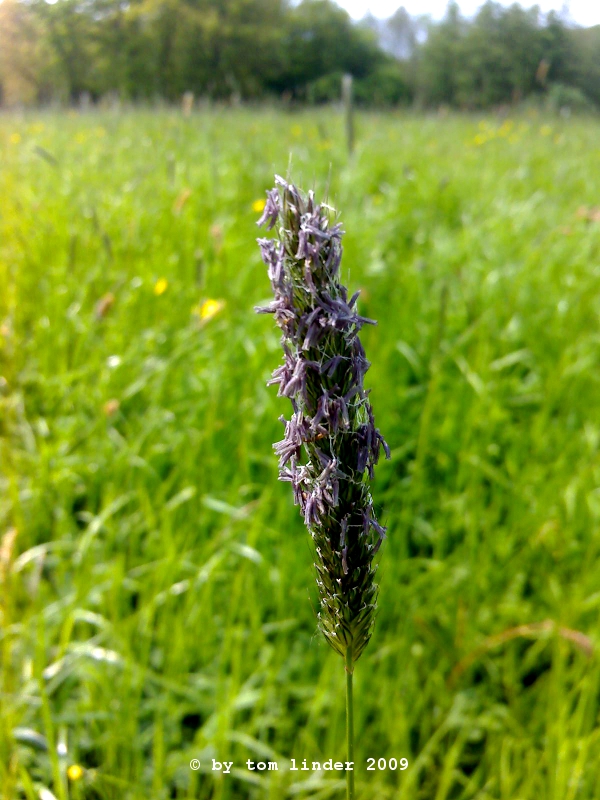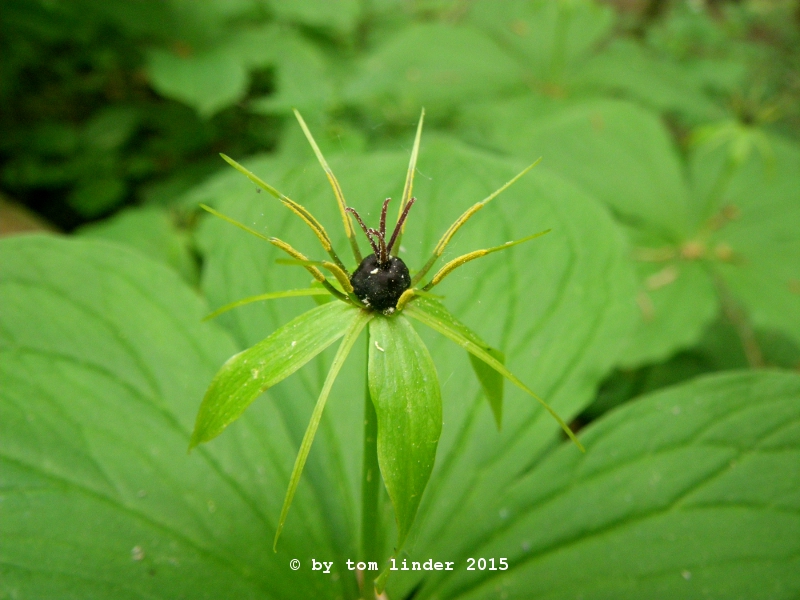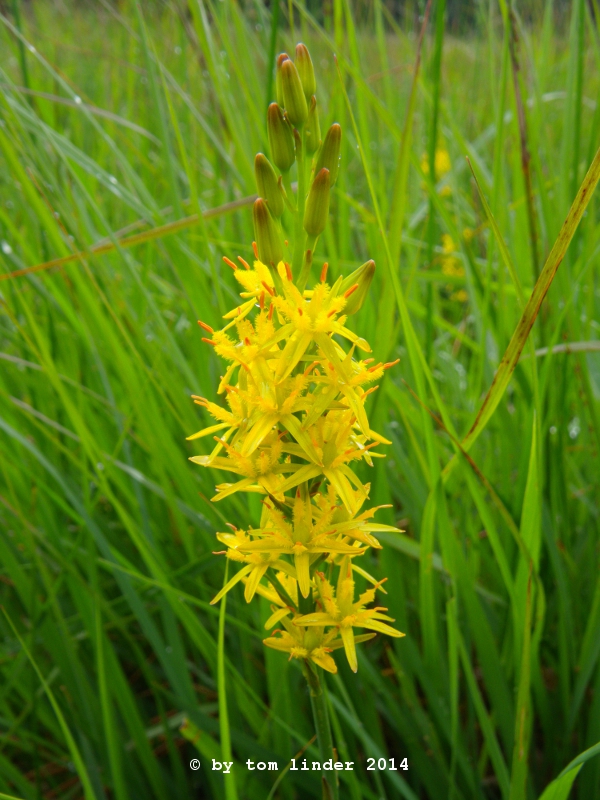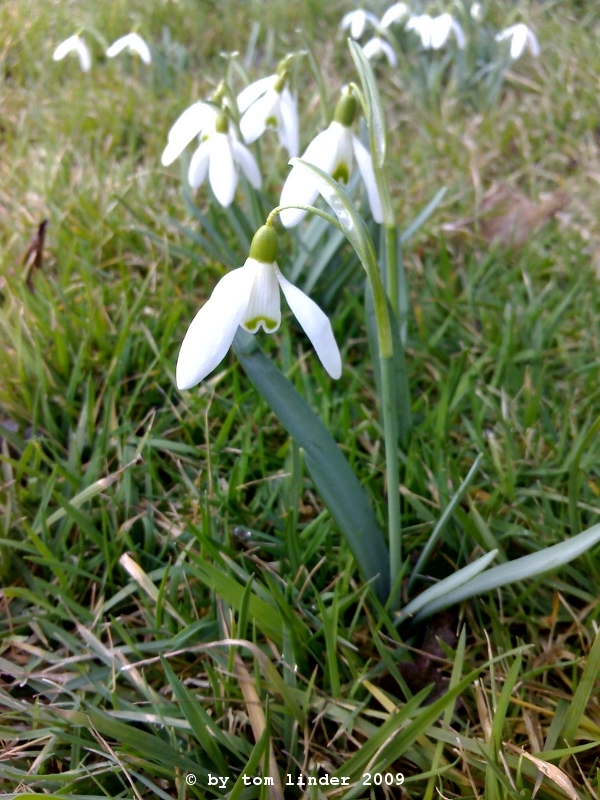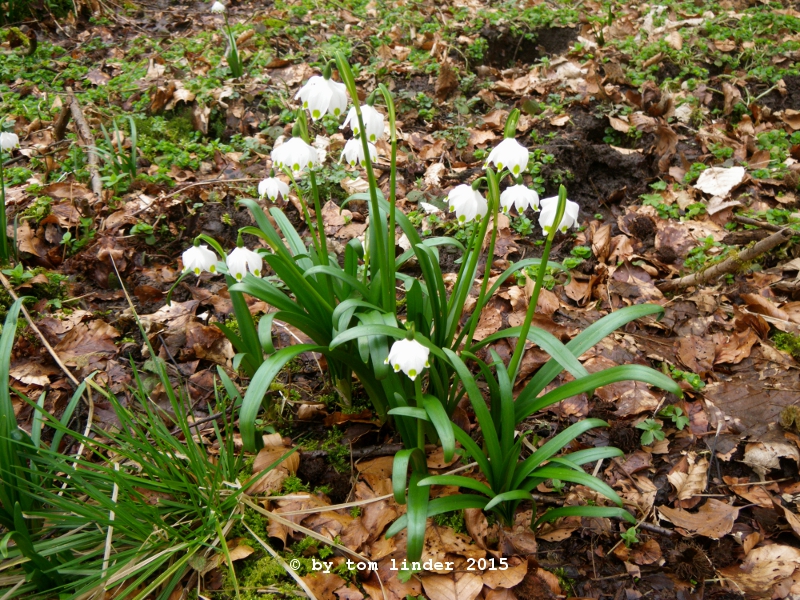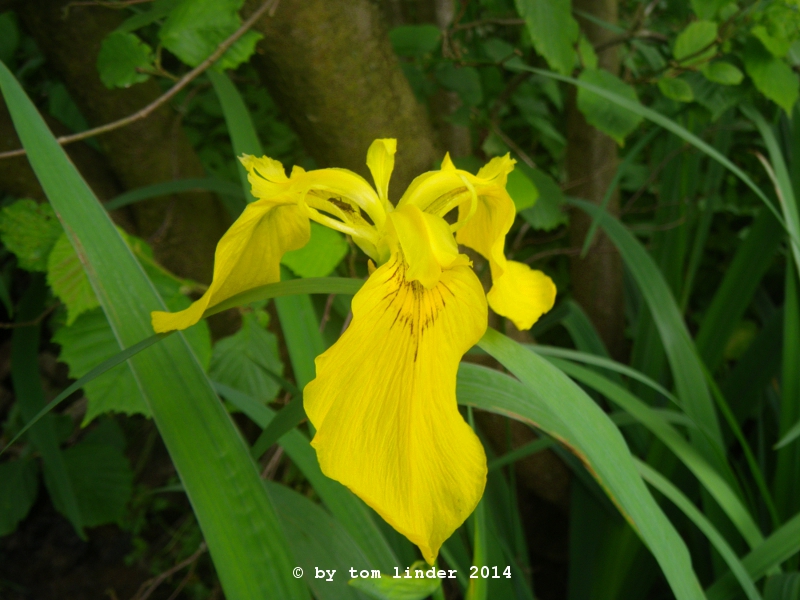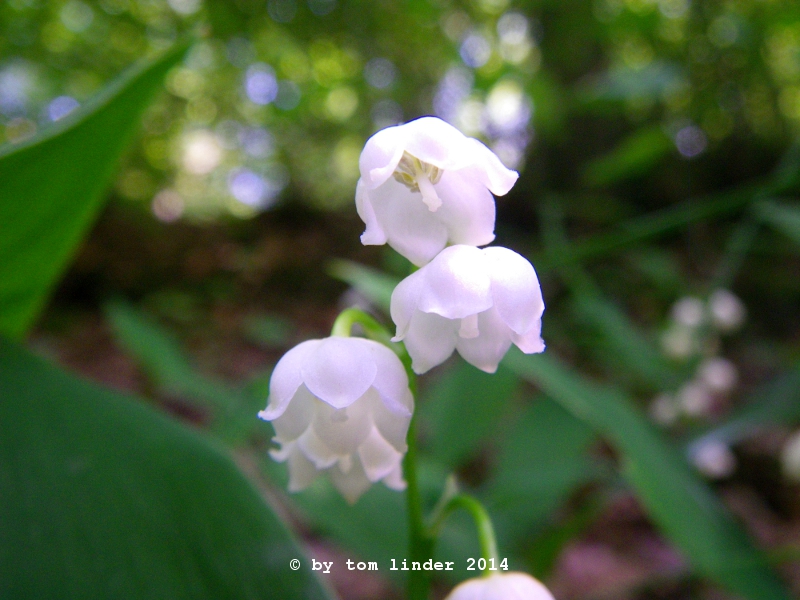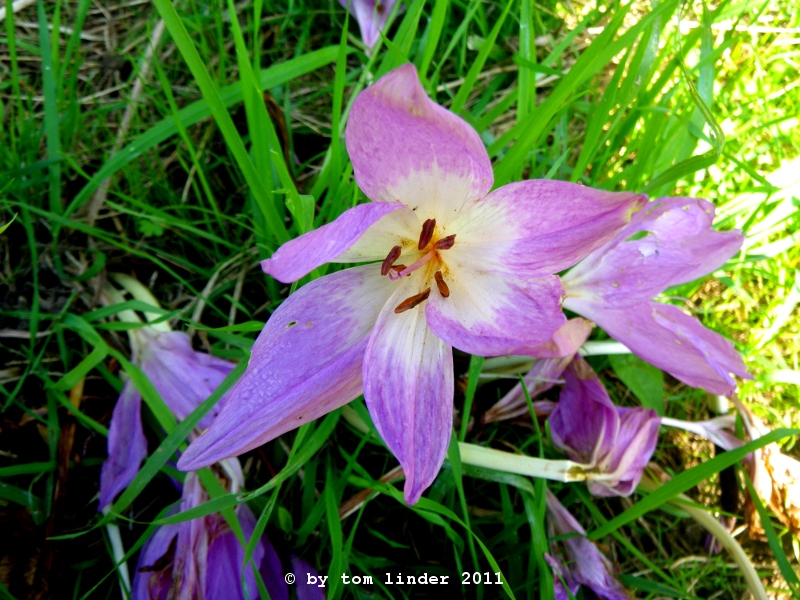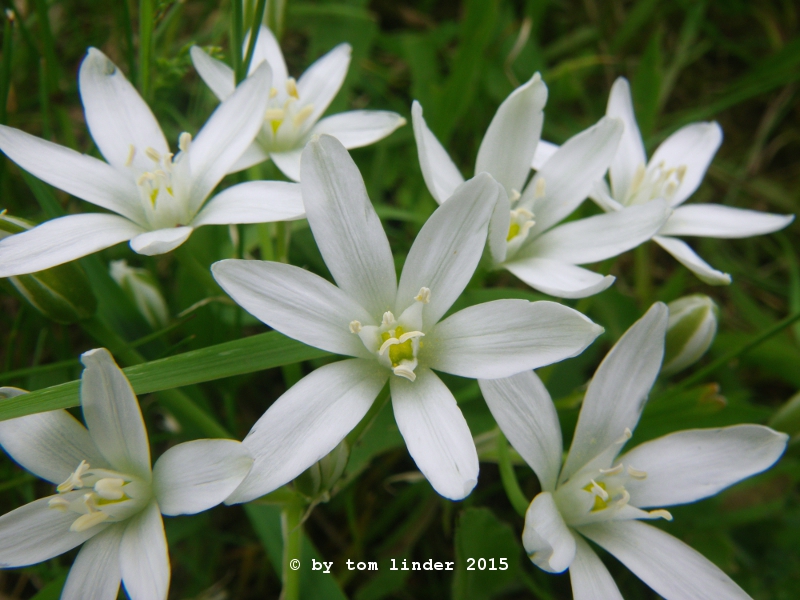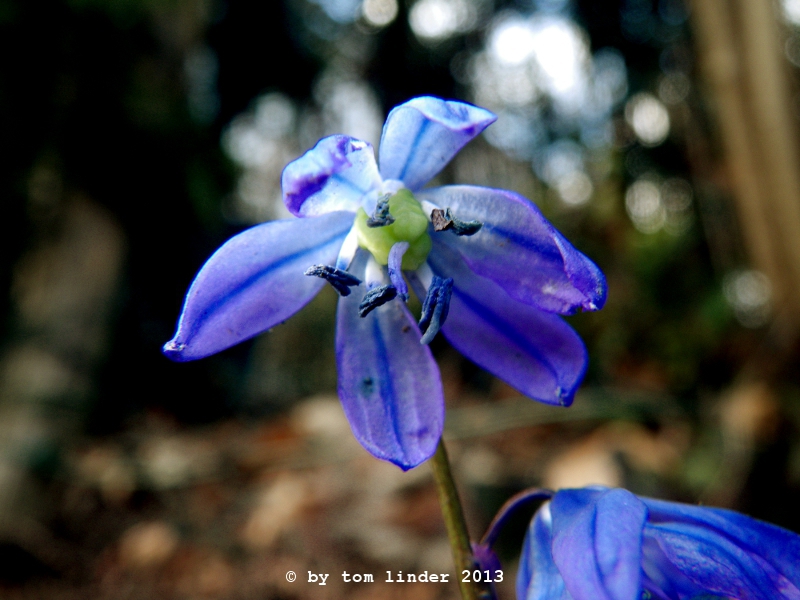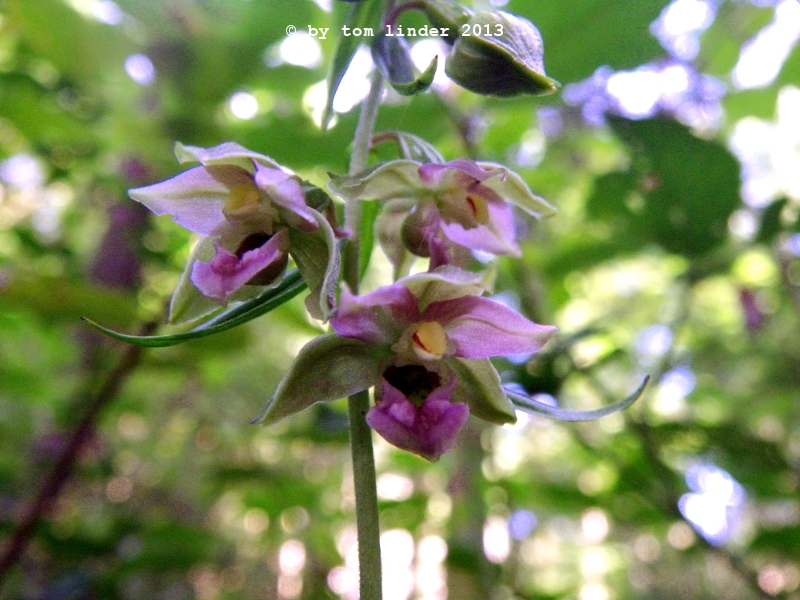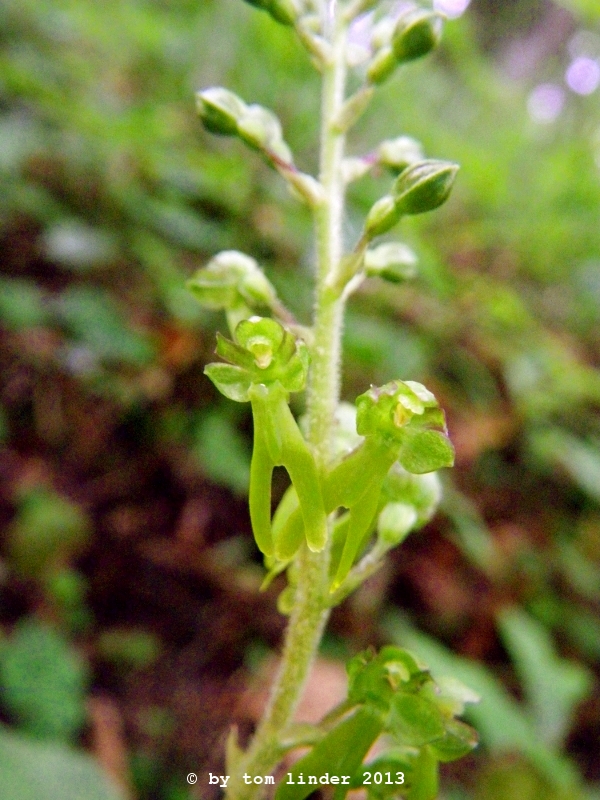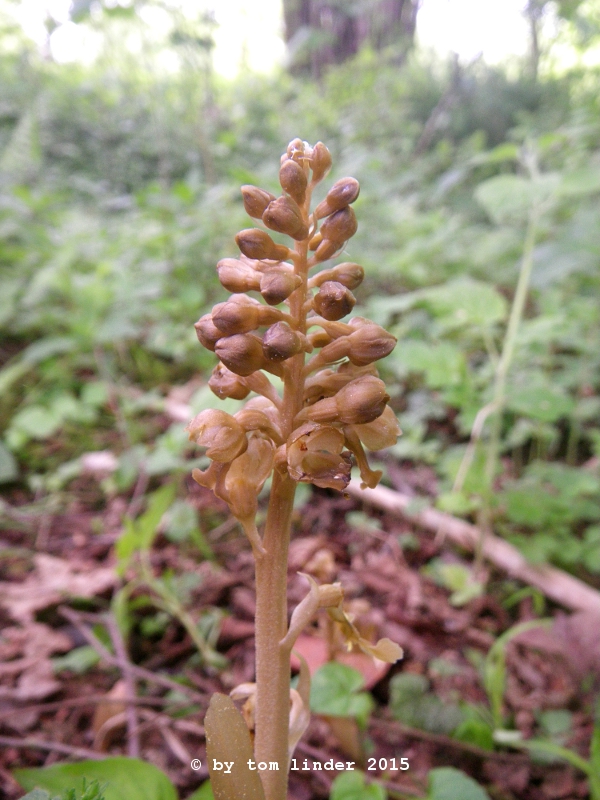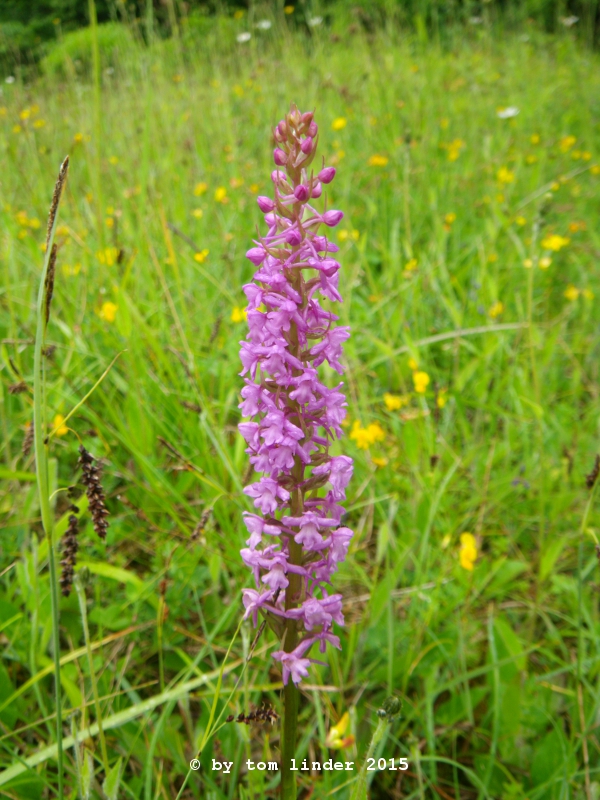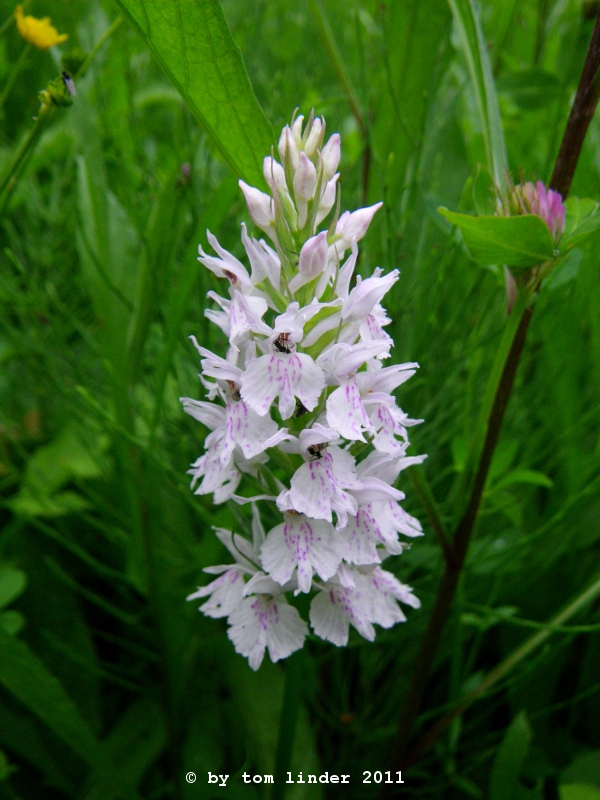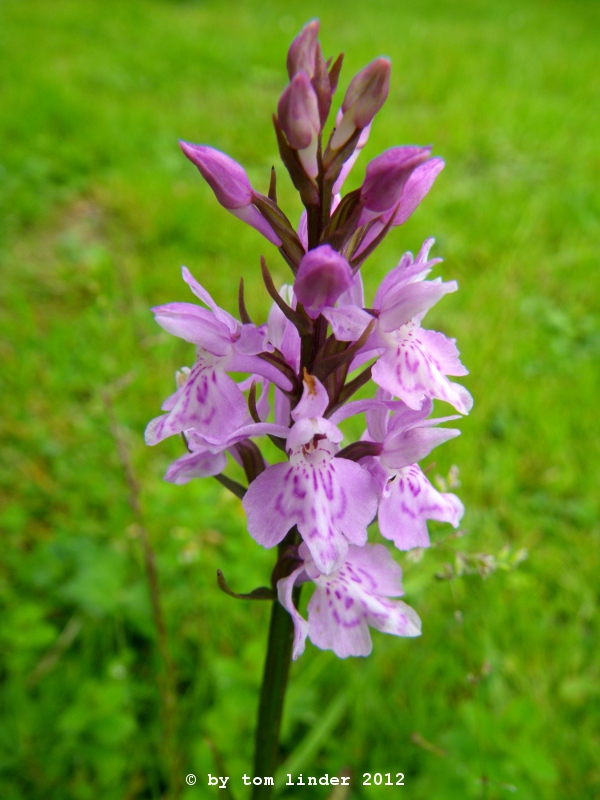Digital Herbarium
of Flowering Plants
of Northrhine-Westfalia in Germany
Introduction:
This site displays a small collection of photographs from local flowering plants species, occurring within the boundaries of the federal state NRW in Germany.
It is thought to replace the former pages of the botanical field trips made during the module 'Biodiversity of the Plants' at the University of Bonn.
During these short field trips, which were aimed at basic identification of local plants, it had become obvious how little the participants (including myself) knew about the plants growing in local habitats.
Even among this group of biology students many of the encountered species could not be properly named and identified.
From my experience such ignorance of the local flora, as exemplified by our small group, cannot be regarded as an exception, but is instead a widespread phenomenon.
The causes for this lack of basic taxonomic knowledge are plain to see, but also complex and manifold.
The reasons might be best explained in a historical and cultural-geographical context:
Northrhine-Westfalia (NRW) is one of the largest federal states (~34100 km2) in Germany and
it is at the same time the most populous state with more than 17 million inhabitants, mostly concentrated in the bigger cities or the urban region of the 'Ruhrgebiet'.
During centuries of agricultural and industrial development, which has led to the current population, most of the state's natural habitats were destroyed or degraded.
In former times most of the state's area were covered by forests, nowadays, only 26% of NRW is forested, whereby half of these forests are composed of deciduous trees (mostly Fagus sylvatica, the Common Beech)
and the other half consisting of non-native, evergreen conifers (mostly spruce, Picea abies, and pine, Pinus sylvestris).
Nearly all of these forests are utilized commercially and cannot be regarded as natural or even 'wild'.
Against such background it becomes clear that knowledge of the floral elements has over time diminished, either because species have vanished or have become very rare or because the knowledge itself has become less important and is not regarded as particularly useful anymore, not at least as the value of knowledge is often connected to opportunities for economic exploitation and mainstream cultural interests are shifting accordingly.
Rarely is the capability for recognition of local plants taught in elementary or higher schools, so especially the youth is kept ignorant of the local flora. As part of such general cultural development, knowledge in many fields of interest is restricted to a few specialist and botany is not an exception to this. On the other hand it can not be denied that many people love their gardens and are particularly interested in botanical topics.
Therefore, mostly as a counter-measure to my personal ignorance, I started to document the various plant species encountered everyday or in special habitats by taking photographs. At first this undertaking was quite unordered and did not follow any systematic approach, but soon special places were discovered, which offered a quite diverse and natural flora. Despite this finding, the original ambition, which aimed at collecting only photographs of naturally occurring (i.e. wild) species, was rendered impractible by the highly cultivated landscapes which represent the state of NRW even in rural regions. Often, it was not clear if species were occurring naturally, thriving due to cultivation of other plants or were self-seeded 'escapees' of nearby gardens. So, certain compromises were made and without mimicking a garden ornamental catalog, also cultivated or 'half-wild' species were included in this collection.
Moreover, most of the species were identified quite close (in about a 20 km radius) to my hometown, which is part of the adminstrative district 'Oberberg' and lies within a rural area of smooth mountains with elevations of about 300 to 400 m. The larger part of this region is used agriculturally, but due to the hilly nature of the landscape more in a extensive than a highly industrialized manner. Approximately 50-60% of the area is still forested with mixed species, so that patches of hardwood, especially beech, oak or hornbeam forests alternate with small, monocultural stands of spruce. Interspersed with the forests and at lower elevations the landscape is characterized by meadows, used for raising cattle, or fields for farming crops.
The latter use of land is not very common and only found at a small scale, because the soil is stony and poor in most occasions.
The region gets a fair amount of precipitation (about 1000-1200 mm a year), so that many small creeks and rivers flow through valleys with wet meadows, fen-like patches or alder forests.
In summer temperature raises above 30 °C while in winter the mercury column can drop below -20 °C.
So although this page is titled 'Plants of NRW' it only does so, to demarcate the maximum area of recognition, while most of the depicted plants were found in a relative small area, which can nevertheless be regarded as a representative landscape for many environments in the state of NRW and even Middle Europe. Additionally, when searching for 'plants of nrw' using one or the other of popular internet search engines, the results indicate that the term 'plant' is used in NRW mostly in a industrial sense (power plant, coal-burning plant, disposal plant, etc.), which might be regarded a typical use of the term in NRW. Even when searching for the German translation 'Pflanzen NRW' (whereby the word 'Pflanze' in German language use does not have the double meaning as 'plant' in English language) mostly irrelevant results appear. Thus, without getting a bad conscience, the title of this page appears to be fully justified...
The pictures were taken with the built-in camera of a mobile phone or a small pocket camera, so no professional equipment was used. Basic plant identification followed a popular plant guide for Middle Europe, written by D. Aichele and M. Golte-Bechtle [g01]. Where necessary (and when possible), the identification was augmented by the help of a hand lens and one of the standard works of German botany: the often denounced 'Schmeil, Fitschen' [g02]. Most of the German plant names and also the bloom times are taken from these sources, the English plant names were taken from the English Wikipedia, while the botanic authorship and the original publications were investigated from the International Plant Names Index (IPNI). A precise species description (the hardest task...) is still missing in most cases, but will be supplemented over time.
Species are listed in taxonomic order, following, with minor modifications, the scheme of the so-called Cronquist system. Although the Cronquist system is meanwhile regarded as outdated by many botanists and replaced by newer classifications, like those of the Angiosperm Phylogeny Group (APG), it still provides a widely accepted scheme which bridges many classical concepts to modern views and ideas.
Unfortunately, I cannot call myself a specialist in taxonomy, so it is quite possible that some species in this collection were misidentified. In cases where identification is regarded obviously unsafe, the species name is prefixed with an asterisk ('*'), as for example the species of the difficult to determine orchid genus Dactylorhiza. Additionally, for most species a determination down to the level of sub-species was not carried out, as such a task requires not only a great experience, but moreover needs often the direct comparison of the species in question, which can only be provided by greater herbaria.
Anyhow, the images can support a basic identification and often exhibit greater detail of intricate features, but further taxonomic investigation can certainly only be provided by consultation of the proper botanical guides and textbooks.
Not at least to make this page available to a wider group of visitors, it is kept in English language. German academic botanists usually have sooner or later to read into the mostly English literature anyway. Nevertheless, for native speakers, a German version of this page is in preparation.
The photographs can freely be used for educational or personal use, as long as the copyright notice and proper referencing is kept in place. Larger, full quality images are available on request under the e-mail address found on the Legal & Disclaimer page.
Northrhine-Westfalia (NRW) is one of the largest federal states (~34100 km2) in Germany and
 |
Fig. 1: A electricity transformation plant at sunset, highlighting not only the industrial character of the state of NRW, but accordingly also the prioritized meaning of the term 'plant' in NRW. |
Against such background it becomes clear that knowledge of the floral elements has over time diminished, either because species have vanished or have become very rare or because the knowledge itself has become less important and is not regarded as particularly useful anymore, not at least as the value of knowledge is often connected to opportunities for economic exploitation and mainstream cultural interests are shifting accordingly.
Rarely is the capability for recognition of local plants taught in elementary or higher schools, so especially the youth is kept ignorant of the local flora. As part of such general cultural development, knowledge in many fields of interest is restricted to a few specialist and botany is not an exception to this. On the other hand it can not be denied that many people love their gardens and are particularly interested in botanical topics.
Therefore, mostly as a counter-measure to my personal ignorance, I started to document the various plant species encountered everyday or in special habitats by taking photographs. At first this undertaking was quite unordered and did not follow any systematic approach, but soon special places were discovered, which offered a quite diverse and natural flora. Despite this finding, the original ambition, which aimed at collecting only photographs of naturally occurring (i.e. wild) species, was rendered impractible by the highly cultivated landscapes which represent the state of NRW even in rural regions. Often, it was not clear if species were occurring naturally, thriving due to cultivation of other plants or were self-seeded 'escapees' of nearby gardens. So, certain compromises were made and without mimicking a garden ornamental catalog, also cultivated or 'half-wild' species were included in this collection.
Moreover, most of the species were identified quite close (in about a 20 km radius) to my hometown, which is part of the adminstrative district 'Oberberg' and lies within a rural area of smooth mountains with elevations of about 300 to 400 m. The larger part of this region is used agriculturally, but due to the hilly nature of the landscape more in a extensive than a highly industrialized manner. Approximately 50-60% of the area is still forested with mixed species, so that patches of hardwood, especially beech, oak or hornbeam forests alternate with small, monocultural stands of spruce. Interspersed with the forests and at lower elevations the landscape is characterized by meadows, used for raising cattle, or fields for farming crops.
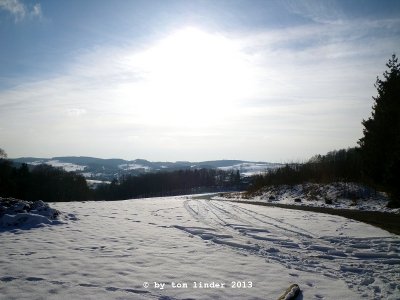 |
Fig. 2: A winter landscape. |
So although this page is titled 'Plants of NRW' it only does so, to demarcate the maximum area of recognition, while most of the depicted plants were found in a relative small area, which can nevertheless be regarded as a representative landscape for many environments in the state of NRW and even Middle Europe. Additionally, when searching for 'plants of nrw' using one or the other of popular internet search engines, the results indicate that the term 'plant' is used in NRW mostly in a industrial sense (power plant, coal-burning plant, disposal plant, etc.), which might be regarded a typical use of the term in NRW. Even when searching for the German translation 'Pflanzen NRW' (whereby the word 'Pflanze' in German language use does not have the double meaning as 'plant' in English language) mostly irrelevant results appear. Thus, without getting a bad conscience, the title of this page appears to be fully justified...
The pictures were taken with the built-in camera of a mobile phone or a small pocket camera, so no professional equipment was used. Basic plant identification followed a popular plant guide for Middle Europe, written by D. Aichele and M. Golte-Bechtle [g01]. Where necessary (and when possible), the identification was augmented by the help of a hand lens and one of the standard works of German botany: the often denounced 'Schmeil, Fitschen' [g02]. Most of the German plant names and also the bloom times are taken from these sources, the English plant names were taken from the English Wikipedia, while the botanic authorship and the original publications were investigated from the International Plant Names Index (IPNI). A precise species description (the hardest task...) is still missing in most cases, but will be supplemented over time.
Species are listed in taxonomic order, following, with minor modifications, the scheme of the so-called Cronquist system. Although the Cronquist system is meanwhile regarded as outdated by many botanists and replaced by newer classifications, like those of the Angiosperm Phylogeny Group (APG), it still provides a widely accepted scheme which bridges many classical concepts to modern views and ideas.
Unfortunately, I cannot call myself a specialist in taxonomy, so it is quite possible that some species in this collection were misidentified. In cases where identification is regarded obviously unsafe, the species name is prefixed with an asterisk ('*'), as for example the species of the difficult to determine orchid genus Dactylorhiza. Additionally, for most species a determination down to the level of sub-species was not carried out, as such a task requires not only a great experience, but moreover needs often the direct comparison of the species in question, which can only be provided by greater herbaria.
Anyhow, the images can support a basic identification and often exhibit greater detail of intricate features, but further taxonomic investigation can certainly only be provided by consultation of the proper botanical guides and textbooks.
Not at least to make this page available to a wider group of visitors, it is kept in English language. German academic botanists usually have sooner or later to read into the mostly English literature anyway. Nevertheless, for native speakers, a German version of this page is in preparation.
The photographs can freely be used for educational or personal use, as long as the copyright notice and proper referencing is kept in place. Larger, full quality images are available on request under the e-mail address found on the Legal & Disclaimer page.
Authors and corresponding publications of botanical names: * see note
Notice on notation:
The standard abbreviations of the authors, describing and naming the various plants (botanical authors) are given and expanded.
Their original publications are listed under the author's name, as provided by the International Plants Name Index [w02], with some minor changes as follows:
To avoid further decryption of abbreviations, the full name of the journal or other source is given, followed by the commonly used standard abbreviations of the respective journal or other source in parentheses, e.g. 'Species plantarum' (Sp. Pl.).
The names of publishers/editors of certain journals are provided in brackets (e.g. [Caroli Linnaeus]).
Also the present names of places or cities of publication, which were only named in Latin in the original title of the publication, are added in brackets behind the Latin name, e.g. Londini [London].
If an authorship denotes an 'ex', e.g. Batsch ex Borkh., only the latter author's publication is mentioned, similarily only the last author's publication is listed,
if a re-classification had occured, which is commonly denoted by enclosing the original author's name in parentheses, e.g. like in (L.) A. Gray.
Aiton - William Aiton 1731-1793
Andrews - Henry Charles Andrews, fl. 1794-1830
Barnhart, nom. cons. - John Hendley Barnhart, 1871-1949
Batsch - August Johann Georg Karl Batsch, 1761-1802
Bercht. - Bedřich (Friedrich) Všemír (Wssemjr) von Berchtold, 1781-1876
M. Bieb. - Friedrich August Marschall von Bieberstein, 1768-1826
Boreau - Alexandre Boreau, 1803-1875
Borkh. - Moritz (Moriz) Balthasar Borkhausen, 1760-1806
R. Br. - Robert Brown, 1773-1858
Burnett - Gilbert Thomas Burnett, 1800-1835
Cass. - Alexandre Henri Gabriel de Cassini, 1781-1832
Cavara - Fridiano Cavara, 1857-1929
Cham. - Ludolf Karl Adelbert von Chamisso, 1781-1838
Clairv. - Joseph Philippe de Clairville, 1742-1830
Coult. - Thomas Coulter, 1793-1843
Crantz - Heinrich Johann Nepomuk von Crantz, 1722-1799
A. DC. - Alphonse Louis Pierre Pyramus de Candolle, 1806-1893
DC. - Augustin Pyramus de Candolle, 1778-1841
Desf. - René Louiche Desfontaines, 1750-1833
Douglas - David Douglas, 1799-1834
Fabr. - Philipp Conrad Fabricius 1714-1774
Druce - George Claridge Druce, 1850-1932
Duby - Jean Étienne Duby, 1798-1885
Dumort. - Barthélemy Charles Joseph Dumortier, 1797-1878
Geyer - Carl (Charles) Andreas Geyer, 1809-1853
C.C. Gmel. - Carl (Karl) Christian Gmelin, 1762-1837
G. Gaertn. - Philipp Gottfried Gaertner, 1754-1825
Gouan - Antoine Gouan, 1733-1821
Grande - Loreto Grande, 1878-1965
Gray - Samuel Frederick Gray, 1766-1828
Guett. - Jean Étienne Guettard, 1715-1786
Guss. - Giovanni Gussone, 1787-1866
Haeckel - Ernst Heinrich Philipp August Haeckel, 1834-1919
Hanin - L. Hanin, fl. 1800
Hanson - Peter Hanson, 1824-1887
Haw. - Adrian Hardy Haworth, 1768-1833
Heist. - Lorenz Heister, 1683-1758
J. St.-Hil. - Jean Henri Jaume Saint-Hilaire, 1772-1845
Hill - John Hill, 1716-1775
Hoffmanns. - Johann Centurius von Hoffmannsegg, 1766-1849
Hoppe - David Heinrich Hoppe, 1760-1846
Horan. - Paul (Paulus) Fedorowitsch Horaninow, 1769-1865
Hornem. - Jens Wilken Hornemann, 1770-1841
Hort. - Hortulanorum, meaning 'of gardeners'
House - Homer Doliver House, 1878-1949
Huds. - William Hudson, 1730-1793
Hull - John Hull, 1761-1843
Jord. - Claude Thomas Alexis Jordan 1814-1897
Juss. - Antoine Laurent de Jussieu, 1748-1836
L'Hér. - Charles Louis L'Héritier de Brutelle, 1746-1800
J.F.Lehm. - Johann Friedrich Lehmann, 1781-1831
Link - Johann Heinrich Friedrich Link, 1767-1851
L. - Carl Linnaeus (Carl von Linné), 1707-1780
L. f. - Carl von Linnaeus filius (Carl von Linné, Carl Linnaeus), 1741-1783
Lindl. - John Lindley, 1799-1865
Martinov - Ivan Ivanovič Martinov (Ivan Ivanovich Martynov, Jean Martinoff), 1771-1833
Menzies - Archibald Menzies, 1754-1842
Mill. - Philip Miller, 1691-1771
B. Mey. - Bernhard Meyer, 1767-1836
Mutis - José Celestino Bruno Mutis (José Celestino Bruno Mutis y Bosio), 1732-1808
Neck. - Noel Martin Joseph de Necker, 1730-1793
Nevski - Sergei Arsenjevic (Arsenjevič) Nevski (Nevskiǐ), 1908-1938
Poir. - Jean Louis Marie Poiret, 1755-1834
J. Presl - Jan Svatopluk (Swatopluk) Presl, 1791-1849
Raeusch. - Ernst Adolf Raeuschel, fl. 1772-1797
Raf. - Constantine Samuel Rafinesque, 1783-1840
Rafn - Carl Gottlob Rafn, 1769-1808
A. Rich. - Achille Richard 1794-1852
Rich. - Louis Claude Marie Richard, 1754-1821
Richardson - John Richardson, 1787-1865
Royle - John Forbes Royle, 1798-1858
Salisb. - Richard Anthony Salisbury, 1761-1829
Savi - Gaetano Savi, 1769-1844
Scherb. - Johannes Scherbius, 1769-1813
Schkuhr - Christian Schkuhr, 1741-1811
Schltdl. - Diederich Franz Leonhard von Schlechtendal, 1794-1866
Schmidel - Casimir Christoph Schmidel, 1718-1792
F. W. Schmidt - Franz Willibald Schmidt, 1764-1796
Scholl. - Friedrich Adam Scholler, 1718-1795
Schult. - Josef (Joseph) August Schultes, 1773-1831
Schult. f. - Julius Hermann Schultes, 1804-1840
Sch. Bip. - Carl (Karl) Heinrich `Bipontinus' Schultz, 1805-1867
F. W. Schultz - Friedrich Wilhelm Schultz, 1804-1876
Scop. - Joannes Antonius (Giovanni Antonio) Scopoli, 1723-1788
Ser. - Nicolas Charles Seringe, 1776-1858
Small - John Kunkel Small, 1869-1938
Sm. - James Edward Smith, 1759-1828
Soó - K´roly Rezsö Soó von Bere, 1903-1980
Spreng. - Kurt (Curt) Polycarp Joachim Sprengel
Ten. - Michele Tenore 1780-1861
Traub - Hamilton Paul Traub, 1890-1983
Trevis. - Vittore Benedetto Antonio Trevisan de Saint-Léon, 1818-1897
Vent. - Étienne Pierre Ventenat, 1757-1808
Walter - Thomas Walter, 1740-1789
Wiegand - Karl McKay Wiegand, 1873-1942
F. H. Wigg. - Friedrich Heinrich (Fridrich Hindrich) Wiggers (Wichers), 1746-1811
Willd. - Carl Ludwig von Willdenow, 1765-1812
J.P.Wolff - Johann Philipp Wolff, 1743-1825
Zinn - Johann Gottfried Zinn, 1727-1759
Andrews - Henry Charles Andrews, fl. 1794-1830
Scilla siberica - 'Botanists' Repository, for New, and Rare Plants', (Bot. Repos.), 6:t.365, 1804
Barnhart, nom. cons. - John Hendley Barnhart, 1871-1949
Poaceae - 'Bulletin of the Torrey Botanical Club.', (Bull. Torrey Bot. Club), 22:7, 1895
Batsch - August Johann Georg Karl Batsch, 1761-1802
Violaceae - 'Tabula Affinitatum Regni Vegetabilis', (Tab. Affin. Regni Veg.), 57, 1802
Bercht. - Bedřich (Friedrich) Všemír (Wssemjr) von Berchtold, 1781-1876
Asteraceae, J. Presl. & Bercht., nom. cons. - 'O Prirozenosti Rostlin, obsahugjcj gednanj o ziwobitj rostlin...', (Prir. Rostlin), 254, 1820
Aquifoliaceae, Bercht. & J. Presl., nom. cons. - 'O Prirozenosti Rostlin aneb rostlinar, obsahugjcj popsanj a wyobrazenj ...', (Prir. Rostlin Aneb. Rostl.), 2(110):438, 440, 1825
Cornaceae, J. Presl & Bercht., nom. cons. - 'O Prirozenosti Rostlin, obsahugjcj gednanj o ziwobitj rostlin...', (Prir. Rostlin), 2(23*):91/92, 1825
Aquifoliaceae, Bercht. & J. Presl., nom. cons. - 'O Prirozenosti Rostlin aneb rostlinar, obsahugjcj popsanj a wyobrazenj ...', (Prir. Rostlin Aneb. Rostl.), 2(110):438, 440, 1825
Cornaceae, J. Presl & Bercht., nom. cons. - 'O Prirozenosti Rostlin, obsahugjcj gednanj o ziwobitj rostlin...', (Prir. Rostlin), 2(23*):91/92, 1825
M. Bieb. - Friedrich August Marschall von Bieberstein, 1768-1826
Boreau - Alexandre Boreau, 1803-1875
Viola reichenbachiana - 'Flore du Centre de la France, edition 3', (Fl. Centre France), [Boreau], 2:78, 1857
Borkh. - Moritz (Moriz) Balthasar Borkhausen, 1760-1806
Hyacinthaceae - 'Botanisches Wörterbuch: oder, Versuch einer Erklärung der vornehmsten Begriffe und Kunstwörter in der Botanick.', (Bot. Wörterb.), Giessen, 1:315, 1797
Primulaceae, nom. cons. - 'Botanisches Wörterbuch: oder, Versuch einer Erklärung der vornehmsten Begriffe und Kunstwörter in der Botanick.', (Bot. Wörterb.), Giessen, 2:240, 1797
Melanthiaceae, nom. cons. - 'Botanisches Wörterbuch: oder, Versuch einer Erklärung der vornehmsten Begriffe und Kunstwörter in der Botanick.', (Bot. Wörterb.), Giessen, 2:8, 1797
Primulaceae, nom. cons. - 'Botanisches Wörterbuch: oder, Versuch einer Erklärung der vornehmsten Begriffe und Kunstwörter in der Botanick.', (Bot. Wörterb.), Giessen, 2:240, 1797
Melanthiaceae, nom. cons. - 'Botanisches Wörterbuch: oder, Versuch einer Erklärung der vornehmsten Begriffe und Kunstwörter in der Botanick.', (Bot. Wörterb.), Giessen, 2:8, 1797
R. Br. - Robert Brown, 1773-1858
Calystegia, nom. cons. - 'Prodromus Florae Novae Hollandiae et Insulae van-Diemen', (Prodr. Fl. Nov. Holland. ), 483, 1810
Calystegia sepium - 'Prodromus Florae Novae Hollandiae et Insulae van-Diemen', (Prodr. Fl. Nov. Holland. ), 483, 1810
Celastraeae, nom. cons. - 'Voyage to Terra Australis.', (Voy. Terra Austral.), 2:554, 1814
Gymnadenia - 'Hortus Kewensis; or, a Catalogue of the Plants Cultivated in the Royal Botanic Garden at Kew.', (Hortus Kew.) [W.T. Aiton], ed. 2, London, 5:191, 1813
Gymnadenia conopsea - 'Hortus Kewensis; or, a Catalogue of the Plants Cultivated in the Royal Botanic Garden at Kew.', (Hortus Kew.) [W.T. Aiton], ed. 2, London, 5:191, 1813
Listera - 'Hortus Kewensis; or, a Catalogue of the Plants Cultivated in the Royal Botanic Garden at Kew.', (Hortus Kew.) [W.T. Aiton], ed. 2, London, 5:201, 1813
Listera ovata - 'Hortus Kewensis; or, a Catalogue of the Plants Cultivated in the Royal Botanic Garden at Kew.', (Hortus Kew.) [W.T. Aiton], ed. 2, London, 5:201, 1813
Oxalidaceae, nom. cons. - 'Narrative of an Expedition to Explore the River Zaire, usually called the Congo in South Africa, in 1816, Under the Direction of Captain J. K. [sic, for H.] Tuckey, R.N. To Which is Added the Journal of Professor Smith...', (Narr. Exped. Zaire), London, 433, 1818
Calystegia sepium - 'Prodromus Florae Novae Hollandiae et Insulae van-Diemen', (Prodr. Fl. Nov. Holland. ), 483, 1810
Celastraeae, nom. cons. - 'Voyage to Terra Australis.', (Voy. Terra Austral.), 2:554, 1814
Gymnadenia - 'Hortus Kewensis; or, a Catalogue of the Plants Cultivated in the Royal Botanic Garden at Kew.', (Hortus Kew.) [W.T. Aiton], ed. 2, London, 5:191, 1813
Gymnadenia conopsea - 'Hortus Kewensis; or, a Catalogue of the Plants Cultivated in the Royal Botanic Garden at Kew.', (Hortus Kew.) [W.T. Aiton], ed. 2, London, 5:191, 1813
Listera - 'Hortus Kewensis; or, a Catalogue of the Plants Cultivated in the Royal Botanic Garden at Kew.', (Hortus Kew.) [W.T. Aiton], ed. 2, London, 5:201, 1813
Listera ovata - 'Hortus Kewensis; or, a Catalogue of the Plants Cultivated in the Royal Botanic Garden at Kew.', (Hortus Kew.) [W.T. Aiton], ed. 2, London, 5:201, 1813
Oxalidaceae, nom. cons. - 'Narrative of an Expedition to Explore the River Zaire, usually called the Congo in South Africa, in 1816, Under the Direction of Captain J. K. [sic, for H.] Tuckey, R.N. To Which is Added the Journal of Professor Smith...', (Narr. Exped. Zaire), London, 433, 1818
Burnett - Gilbert Thomas Burnett, 1800-1835
Brassicaceae, nom. cons. - 'Outlines of Botany.', (Outlines Bot.), London, 854/1093/1123, 1835
Cass. - Alexandre Henri Gabriel de Cassini, 1781-1832
Mycelis - 'Dictionnaire des Sciences Naturelles, dans lequel on traite méthodiquement des différens êtres de la nature, considérés soit en eux-mêmes, d'aprés l'état actuel de nos connoissances, soit relativement à l'utilité quén peuvent retirer la médecine, l'agriculture, le commerce et les arts. Strasbourg. Edition 2.', (Dict. Sci. Nat., ed. 2 [F. Cuvier]), 33:483, 1824
Cavara - Fridiano Cavara, 1857-1929
Alliaria petiolata, Cavara & Grande - 'Bulletino dell' Orto Botanico della Regia Universita de Napoli.', (Bull. Orto Bot. Regia Univ. Napoli), Naples, 3:418, 1913
Cham. - Ludolf Karl Adelbert von Chamisso, 1781-1838
Clairv. - Joseph Philippe de Clairville, 1742-1830
Silene coronaria - 'Manuel d'Herborisation en Suisse et en Valais, redigé selon le systême de Linné, corrigé par ses propres principes. Avec l'indication d'un nouveau systême derivé également des principesde ce grand maître.', (Man. Herbor.), Winterthour, Suisse, 145, 1811
Silene dioica - 'Manuel d'Herborisation en Suisse et en Valais, redigé selon le systême de Linné, corrigé par ses propres principes. Avec l'indication d'un nouveau systême derivé également des principesde ce grand maître.', (Man. Herbor.), Winterthour, Suisse, 146, 1811
Silene dioica - 'Manuel d'Herborisation en Suisse et en Valais, redigé selon le systême de Linné, corrigé par ses propres principes. Avec l'indication d'un nouveau systême derivé également des principesde ce grand maître.', (Man. Herbor.), Winterthour, Suisse, 146, 1811
Coult. - Thomas Coulter, 1793-1843
Knautia arvensis - Dipsac. 29
Crantz - Heinrich Johann Nepomuk von Crantz, 1722-1799
Epipactis helleborine - 'Stirpium Austriarum Fasciculus. Editio Altera Aucta.', (Stirp. Austr. Fasc., ed. 2.), Vienna, 2:467, t.57, 1769
A. DC. - Alphonse Louis Pierre Pyramus de Candolle, 1806-1893
DC. - Augustin Pyramus de Candolle, 1778-1841
Colchicaceae - 'Essai sur les propriétés médicales des plantes, comparées aves leurs formes extérieures et leur classification naturelle', (Essai Propr. Méd. Pl.), 56, 1804
Impatiens parviflora - 'Prodromus Systematis Naturalis Regni Vegetabilis...', (Prodr.), [A. P. de Candolle], 1:687, 1824
Luzula - 'Flore Francaise, ou Descriptions Succinctes de Toutes les Plantes qui Croissent Naturellement en France...', (Fl. Franc.), [DC. & Lamarck], ed. 3, 3:158, 1805
Luzula campestris - 'Flore Francaise, ou Descriptions Succinctes de Toutes les Plantes qui Croissent Naturellement en France...', (Fl. Franc.), [DC. & Lamarck], ed. 3, 3:161, 1805
Impatiens parviflora - 'Prodromus Systematis Naturalis Regni Vegetabilis...', (Prodr.), [A. P. de Candolle], 1:687, 1824
Luzula - 'Flore Francaise, ou Descriptions Succinctes de Toutes les Plantes qui Croissent Naturellement en France...', (Fl. Franc.), [DC. & Lamarck], ed. 3, 3:158, 1805
Luzula campestris - 'Flore Francaise, ou Descriptions Succinctes de Toutes les Plantes qui Croissent Naturellement en France...', (Fl. Franc.), [DC. & Lamarck], ed. 3, 3:161, 1805
Desf. - René Louiche Desfontaines, 1750-1833
Douglas - David Douglas, 1799-1834
Fabr. - Philipp Conrad Fabricius 1714-1774
Alliaria - 'Enumeratio Methodica Plantarum', (Enum.), [Fabr.], Ed. 1, 161, 1759
Lamiastrum - 'Enumeratio Methodica Plantarum', (Enum.), [Fabr.], Ed. 1, 51, 1759
Lamiastrum - 'Enumeratio Methodica Plantarum', (Enum.), [Fabr.], Ed. 1, 51, 1759
Druce - George Claridge Druce, 1850-1932
Duby - Jean Étienne Duby, 1798-1885
Orobanche hederae - 'Aug. Pyrami de Candolle Botanicon Gallicum, pars prima Plantas Vascullares', (Bot. Gall.), 350, 1828
Dumort. - Barthélemy Charles Joseph Dumortier, 1797-1878
Mycelis muralis - 'Florula belgica, opera majoris prodromus Staminacia auctore B.-C. Dumortier', (Fl. Belg.), 60, 1827
Geyer - Carl (Charles) Andreas Geyer, 1809-1853
C.C. Gmel. - Carl (Karl) Christian Gmelin, 1762-1837
Senecio fuchsii - 'Flora Badensis Alsatica', (Fl. Bad.), 3:444, 1808
G. Gaertn. - Philipp Gottfried Gaertner, 1754-1825
Petasites hybridus - G. Gaertn., B. Mey. & Scherb. - 'Oekonomisch-Technische Flora der Wetterau', (Oekon. Fl. Wetterau), 3(1):184, 1801
Gouan - Antoine Gouan, 1733-1821
Hieracium sylvaticum - 'Illustrationes et Observationes Botanicae, ad specierum historiam facientes.', (Ill. Observ. Bot.), 56, 1773
Grande - Loreto Grande, 1878-1965
Alliaria petiolata, Cavara & Grande - 'Bulletino dell' Orto Botanico della Regia Universita de Napoli.', (Bull. Orto Bot. Regia Univ. Napoli), Naples, 3:418, 1913
Gray - Samuel Frederick Gray, 1766-1828
Persicaria maculosa - 'Natural Arrangement of British Plants, According to Their Relation to Each Other, as Pointed Out by Jussieu, De Candolle, Brown &c.', (Nat. Arr. Brit. Pl.), London, 2:269, 1821
Guett. - Jean Étienne Guettard, 1715-1786
Neottia, nom. cons. - 'Histoire de l'Academie Royale des Sciences. Avec les Mémoires de Mathematique & de Physique.', (Hist. Acad. Roy. Sci. Mém. Math. Phys. (Paris, 4°)), Paris, 1750:354, 1754
Guss. - Giovanni Gussone, 1787-1866
Colchicum bivonae - 'Catalogus Plantarum quae asservantur in Regio Horto ... Boccadifalco, prope Panormum. Adduntur nonnullae adnotationes, ac descriptiones novarum aliquot specierum', (Cat. Pl. Hort. Boccadifalco), 4, 1821
Haeckel - Ernst Heinrich Philipp August Haeckel, 1834-1919
Hanin - L. Hanin, fl. 1800
Sparganiaceae - 'Cours de Botanique.', (Cours Bot.), Paris, 400, 1811
Hanson - Peter Hanson, 1824-1887
Haw. - Adrian Hardy Haworth, 1768-1833
Scilla siberica - 'Botanists' Repository, for New, and Rare Plants', (Bot. Repos.), 6:t.365, 1804
Heist. - Lorenz Heister, 1683-1758
J. St.-Hil. - Jean Henri Jaume Saint-Hilaire, 1772-1845
Amaryllidaceae, nom. cons. - 'Exposition des Familles Naturelles...Paris (chez Treuttel et Würtz, ...), Strasbourg (meme Maison de Commerce)', (Expos. Fam. Nat.), 1:134, 1805
Lythraceae, nom. cons. - 'Exposition des Familles Naturelles...Paris (chez Treuttel et Würtz, ...), Strasbourg (meme Maison de Commerce)', (Expos. Fam. Nat.), 2:175, 1805
Lythraceae, nom. cons. - 'Exposition des Familles Naturelles...Paris (chez Treuttel et Würtz, ...), Strasbourg (meme Maison de Commerce)', (Expos. Fam. Nat.), 2:175, 1805
Hill - John Hill, 1716-1775
Centaurium - 'The British Herbal (Brit. Herb.) 62, 1756'
Primula elatior - 'Vegetable System (Veg. Syst.) VIII, 25, 1765'
Primula elatior - 'Vegetable System (Veg. Syst.) VIII, 25, 1765'
Hoffmanns. - Johann Centurius von Hoffmannsegg, 1766-1849
Polygalaceae, Hoffmanns. & Link, nom. cons. - 'Flore Portugaise ou description de toutes les plantes qui croissent naturellement en Portugal.', Berlin, (Fl. Portug.), 1:62, 1809
Hoppe - David Heinrich Hoppe, 1760-1846
Senecio ovatus - 'Botanische Zeitung welche Recensionen, Abhandlungen, Aufsaetze, Neuigkeiten und Nachrichten, die Botanik betreffend enthaelt.', Regensburg, (Bot. Zeitung (Regensburg)), 1(24):375, 1802
Horan. - Paul (Paulus) Fedorowitsch Horaninow, 1769-1865
Convallariaceae - 'Primae Lineae Systematis Naturae, nexui naturali omnium evolutionique progressivae per nixus reascendentes superstructi.', Petropol (Petersburg), (Prim. Lin. Syst. Nat.), 53, 1834
Hornem. - Jens Wilken Hornemann, 1770-1841
Carex demissa - 'Flora Danica', (Fl. Dan.), 7:21, 1806
Hort. - Hortulanorum, meaning 'of gardeners'
House - Homer Doliver House, 1878-1949
Huds. - William Hudson, 1730-1793
Ficaria verna - 'Flora Anglica; exhibens Plantas per Regnum Angliae Sponte Crescentes, Distributas Secundum Systema Sexuale: cum Differentiis Specierum, Synonymis Auctorum, Nominibus Incolarum, Solo Locorum, Tempore Florendi, Officinalibus Pharmacopoerum.', (Fl. Angl.), [Hudson], Londini [London], 214, 1762
Narthecium - 'Flora Anglica; exhibens Plantas per Regnum Angliae Sponte Crescentes, Distributas Secundum Systema Sexuale: cum Differentiis Specierum, Synonymis Auctorum, Nominibus Incolarum, Solo Locorum, Tempore Florendi, Officinalibus Pharmacopoerum.', (Fl. Angl.), [Hudson], Londini [London], 127, 1762
Narthecium ossifragum - 'Flora Anglica; exhibens Plantas per Regnum Angliae Sponte Crescentes, Distributas Secundum Systema Sexuale: cum Differentiis Specierum, Synonymis Auctorum, Nominibus Incolarum, Solo Locorum, Tempore Florendi, Officinalibus Pharmacopoerum.', (Fl. Angl.), [Hudson], Londini [London], 128, 1762
Narthecium - 'Flora Anglica; exhibens Plantas per Regnum Angliae Sponte Crescentes, Distributas Secundum Systema Sexuale: cum Differentiis Specierum, Synonymis Auctorum, Nominibus Incolarum, Solo Locorum, Tempore Florendi, Officinalibus Pharmacopoerum.', (Fl. Angl.), [Hudson], Londini [London], 127, 1762
Narthecium ossifragum - 'Flora Anglica; exhibens Plantas per Regnum Angliae Sponte Crescentes, Distributas Secundum Systema Sexuale: cum Differentiis Specierum, Synonymis Auctorum, Nominibus Incolarum, Solo Locorum, Tempore Florendi, Officinalibus Pharmacopoerum.', (Fl. Angl.), [Hudson], Londini [London], 128, 1762
Hull - John Hull, 1761-1843
Calluna vulgaris - 'British Flora, or a Linnaean Arrangement of British Plants. Edition 2.', (Brit. Fl., ed. 2), 114, 1808'
Jord. - Claude Thomas Alexis Jordan 1814-1897
Juss. - Antoine Laurent de Jussieu, 1748-1836
Araliaceae, nom. cons. - Genera Plantarum (Gen. Pl.), 40, 1789
Aristolochiaceae, nom. cons. - Genera Plantarum (Gen. Pl.), 72, 1789
Asparagaceae, nom. cons. - Genera Plantarum (Gen. Pl.), 217, 1789
Berberidaceae, nom. cons. - Genera Plantarum (Gen. Pl.), 286, 1789
Boraginaceae, nom. cons. - Genera Plantarum (Gen. Pl.), 182, 1789
Campanulaceae, nom. cons. - Genera Plantarum (Gen. Pl.), 163, 1789
Caryophyllaceae, nom. cons. - Genera Plantarum (Gen. Pl.), 299, 1789
Caprifoliaceae, nom. cons. - Genera Plantarum (Gen. Pl.), 210, 1789
Convolvulaceae, nom. cons. - Genera Plantarum (Gen. Pl.), 132, 1789
Cyperaceae, nom. cons. - Genera Plantarum (Gen. Pl.), 26, 1789
Dipsacaceae, nom. cons. - Genera Plantarum (Gen. Pl.), 194, 1789
Ericaceae, nom. cons. - Genera Plantarum (Gen. Pl.), 159, 1789
Gentianaceae, nom. cons. - Genera Plantarum (Gen. Pl.), 141, 1789
Geraniaceae, nom. cons. - Genera Plantarum (Gen. Pl.), 268, 1789
Hypericaceae, nom. cons. - Genera Plantarum (Gen. Pl.), 254, 1789
Iridaceae, nom. cons. - Genera Plantarum (Gen. Pl.), 57, 1789
Juncaceae, nom. cons. - Genera Plantarum (Gen. Pl.), 43, 1789
Labiatae, nom. cons. - Genera Plantarum (Gen. Pl.), 110, 1789
Liliaceae, nom. cons. - Genera Plantarum (Gen. Pl.), 48, 1789
Malvaceae, nom. cons. - Genera Plantarum (Gen. Pl.), 271, 1789
Onagraceae, nom. cons. - Genera Plantarum (Gen. Pl.), 317, 1789
Orchidaceae, nom. cons. - Genera Plantarum (Gen. Pl.), 64, 1789
Papaveraceae, nom. cons. - Genera Plantarum (Gen. Pl.), 235, 1789
Plantaginaceae, nom. cons. - Genera Plantarum (Gen. Pl.), 89, 1789
Ranunculaceae, nom. cons. - Genera Plantarum (Gen. Pl.), 231, 1789
Rosaceae, nom. cons. - Genera Plantarum (Gen. Pl.), 334, 1789
Saxifragaceae, nom. cons. - Genera Plantarum (Gen. Pl.), 308, 1789
Scrophulariaceae, nom. cons. - Genera Plantarum (Gen. Pl.), 117, 1789
Solanaceae, nom. cons. - Genera Plantarum (Gen. Pl.), 124, 1789
Thymelaeaceae, nom. cons. - Genera Plantarum (Gen. Pl.), 76, 1789
Aristolochiaceae, nom. cons. - Genera Plantarum (Gen. Pl.), 72, 1789
Asparagaceae, nom. cons. - Genera Plantarum (Gen. Pl.), 217, 1789
Berberidaceae, nom. cons. - Genera Plantarum (Gen. Pl.), 286, 1789
Boraginaceae, nom. cons. - Genera Plantarum (Gen. Pl.), 182, 1789
Campanulaceae, nom. cons. - Genera Plantarum (Gen. Pl.), 163, 1789
Caryophyllaceae, nom. cons. - Genera Plantarum (Gen. Pl.), 299, 1789
Caprifoliaceae, nom. cons. - Genera Plantarum (Gen. Pl.), 210, 1789
Convolvulaceae, nom. cons. - Genera Plantarum (Gen. Pl.), 132, 1789
Cyperaceae, nom. cons. - Genera Plantarum (Gen. Pl.), 26, 1789
Dipsacaceae, nom. cons. - Genera Plantarum (Gen. Pl.), 194, 1789
Ericaceae, nom. cons. - Genera Plantarum (Gen. Pl.), 159, 1789
Gentianaceae, nom. cons. - Genera Plantarum (Gen. Pl.), 141, 1789
Geraniaceae, nom. cons. - Genera Plantarum (Gen. Pl.), 268, 1789
Hypericaceae, nom. cons. - Genera Plantarum (Gen. Pl.), 254, 1789
Iridaceae, nom. cons. - Genera Plantarum (Gen. Pl.), 57, 1789
Juncaceae, nom. cons. - Genera Plantarum (Gen. Pl.), 43, 1789
Labiatae, nom. cons. - Genera Plantarum (Gen. Pl.), 110, 1789
Liliaceae, nom. cons. - Genera Plantarum (Gen. Pl.), 48, 1789
Malvaceae, nom. cons. - Genera Plantarum (Gen. Pl.), 271, 1789
Onagraceae, nom. cons. - Genera Plantarum (Gen. Pl.), 317, 1789
Orchidaceae, nom. cons. - Genera Plantarum (Gen. Pl.), 64, 1789
Papaveraceae, nom. cons. - Genera Plantarum (Gen. Pl.), 235, 1789
Plantaginaceae, nom. cons. - Genera Plantarum (Gen. Pl.), 89, 1789
Ranunculaceae, nom. cons. - Genera Plantarum (Gen. Pl.), 231, 1789
Rosaceae, nom. cons. - Genera Plantarum (Gen. Pl.), 334, 1789
Saxifragaceae, nom. cons. - Genera Plantarum (Gen. Pl.), 308, 1789
Scrophulariaceae, nom. cons. - Genera Plantarum (Gen. Pl.), 117, 1789
Solanaceae, nom. cons. - Genera Plantarum (Gen. Pl.), 124, 1789
Thymelaeaceae, nom. cons. - Genera Plantarum (Gen. Pl.), 76, 1789
L'Hér. - Charles Louis L'Héritier de Brutelle, 1746-1800
Erodium - ''Hortus Kewensis; or, a Catalogue of the Plants Cultivated in the Royal Botanic Garden at Kew.', (Hort. Kew.) [W.T. Aiton], London, 2:414, 1789
Erodium cicutarium - ''Hortus Kewensis; or, a Catalogue of the Plants Cultivated in the Royal Botanic Garden at Kew.', (Hort. Kew.) [W.T. Aiton], London, 2:414, 1789
Erodium cicutarium - ''Hortus Kewensis; or, a Catalogue of the Plants Cultivated in the Royal Botanic Garden at Kew.', (Hort. Kew.) [W.T. Aiton], London, 2:414, 1789
J.F.Lehm. - Johann Friedrich Lehmann, 1781-1831
Euphrasia stricta - 'Primae Lineae Florae Herbipolensis: quas speciminis loco inauguralis ut summos in universa arte medica honores adipiscatur, placido eruditorum examini / submittit ad diem iv. Februarii MDCCCIX. Joannes Fridericus Lehmann.' (Prim. Lin. Fl. Herbipol.), 43, 1809
Link - Johann Heinrich Friedrich Link, 1767-1851
Petrorhagia - Handbuch zur Erkennung der Nutzbarsten und am Häufigsten Vorkommenden Gewächse (Handbuch), 2:235, 1831
Petrorhagia saxifraga - Handbuch zur Erkennung der Nutzbarsten und am Häufigsten Vorkommenden Gewächse (Handbuch), 2:235, 1831
Polygalaceae, Hoffmanns. & Link, nom. cons. - 'Flore Portugaise ou description de toutes les plantes qui croissent naturellement en Portugal.' Berlin, (Fl. Portug.), 1:62, 1809
Petrorhagia saxifraga - Handbuch zur Erkennung der Nutzbarsten und am Häufigsten Vorkommenden Gewächse (Handbuch), 2:235, 1831
Polygalaceae, Hoffmanns. & Link, nom. cons. - 'Flore Portugaise ou description de toutes les plantes qui croissent naturellement en Portugal.' Berlin, (Fl. Portug.), 1:62, 1809
L. - Carl Linnaeus (Carl von Linné), 1707-1780
Achillea - Species Plantarum (Sp. Pl.), 2:896, 1753
Achillea millefolium - Species Plantarum (Sp. Pl.), 2:899, 1753
Achillea ptarmica - Species Plantarum (Sp. Pl.), 2:898, 1753
Aconitum - Species Plantarum (Sp. Pl.), 1:532, 1753
Aconitum napellus - Species Plantarum (Sp. Pl.), 1:532, 1753
Ajuga - Species Plantarum (Sp. Pl.), 2:561, 1753
Ajuga reptans - Species Plantarum (Sp. Pl.), 2:561, 1753
Allium - Species Plantarum (Sp. Pl.), 1:294, 1753
Alopecurus - Species Plantarum (Sp. Pl.), 1:60, 1753
Alopecurus pratensis - Species Plantarum (Sp. Pl.), 1:60, 1753
Anagallis - Species Plantarum (Sp. Pl.), 1:148, 1753
Anagallis arvensis - Species Plantarum (Sp. Pl.), 1:148, 1753
Anemone - Species Plantarum (Sp. Pl.), 1:538, 1753
Anemone nemorosa - Species Plantarum (Sp. Pl.), 1:541, 1753
Asarum - Species Plantarum (Sp. Pl.), 1:442, 1753
Atropa - Species Plantarum (Sp. Pl.), 1:181, 1753
Atropa bella-donna - Species Plantarum (Sp. Pl.), 1:181, 1753
Aquilegia - Species Plantarum (Sp. Pl.), 1:533, 1753
Aquilegia vulgaris - Species Plantarum (Sp. Pl.), 1:533, 1753
Arum - Species Plantarum (Sp. Pl.), 2:964, 1753
Arum maculatum - Species Plantarum (Sp. Pl.), 2:966, 1753
Betonica - Species Plantarum (Sp. Pl.), 2:573, 1753
Betonica officinalis - Species Plantarum (Sp. Pl.), 2:573, 1753
Borago - Species Plantarum (Sp. Pl.), 1:137, 1753
Borago officinalis - Species Plantarum (Sp. Pl.), 1:137, 1753
Caltha - Species Plantarum (Sp. Pl.), 1:558, 1753
Caltha palustris - Species Plantarum (Sp. Pl.), 1:558, 1753
Campanula - Species Plantarum (Sp. Pl.), 1:163, 1753
Campanula patula - Species Plantarum (Sp. Pl.), 1:163, 1753
Campanula rotundifolia - Species Plantarum (Sp. Pl.), 1:163, 1753
Campanula persicifolia - Species Plantarum (Sp. Pl.), 1:164, 1753
Campanula rapunculoides - Species Plantarum (Sp. Pl.), 1:165, 1753
Campanula trachelium - Species Plantarum (Sp. Pl.), 1:166, 1753
Campanula glomerata - Species Plantarum (Sp. Pl.), 1:166, 1753
Cardamine - Species Plantarum (Sp. Pl.), 2:654, 1753
Cardamine pratensis - Species Plantarum (Sp. Pl.), 2:656, 1753
Carex - Species Plantarum (Sp. Pl.), 2:972, 1753
Calla - Species Plantarum (Sp. Pl.), 2:968, 1753
Calla palustris - Species Plantarum (Sp. Pl.), 2:968, 1753
Carlina - Species Plantarum (Sp. Pl.), 2:828, 1753
Carlina vulgaris - Species Plantarum (Sp. Pl.), 2:828, errata [1231], 1753
Chelidonium - Species Plantarum (Sp. Pl.), 1:505, 1753
Chelidonium majus - Species Plantarum (Sp. Pl.), 1:505, 1753
Centaurea - Species Plantarum (Sp. Pl.), 2:909, 1753
Centaurea cyanus - Species Plantarum (Sp. Pl.), 2:911, 1753
Centaurea jacea - Species Plantarum (Sp. Pl.), 2:914, 1753
Centaurea scabiosa - Species Plantarum (Sp. Pl.), 2:918, 1753
Cichorium - Species Plantarum (Sp. Pl.), 2:813, 1753
Cichorium intybus - Species Plantarum (Sp. Pl.), 2:813, 1753
Circaea - Species Plantarum (Sp. Pl.), 1:9, 1753
Circaea lutetiana - Species Plantarum (Sp. Pl.), 1:9, 1753
Clematis - Species Plantarum (Sp. Pl.), 1:543, 1753
Clematis vitalba - Species Plantarum (Sp. Pl.), 1:544, 1753
Colchicum - Species Plantarum (Sp. Pl.), 1:341, 1753
Colchicum autumnale - Species Plantarum (Sp. Pl.), 1:341, 1753
Comarum - Species Plantarum (Sp. Pl.), 1:502, 1753
Comarum palustre - Species Plantarum (Sp. Pl.), 1:502, 1753
Convallaria - Species Plantarum (Sp. Pl.), 1:314, 1753
Convallaria majalis - Species Plantarum (Sp. Pl.), 1:314, 1753
Coronilla - Species Plantarum (Sp. Pl.), 2:742, 1753
Coronilla varia - Species Plantarum (Sp. Pl.), 2:743, 1753
Daphne - Species Plantarum (Sp. Pl.), 1:356, 1753
Daphne mezereum - Species Plantarum (Sp. Pl.), 1:356, 1753
Dianthus - Species Plantarum (Sp. Pl.), 1:409, 1753
Dianthus armeria - Species Plantarum (Sp. Pl.), 1:410, 1753
Digitalis - Species Plantarum (Sp. Pl.), 2:621, 1753
Digitalis purpurea - Species Plantarum (Sp. Pl.), 2:621, 1753
Echium - Species Plantarum (Sp. Pl.), 1:139, 1753
Echium vulgare - Species Plantarum (Sp. Pl.), 1:139, 1753
Epilobium - Species Plantarum (Sp. Pl.), 1:347, 1753
Epilobium angustifolium - Species Plantarum (Sp. Pl.), 1:347, 1753
Epilobium hirsutum - Species Plantarum (Sp. Pl.), 1:347, 1753
Erica - Species Plantarum (Sp. Pl.), 1:352, 1753
Erica tetralix - Species Plantarum (Sp. Pl.), 1:353, 1753
Euonymus - Species Plantarum (Sp. Pl.), 1:197, 1753
Euonymus europaea - Species Plantarum (Sp. Pl.), 1:197, 1753
Euphrasia - Species Plantarum (Sp. Pl.), 2:604, 1753
Galanthus - Species Plantarum (Sp. Pl.), 1:288, 1753
Galanthus nivalis - Species Plantarum (Sp. Pl.), 1:288, 1753
Geranium - Genera Plantarum, ed. 5, 1754
Geranium robertianum - Species Plantarum (Sp. Pl.), 2:681, 1753
Geranium dissectum - Centuria Plantarum (Cent. Pl.), 1:21, 1755
Glechoma - Species Plantarum (Sp. Pl.), 2:578, 1753
Glechoma hederacea - Species Plantarum (Sp. Pl.), 2:578, 1753
Globularia - Species Plantarum (Sp. Pl.), 1:95, 1753
Globularia bisnagarica - Species Plantarum (Sp. Pl.), 1:96, 1753
Hieracium - Species Plantarum (Sp. Pl.), 2:799, 1753
Hieracium pilosella - Species Plantarum (Sp. Pl.), 2:800, 1753
Hieracium aurantiacum - Species Plantarum (Sp. Pl.), 2:801, 1753
Hieracium murorum - Species Plantarum (Sp. Pl.), 2:802, 1753
Hypericum - Species Plantarum (Sp. Pl.), 2:783, 1753
Hypericum hirsutum - Species Plantarum (Sp. Pl.), 2:786, 1753
Hypericum pulchrum - Species Plantarum (Sp. Pl.), 2:785, 1753
Hypericum perforatum - Species Plantarum (Sp. Pl.), 2:785, 1753
Hypericum pulchrum - Species Plantarum (Sp. Pl.), 2:786, 1753
Ilex - Species Plantarum (Sp. Pl.), 1:125, 1753
Ilex aquifolium - Species Plantarum (Sp. Pl.), 1:125, 1753
Impatiens - Species Plantarum (Sp. Pl.), 2:937, 1753
Impatiens noli-tangere - Species Plantarum (Sp. Pl.), 2:938, 1753
Iris - Species Plantarum (Sp. Pl.), 1:38, 1753
Iris pseudacorus - Species Plantarum (Sp. Pl.), 1:38, 1753
Iris sibirica - Species Plantarum (Sp. Pl.), 1:39, 1753
Knautia - Species Plantarum (Sp. Pl.), 1:101, 1753
Lamium - Species Plantarum (Sp. Pl.), 2:579, 1753
Lamium galeobdolon - 'Amoenitates Academici seu dissertationes variae physicae, medicae...', (Amoen. Acad., Linnaeus ed.), 4:485, 1759
Lapsana - Species Plantarum (Sp. Pl.), 2:811, 1753
Lapsana communis - Species Plantarum (Sp. Pl.), 2:811, 1753
Lathyrus - Species Plantarum (Sp. Pl.), 2:729, 1753
Leucojum - Species Plantarum (Sp. Pl.), 1:289, 1753
Leucojum vernum - Species Plantarum (Sp. Pl.), 1:289, 1753
Lilium - Species Plantarum (Sp. Pl.), 1:302, 1753
Lonicera - Species Plantarum (Sp. Pl.), 1:173, 1753
Lonicera periclymenum - Species Plantarum (Sp. Pl.), 1:173, 1753
Lychnis - Species Plantarum (Sp. Pl.), 1:436, 1753
Lychnis flos-cuculi - Species Plantarum (Sp. Pl.), 1:436, 1753
Lysimachia - Species Plantarum (Sp. Pl.), 1:146, 1753
Lysimachia vulgaris - Species Plantarum (Sp. Pl.), 1:146, 1753
Lysimachia nemorum - Species Plantarum (Sp. Pl.), 1:148, 1753
Lythrum - Species Plantarum (Sp. Pl.), 1:446, 1753
Lythrum salicaria - Species Plantarum (Sp. Pl.), 1:446, 1753
Malva - Species Plantarum (Sp. Pl.), 2:687, 1753
Malva moschata - Species Plantarum (Sp. Pl.), 2:690, 1753
Matricaria - Species Plantarum (Sp. Pl.), 2:890, 1753
Matricaria chamomilla, nom. cons. - Species Plantarum (Sp. Pl.), 2:891, 1753
Matricaria inodora - 'Flora Suecica ("Svecica") Exhibens Plantas per Regnum Sveciae Crescentes.' (Fl. Suec.), ed. 2 (Linnaeus), 297, 1755
Medicago - Species Plantarum (Sp. Pl.), 2:778, 1753
Medicago lupulina - Species Plantarum (Sp. Pl.), 2:779, 1753
Mimulus - Species Plantarum (Sp. Pl.), 2:634, 1753
Ononis - Species Plantarum (Sp. Pl.), 2:716, 1753
Ononis repens - Species Plantarum (Sp. Pl.), 2:717, 1753
Ononis spinosa - Species Plantarum (Sp. Pl.), 2:716, 1753
Ornithogalum - Species Plantarum (Sp. Pl.), 1:306, 1753
Ornithogalum umbellatum - Species Plantarum (Sp. Pl.), 1:307, 1753
Orobanche - Species Plantarum (Sp. Pl.), 2:632, 1753
Oxalis - Species Plantarum (Sp. Pl.), 1:433, 1753
Oxalis acetosella - Species Plantarum (Sp. Pl.), 1:433, 1753
Paris - Species Plantarum (Sp. Pl.), 1:367, 1753
Paris quadrifolia - Species Plantarum (Sp. Pl.), 1:367, 1753
Phyteuma - Species Plantarum (Sp. Pl.), 1:170, 1753
Phyteuma spicatum - Species Plantarum (Sp. Pl.), 1:171, 1753
Plantago - Species Plantarum (Sp. Pl.), 1:112, 1753
Plantago lanceolata - Species Plantarum (Sp. Pl.), 1:113, 1753
Plantago major - Species Plantarum (Sp. Pl.), 1:112, 1753
Polygala - Species Plantarum (Sp. Pl.), 2:701, 1753
Polygala vulgaris - Species Plantarum (Sp. Pl.), 2:702, 1753
Polygonum - Species Plantarum (Sp. Pl.), 1:359, 1753
Polygonum aviculare - Species Plantarum (Sp. Pl.), 1:362, 1753
Polygonum bistorta - Species Plantarum (Sp. Pl.), 1:360, 1753
Polygonum lapathifolium - Species Plantarum (Sp. Pl.), 1:360, 1753
Polygonum persicaria - Species Plantarum (Sp. Pl.), 1:361, 1753
Potentilla - Species Plantarum (Sp. Pl.), 1:495, 1753
Potentilla anserina - Species Plantarum (Sp. Pl.), 1:495, 1753
Potentilla reptans - Species Plantarum (Sp. Pl.), 1:499, 1753
Primula - Species Plantarum (Sp. Pl.), 1:142, 1753
Primula veris - Species Plantarum (Sp. Pl.), 1:142, 1753
Prunella - Species Plantarum (Sp. Pl.), 2:600, 1753
Prunella vulgaris - Species Plantarum (Sp. Pl.), 2:600, 1753
Pyrola - Species Plantarum (Sp. Pl.), 1:396, 1753
Ranunculus - Species Plantarum (Sp. Pl.), 1:548, 1753
Ranunculus ficaria - Species Plantarum (Sp. Pl.), 1:550, 1753
Ranunculus flammula - Species Plantarum (Sp. Pl.), 1:548, 1753
Ranunculus repens - Species Plantarum (Sp. Pl.), 1:554, 1753
Rhinanthus - Species Plantarum (Sp. Pl.), 2:603, 1753
Rhinanthus minor - 'Amoenitates Academici seu dissertationes variae physicae, medicae...', (Amoen. Acad.), Linnaeus ed., 3:54, 1756
Rubus, nom. cons. - Species Plantarum (Sp. Pl.), 1:492, 1753
Sanguisorba - Species Plantarum (Sp. Pl.), 1:116, 1753
Saxifraga - Species Plantarum (Sp. Pl.), 2:398, 1753
Scabiosa - Species Plantarum (Sp. Pl.), 1:98, 1753
Scabiosa columbaria - Species Plantarum (Sp. Pl.), 1:99, 1753
Scilla - Species Plantarum (Sp. Pl.), 1:308, 1753
Scilla bifolia - Species Plantarum (Sp. Pl.), 1:309, 1753
Scirpus - Species Plantarum (Sp. Pl.), 1:47, 1753
Scirpus sylvaticus - Species Plantarum (Sp. Pl.), 1:51, 1753
Senecio - Species Plantarum (Sp. Pl.), 2:866, 1753
Senecio jacobae - Species Plantarum (Sp. Pl.), 2:870, 1753
Silene - Species Plantarum (Sp. Pl.), 1:416, 1753
Solanum - Species Plantarum (Sp. Pl.), 1:184, 1753
Solanum dulcamara - Species Plantarum (Sp. Pl.), 1:185, 1753
Solanum nigrum - Species Plantarum (Sp. Pl.), 1:186, 1753
Sparganium - Species Plantarum (Sp. Pl.), 2:971, 1753
Sparganium erectum - Species Plantarum (Sp. Pl.), 2:971, 1753
Stachys - Species Plantarum (Sp. Pl.), 2:580, 1753
Stachys palustris - Species Plantarum (Sp. Pl.), 2:580, 1753
Stachys sylvatica - Species Plantarum (Sp. Pl.), 2:580, 1753
Stellaria - Species Plantarum (Sp. Pl.), 1:421, 1753
Stellaria nemorum - Species Plantarum (Sp. Pl.), 1:421, 1753
Stellaria holostea - Species Plantarum (Sp. Pl.), 1:422, 1753
Symphytum - Species Plantarum (Sp. Pl.), 1:136, 1753
Symphytum officinale - Species Plantarum (Sp. Pl.), 1:136, 1753
Teucrium - Species Plantarum (Sp. Pl.), 2:562, 1753
Teucrium scorodonia - Species Plantarum (Sp. Pl.), 2:564, 1753
Trientalis - Species Plantarum (Sp. Pl.), 1:344, 1753
Trientalis europaea - Species Plantarum (Sp. Pl.), 1:344, 1753
Trifolium - Species Plantarum (Sp. Pl.), 2:764, 1753
Trifolium repens - Species Plantarum (Sp. Pl.), 2:767, 1753
Trifolium pratense - Species Plantarum (Sp. Pl.), 2:768, 1753
Trifolium montanum - Species Plantarum (Sp. Pl.), 2:770, 1753
Tussilago - Species Plantarum (Sp. Pl.), 2:865, 1753
Tussilago farfara - Species Plantarum (Sp. Pl.), 2:865, 1753
Verbascum - Species Plantarum, (Sp. Pl.), 1:177, 1753
Verbascum nigrum - Species Plantarum, (Sp. Pl.), 1:178, 1753
Vicia - Species Plantarum, (Sp. Pl.), 2:734, 1753
Vicia cracca - Species Plantarum, (Sp. Pl.), 2:735, 1753
Vicia sepium - Species Plantarum, (Sp. Pl.), 2:737, 1753
Viola - Species Plantarum, (Sp. Pl.), 2:933, 1753
Achillea millefolium - Species Plantarum (Sp. Pl.), 2:899, 1753
Achillea ptarmica - Species Plantarum (Sp. Pl.), 2:898, 1753
Aconitum - Species Plantarum (Sp. Pl.), 1:532, 1753
Aconitum napellus - Species Plantarum (Sp. Pl.), 1:532, 1753
Ajuga - Species Plantarum (Sp. Pl.), 2:561, 1753
Ajuga reptans - Species Plantarum (Sp. Pl.), 2:561, 1753
Allium - Species Plantarum (Sp. Pl.), 1:294, 1753
Alopecurus - Species Plantarum (Sp. Pl.), 1:60, 1753
Alopecurus pratensis - Species Plantarum (Sp. Pl.), 1:60, 1753
Anagallis - Species Plantarum (Sp. Pl.), 1:148, 1753
Anagallis arvensis - Species Plantarum (Sp. Pl.), 1:148, 1753
Anemone - Species Plantarum (Sp. Pl.), 1:538, 1753
Anemone nemorosa - Species Plantarum (Sp. Pl.), 1:541, 1753
Asarum - Species Plantarum (Sp. Pl.), 1:442, 1753
Atropa - Species Plantarum (Sp. Pl.), 1:181, 1753
Atropa bella-donna - Species Plantarum (Sp. Pl.), 1:181, 1753
Aquilegia - Species Plantarum (Sp. Pl.), 1:533, 1753
Aquilegia vulgaris - Species Plantarum (Sp. Pl.), 1:533, 1753
Arum - Species Plantarum (Sp. Pl.), 2:964, 1753
Arum maculatum - Species Plantarum (Sp. Pl.), 2:966, 1753
Betonica - Species Plantarum (Sp. Pl.), 2:573, 1753
Betonica officinalis - Species Plantarum (Sp. Pl.), 2:573, 1753
Borago - Species Plantarum (Sp. Pl.), 1:137, 1753
Borago officinalis - Species Plantarum (Sp. Pl.), 1:137, 1753
Caltha - Species Plantarum (Sp. Pl.), 1:558, 1753
Caltha palustris - Species Plantarum (Sp. Pl.), 1:558, 1753
Campanula - Species Plantarum (Sp. Pl.), 1:163, 1753
Campanula patula - Species Plantarum (Sp. Pl.), 1:163, 1753
Campanula rotundifolia - Species Plantarum (Sp. Pl.), 1:163, 1753
Campanula persicifolia - Species Plantarum (Sp. Pl.), 1:164, 1753
Campanula rapunculoides - Species Plantarum (Sp. Pl.), 1:165, 1753
Campanula trachelium - Species Plantarum (Sp. Pl.), 1:166, 1753
Campanula glomerata - Species Plantarum (Sp. Pl.), 1:166, 1753
Cardamine - Species Plantarum (Sp. Pl.), 2:654, 1753
Cardamine pratensis - Species Plantarum (Sp. Pl.), 2:656, 1753
Carex - Species Plantarum (Sp. Pl.), 2:972, 1753
Calla - Species Plantarum (Sp. Pl.), 2:968, 1753
Calla palustris - Species Plantarum (Sp. Pl.), 2:968, 1753
Carlina - Species Plantarum (Sp. Pl.), 2:828, 1753
Carlina vulgaris - Species Plantarum (Sp. Pl.), 2:828, errata [1231], 1753
Chelidonium - Species Plantarum (Sp. Pl.), 1:505, 1753
Chelidonium majus - Species Plantarum (Sp. Pl.), 1:505, 1753
Centaurea - Species Plantarum (Sp. Pl.), 2:909, 1753
Centaurea cyanus - Species Plantarum (Sp. Pl.), 2:911, 1753
Centaurea jacea - Species Plantarum (Sp. Pl.), 2:914, 1753
Centaurea scabiosa - Species Plantarum (Sp. Pl.), 2:918, 1753
Cichorium - Species Plantarum (Sp. Pl.), 2:813, 1753
Cichorium intybus - Species Plantarum (Sp. Pl.), 2:813, 1753
Circaea - Species Plantarum (Sp. Pl.), 1:9, 1753
Circaea lutetiana - Species Plantarum (Sp. Pl.), 1:9, 1753
Clematis - Species Plantarum (Sp. Pl.), 1:543, 1753
Clematis vitalba - Species Plantarum (Sp. Pl.), 1:544, 1753
Colchicum - Species Plantarum (Sp. Pl.), 1:341, 1753
Colchicum autumnale - Species Plantarum (Sp. Pl.), 1:341, 1753
Comarum - Species Plantarum (Sp. Pl.), 1:502, 1753
Comarum palustre - Species Plantarum (Sp. Pl.), 1:502, 1753
Convallaria - Species Plantarum (Sp. Pl.), 1:314, 1753
Convallaria majalis - Species Plantarum (Sp. Pl.), 1:314, 1753
Coronilla - Species Plantarum (Sp. Pl.), 2:742, 1753
Coronilla varia - Species Plantarum (Sp. Pl.), 2:743, 1753
Daphne - Species Plantarum (Sp. Pl.), 1:356, 1753
Daphne mezereum - Species Plantarum (Sp. Pl.), 1:356, 1753
Dianthus - Species Plantarum (Sp. Pl.), 1:409, 1753
Dianthus armeria - Species Plantarum (Sp. Pl.), 1:410, 1753
Digitalis - Species Plantarum (Sp. Pl.), 2:621, 1753
Digitalis purpurea - Species Plantarum (Sp. Pl.), 2:621, 1753
Echium - Species Plantarum (Sp. Pl.), 1:139, 1753
Echium vulgare - Species Plantarum (Sp. Pl.), 1:139, 1753
Epilobium - Species Plantarum (Sp. Pl.), 1:347, 1753
Epilobium angustifolium - Species Plantarum (Sp. Pl.), 1:347, 1753
Epilobium hirsutum - Species Plantarum (Sp. Pl.), 1:347, 1753
Erica - Species Plantarum (Sp. Pl.), 1:352, 1753
Erica tetralix - Species Plantarum (Sp. Pl.), 1:353, 1753
Euonymus - Species Plantarum (Sp. Pl.), 1:197, 1753
Euonymus europaea - Species Plantarum (Sp. Pl.), 1:197, 1753
Euphrasia - Species Plantarum (Sp. Pl.), 2:604, 1753
Galanthus - Species Plantarum (Sp. Pl.), 1:288, 1753
Galanthus nivalis - Species Plantarum (Sp. Pl.), 1:288, 1753
Geranium - Genera Plantarum, ed. 5, 1754
Geranium robertianum - Species Plantarum (Sp. Pl.), 2:681, 1753
Geranium dissectum - Centuria Plantarum (Cent. Pl.), 1:21, 1755
Glechoma - Species Plantarum (Sp. Pl.), 2:578, 1753
Glechoma hederacea - Species Plantarum (Sp. Pl.), 2:578, 1753
Globularia - Species Plantarum (Sp. Pl.), 1:95, 1753
Globularia bisnagarica - Species Plantarum (Sp. Pl.), 1:96, 1753
Hieracium - Species Plantarum (Sp. Pl.), 2:799, 1753
Hieracium pilosella - Species Plantarum (Sp. Pl.), 2:800, 1753
Hieracium aurantiacum - Species Plantarum (Sp. Pl.), 2:801, 1753
Hieracium murorum - Species Plantarum (Sp. Pl.), 2:802, 1753
Hypericum - Species Plantarum (Sp. Pl.), 2:783, 1753
Hypericum hirsutum - Species Plantarum (Sp. Pl.), 2:786, 1753
Hypericum pulchrum - Species Plantarum (Sp. Pl.), 2:785, 1753
Hypericum perforatum - Species Plantarum (Sp. Pl.), 2:785, 1753
Hypericum pulchrum - Species Plantarum (Sp. Pl.), 2:786, 1753
Ilex - Species Plantarum (Sp. Pl.), 1:125, 1753
Ilex aquifolium - Species Plantarum (Sp. Pl.), 1:125, 1753
Impatiens - Species Plantarum (Sp. Pl.), 2:937, 1753
Impatiens noli-tangere - Species Plantarum (Sp. Pl.), 2:938, 1753
Iris - Species Plantarum (Sp. Pl.), 1:38, 1753
Iris pseudacorus - Species Plantarum (Sp. Pl.), 1:38, 1753
Iris sibirica - Species Plantarum (Sp. Pl.), 1:39, 1753
Knautia - Species Plantarum (Sp. Pl.), 1:101, 1753
Lamium - Species Plantarum (Sp. Pl.), 2:579, 1753
Lamium galeobdolon - 'Amoenitates Academici seu dissertationes variae physicae, medicae...', (Amoen. Acad., Linnaeus ed.), 4:485, 1759
Lapsana - Species Plantarum (Sp. Pl.), 2:811, 1753
Lapsana communis - Species Plantarum (Sp. Pl.), 2:811, 1753
Lathyrus - Species Plantarum (Sp. Pl.), 2:729, 1753
Leucojum - Species Plantarum (Sp. Pl.), 1:289, 1753
Leucojum vernum - Species Plantarum (Sp. Pl.), 1:289, 1753
Lilium - Species Plantarum (Sp. Pl.), 1:302, 1753
Lonicera - Species Plantarum (Sp. Pl.), 1:173, 1753
Lonicera periclymenum - Species Plantarum (Sp. Pl.), 1:173, 1753
Lychnis - Species Plantarum (Sp. Pl.), 1:436, 1753
Lychnis flos-cuculi - Species Plantarum (Sp. Pl.), 1:436, 1753
Lysimachia - Species Plantarum (Sp. Pl.), 1:146, 1753
Lysimachia vulgaris - Species Plantarum (Sp. Pl.), 1:146, 1753
Lysimachia nemorum - Species Plantarum (Sp. Pl.), 1:148, 1753
Lythrum - Species Plantarum (Sp. Pl.), 1:446, 1753
Lythrum salicaria - Species Plantarum (Sp. Pl.), 1:446, 1753
Malva - Species Plantarum (Sp. Pl.), 2:687, 1753
Malva moschata - Species Plantarum (Sp. Pl.), 2:690, 1753
Matricaria - Species Plantarum (Sp. Pl.), 2:890, 1753
Matricaria chamomilla, nom. cons. - Species Plantarum (Sp. Pl.), 2:891, 1753
Matricaria inodora - 'Flora Suecica ("Svecica") Exhibens Plantas per Regnum Sveciae Crescentes.' (Fl. Suec.), ed. 2 (Linnaeus), 297, 1755
Medicago - Species Plantarum (Sp. Pl.), 2:778, 1753
Medicago lupulina - Species Plantarum (Sp. Pl.), 2:779, 1753
Mimulus - Species Plantarum (Sp. Pl.), 2:634, 1753
Ononis - Species Plantarum (Sp. Pl.), 2:716, 1753
Ononis repens - Species Plantarum (Sp. Pl.), 2:717, 1753
Ononis spinosa - Species Plantarum (Sp. Pl.), 2:716, 1753
Ornithogalum - Species Plantarum (Sp. Pl.), 1:306, 1753
Ornithogalum umbellatum - Species Plantarum (Sp. Pl.), 1:307, 1753
Orobanche - Species Plantarum (Sp. Pl.), 2:632, 1753
Oxalis - Species Plantarum (Sp. Pl.), 1:433, 1753
Oxalis acetosella - Species Plantarum (Sp. Pl.), 1:433, 1753
Paris - Species Plantarum (Sp. Pl.), 1:367, 1753
Paris quadrifolia - Species Plantarum (Sp. Pl.), 1:367, 1753
Phyteuma - Species Plantarum (Sp. Pl.), 1:170, 1753
Phyteuma spicatum - Species Plantarum (Sp. Pl.), 1:171, 1753
Plantago - Species Plantarum (Sp. Pl.), 1:112, 1753
Plantago lanceolata - Species Plantarum (Sp. Pl.), 1:113, 1753
Plantago major - Species Plantarum (Sp. Pl.), 1:112, 1753
Polygala - Species Plantarum (Sp. Pl.), 2:701, 1753
Polygala vulgaris - Species Plantarum (Sp. Pl.), 2:702, 1753
Polygonum - Species Plantarum (Sp. Pl.), 1:359, 1753
Polygonum aviculare - Species Plantarum (Sp. Pl.), 1:362, 1753
Polygonum bistorta - Species Plantarum (Sp. Pl.), 1:360, 1753
Polygonum lapathifolium - Species Plantarum (Sp. Pl.), 1:360, 1753
Polygonum persicaria - Species Plantarum (Sp. Pl.), 1:361, 1753
Potentilla - Species Plantarum (Sp. Pl.), 1:495, 1753
Potentilla anserina - Species Plantarum (Sp. Pl.), 1:495, 1753
Potentilla reptans - Species Plantarum (Sp. Pl.), 1:499, 1753
Primula - Species Plantarum (Sp. Pl.), 1:142, 1753
Primula veris - Species Plantarum (Sp. Pl.), 1:142, 1753
Prunella - Species Plantarum (Sp. Pl.), 2:600, 1753
Prunella vulgaris - Species Plantarum (Sp. Pl.), 2:600, 1753
Pyrola - Species Plantarum (Sp. Pl.), 1:396, 1753
Ranunculus - Species Plantarum (Sp. Pl.), 1:548, 1753
Ranunculus ficaria - Species Plantarum (Sp. Pl.), 1:550, 1753
Ranunculus flammula - Species Plantarum (Sp. Pl.), 1:548, 1753
Ranunculus repens - Species Plantarum (Sp. Pl.), 1:554, 1753
Rhinanthus - Species Plantarum (Sp. Pl.), 2:603, 1753
Rhinanthus minor - 'Amoenitates Academici seu dissertationes variae physicae, medicae...', (Amoen. Acad.), Linnaeus ed., 3:54, 1756
Rubus, nom. cons. - Species Plantarum (Sp. Pl.), 1:492, 1753
Sanguisorba - Species Plantarum (Sp. Pl.), 1:116, 1753
Saxifraga - Species Plantarum (Sp. Pl.), 2:398, 1753
Scabiosa - Species Plantarum (Sp. Pl.), 1:98, 1753
Scabiosa columbaria - Species Plantarum (Sp. Pl.), 1:99, 1753
Scilla - Species Plantarum (Sp. Pl.), 1:308, 1753
Scilla bifolia - Species Plantarum (Sp. Pl.), 1:309, 1753
Scirpus - Species Plantarum (Sp. Pl.), 1:47, 1753
Scirpus sylvaticus - Species Plantarum (Sp. Pl.), 1:51, 1753
Senecio - Species Plantarum (Sp. Pl.), 2:866, 1753
Senecio jacobae - Species Plantarum (Sp. Pl.), 2:870, 1753
Silene - Species Plantarum (Sp. Pl.), 1:416, 1753
Solanum - Species Plantarum (Sp. Pl.), 1:184, 1753
Solanum dulcamara - Species Plantarum (Sp. Pl.), 1:185, 1753
Solanum nigrum - Species Plantarum (Sp. Pl.), 1:186, 1753
Sparganium - Species Plantarum (Sp. Pl.), 2:971, 1753
Sparganium erectum - Species Plantarum (Sp. Pl.), 2:971, 1753
Stachys - Species Plantarum (Sp. Pl.), 2:580, 1753
Stachys palustris - Species Plantarum (Sp. Pl.), 2:580, 1753
Stachys sylvatica - Species Plantarum (Sp. Pl.), 2:580, 1753
Stellaria - Species Plantarum (Sp. Pl.), 1:421, 1753
Stellaria nemorum - Species Plantarum (Sp. Pl.), 1:421, 1753
Stellaria holostea - Species Plantarum (Sp. Pl.), 1:422, 1753
Symphytum - Species Plantarum (Sp. Pl.), 1:136, 1753
Symphytum officinale - Species Plantarum (Sp. Pl.), 1:136, 1753
Teucrium - Species Plantarum (Sp. Pl.), 2:562, 1753
Teucrium scorodonia - Species Plantarum (Sp. Pl.), 2:564, 1753
Trientalis - Species Plantarum (Sp. Pl.), 1:344, 1753
Trientalis europaea - Species Plantarum (Sp. Pl.), 1:344, 1753
Trifolium - Species Plantarum (Sp. Pl.), 2:764, 1753
Trifolium repens - Species Plantarum (Sp. Pl.), 2:767, 1753
Trifolium pratense - Species Plantarum (Sp. Pl.), 2:768, 1753
Trifolium montanum - Species Plantarum (Sp. Pl.), 2:770, 1753
Tussilago - Species Plantarum (Sp. Pl.), 2:865, 1753
Tussilago farfara - Species Plantarum (Sp. Pl.), 2:865, 1753
Verbascum - Species Plantarum, (Sp. Pl.), 1:177, 1753
Verbascum nigrum - Species Plantarum, (Sp. Pl.), 1:178, 1753
Vicia - Species Plantarum, (Sp. Pl.), 2:734, 1753
Vicia cracca - Species Plantarum, (Sp. Pl.), 2:735, 1753
Vicia sepium - Species Plantarum, (Sp. Pl.), 2:737, 1753
Viola - Species Plantarum, (Sp. Pl.), 2:933, 1753
L. f. - Carl von Linnaeus filius (Carl von Linné, Carl Linnaeus), 1741-1783
Lindl. - John Lindley, 1799-1865
Fabaceae, nom. cons. - 'Natural System of Botany: or, a Systematic View of the Organisation, Natural Affinities, and Geographical Distribution, of the Whole Vegetable Kingdom; Together with the Uses of the Most Important Species in Medicine, the Arts, and Rural and Domestic Economy.', Edition 2, (Intr. Nat. Syst. Bot., ed. 2.), London, 148, 1836
Martinov - Ivan Ivanovič Martinov (Ivan Ivanovich Martynov, Jean Martinoff), 1771-1833
Lamiaceae, nom. cons. - 'Tekhno-Botanicheskīǐ Slovar´: na latinskom i rossīǐskom i͡azykakh.', (Tekhno-Bot. Slovar), Sanktpeterburgie [St. Petersburg], 355, 1820
Menzies - Archibald Menzies, 1754-1842
Mill. - Philip Miller, 1691-1771
Cirsium - 'The Gardeners Dictionary: containing the methods of cultivating and improving all sorts of trees, plants, and flowers, for the kitchen, fruit, and pleasure gardens, as also those which are used in medicine :
with directions for the culture of vineyards, and making of wine in England : in which likewise are included the practical parts of husbandry..., corrected and enlarged. Abrig'd from the folio edition..., Edition 4.', (Gard. Dict. Abr., ed. 4.), London, 1754
Linaria - 'The Gardeners Dictionary..., Edition 4.', (Gard. Dict. Abr., ed. 4.), London, 334, 1754
Linaria vulgaris - 'The Gardeners Dictionary, Edition 8.', (Gard. Dict. Abr., ed. 8.), London, n.1, 1768
Petasites - 'The Gardeners Dictionary..., Edition 4.', (Gard. Dict. Abr., ed. 4.), London, 1754
with directions for the culture of vineyards, and making of wine in England : in which likewise are included the practical parts of husbandry..., corrected and enlarged. Abrig'd from the folio edition..., Edition 4.', (Gard. Dict. Abr., ed. 4.), London, 1754
Linaria - 'The Gardeners Dictionary..., Edition 4.', (Gard. Dict. Abr., ed. 4.), London, 334, 1754
Linaria vulgaris - 'The Gardeners Dictionary, Edition 8.', (Gard. Dict. Abr., ed. 8.), London, n.1, 1768
Petasites - 'The Gardeners Dictionary..., Edition 4.', (Gard. Dict. Abr., ed. 4.), London, 1754
B. Mey. - Bernhard Meyer, 1767-1836
Mutis - José Celestino Bruno Mutis (José Celestino Bruno Mutis y Bosio), 1732-1808
Neck. - Noel Martin Joseph de Necker, 1730-1793
Nevski - Sergei Arsenjevic (Arsenjevič) Nevski (Nevskiǐ), 1908-1938
Dactylorhiza - 'Trudy Botanicheskogo Instituta Akademii Nauk SSSR. Ser. 1. Flora i Sistematika Vyssikh Rastenii. Acta Instituti Botanici Academiae Scientiarum URPSS.', (Trudy Bot. Inst. Akad. Nauk S.S.S.R., Ser. 1, Fl. Sist. Vyssh. Rast.), Moscow & Leningrad [St. Petersburg], 4:332, 1937
Poir. - Jean Louis Marie Poiret, 1755-1834
J. Presl - Jan Svatopluk (Swatopluk) Presl, 1791-1849
Aquifoliaceae, Bercht. & J. Presl., nom. cons. - 'O Prirozenosti Rostlin aneb rostlinar, obsahugjcj popsanj a wyobrazenj ...', (Prir. Rostlin Aneb. Rostl.), 2(110):438, 440, 1825
Asteraceae, J. Presl. & Bercht., nom. cons. - 'O Prirozenosti Rostlin, obsahugjcj gednanj o ziwobitj rostlin...', (Prir. Rostlin), 254, 1820
Cornaceae, J. Presl. & Bercht., nom. cons. - 'O Prirozenosti Rostlin, obsahugjcj gednanj o ziwobitj rostlin...', (Prir. Rostlin), 2(23*):91/92, 1825
Asteraceae, J. Presl. & Bercht., nom. cons. - 'O Prirozenosti Rostlin, obsahugjcj gednanj o ziwobitj rostlin...', (Prir. Rostlin), 254, 1820
Cornaceae, J. Presl. & Bercht., nom. cons. - 'O Prirozenosti Rostlin, obsahugjcj gednanj o ziwobitj rostlin...', (Prir. Rostlin), 2(23*):91/92, 1825
Raeusch. - Ernst Adolf Raeuschel, fl. 1772-1797
Potentilla erecta - 'Nomenclator botanicus (Raeusch.)', (Nomencl. Bot.), 152, 1797
Raf. - Constantine Samuel Rafinesque, 1783-1840
Rafn - Carl Gottlob Rafn, 1769-1808
Centaurium erythraea - 'Danmarks og Holsteens Flora', (Danm. Holst. Fl.), 2:75, 1800
A. Rich. - Achille Richard 1794-1852
Balsaminaceae, nom. cons. - 'Dictionnaire Classique d'Histoire Naturelle, par Messieurs Audouin, Isid. Bourdon, Ad. Brongniart, de Candolle ... et Bory de Saint-Vincent. Ouvrage dirigé par ce dernier collaborateur.', (Dict. Class. Hist. Nat.), [Bory], Paris, 2:173, 1822
Rich. - Louis Claude Marie Richard, 1754-1821
Neottia nidus-avis - 'De Orchideis Europaeis Annotationes.', (De Orchid. Eur.), 37, 1817
Richardson - John Richardson, 1787-1865
Royle - John Forbes Royle, 1798-1858
Impatiens glandulifera - 'Illustrations of the Botany... of the Himalayan Mountains...', (Ill. Bot. Himal. Mts.), [Royle], 2, t. 28, fig. 2, 1834
Salisb. - Richard Anthony Salisbury, 1761-1829
Calluna - 'Transactions of the Linnean Society of London, Botany 6.', (Trans. Linn. Soc.), London, 6:317, 1802
Savi - Gaetano Savi, 1769-1844
Scherb. - Johannes Scherbius, 1769-1813
Schkuhr - Christian Schkuhr, 1741-1811
Polygala comosa - 'Botanisches Handbuch der mehresten Theils in Deutschland...' (Bot. Handb.), 2:324, t. 194, 1796
Schltdl. - Diederich Franz Leonhard von Schlechtendal, 1794-1866
Schmidel - Casimir Christoph Schmidel, 1718-1792
F. W. Schmidt - Franz Willibald Schmidt, 1764-1796
Phyteuma nigrum - 'Flora Boemica inchoata, exhibens plantarum regui Boemiae indigenarum species.' (Fl. Boem.), 2:87, 1793
Scholl. - Friedrich Adam Scholler, 1718-1795
Prunella grandiflora - 'Fl. Barb.', 140, 1775
Schult. - Josef (Joseph) August Schultes, 1773-1831
Schult. f. - Julius Hermann Schultes, 1804-1840
Sch. Bip. - Carl (Karl) Heinrich `Bipontinus' Schultz, 1805-1867
Pilosella officinarum, F.W. Schultz & Sch. Bip. - 'Flora; oder, (allgemeine) botanische Zeitung.', (Flora), Regensburg, Jena, 45(27):421-422, 1862
Pilosella aurantiaca, F.W. Schultz & Sch. Bip. - 'Flora; oder, (allgemeine) botanische Zeitung.', (Flora), Regensburg, Jena, 45(27):426, 1862
Pilosella aurantiaca, F.W. Schultz & Sch. Bip. - 'Flora; oder, (allgemeine) botanische Zeitung.', (Flora), Regensburg, Jena, 45(27):426, 1862
F. W. Schultz - Friedrich Wilhelm Schultz, 1804-1876
Pilosella officinarum, F.W. Schultz & Sch. Bip. - 'Flora; oder, (allgemeine) botanische Zeitung.', (Flora), Regensburg, Jena, 45(27):421-422, 1862
Pilosella aurantiaca, F.W. Schultz & Sch. Bip. - 'Flora; oder, (allgemeine) botanische Zeitung.', (Flora), Regensburg, Jena, 45(27):426, 1862
Pilosella aurantiaca, F.W. Schultz & Sch. Bip. - 'Flora; oder, (allgemeine) botanische Zeitung.', (Flora), Regensburg, Jena, 45(27):426, 1862
Scop. - Joannes Antonius (Giovanni Antonio) Scopoli, 1723-1788
Cirsium acaule - 'Annus I-V Historico-Naturalis...', (Annus Hist.-Nat.), Lipsiae [Leipzig], 2:62, 1769
Cirsium palustre - 'Flora Carniolica Exhibens Plantas Carniolae Indigenas et Distributas in Classes Naturales cum Differentiis Specificis, Synonymis Recentiorum, Locis Natalibus, Nominibus Incolarum, Observationibus Selectis, Viribus Medicis. Editio Secunda Aucta et Reformata.', (Fl. Carniol., ed. 2.), Vienna, 2:228, 1772
Potentilla palustris - 'Flora Carniolica Exhibens Plantas Carniolae Indigenas et Distributas in Classes Naturales cum Differentiis Specificis, Synonymis Recentiorum, Locis Natalibus, Nominibus Incolarum, Observationibus Selectis, Viribus Medicis. Editio Secunda Aucta et Reformata.', (Fl. Carniol., ed. 2.), Vienna, 1:359, 1771
Sanguisorba minor - 'Flora Carniolica Exhibens Plantas Carniolae Indigenas et Distributas in Classes Naturales cum Differentiis Specificis, Synonymis Recentiorum, Locis Natalibus, Nominibus Incolarum, Observationibus Selectis, Viribus Medicis. Editio Secunda Aucta et Reformata.', (Fl. Carniol., ed. 2.), Vienna, 1:110, 1771
Cirsium palustre - 'Flora Carniolica Exhibens Plantas Carniolae Indigenas et Distributas in Classes Naturales cum Differentiis Specificis, Synonymis Recentiorum, Locis Natalibus, Nominibus Incolarum, Observationibus Selectis, Viribus Medicis. Editio Secunda Aucta et Reformata.', (Fl. Carniol., ed. 2.), Vienna, 2:228, 1772
Potentilla palustris - 'Flora Carniolica Exhibens Plantas Carniolae Indigenas et Distributas in Classes Naturales cum Differentiis Specificis, Synonymis Recentiorum, Locis Natalibus, Nominibus Incolarum, Observationibus Selectis, Viribus Medicis. Editio Secunda Aucta et Reformata.', (Fl. Carniol., ed. 2.), Vienna, 1:359, 1771
Sanguisorba minor - 'Flora Carniolica Exhibens Plantas Carniolae Indigenas et Distributas in Classes Naturales cum Differentiis Specificis, Synonymis Recentiorum, Locis Natalibus, Nominibus Incolarum, Observationibus Selectis, Viribus Medicis. Editio Secunda Aucta et Reformata.', (Fl. Carniol., ed. 2.), Vienna, 1:110, 1771
Ser. - Nicolas Charles Seringe, 1776-1858
Small - John Kunkel Small, 1869-1938
Sm. - James Edward Smith, 1759-1828
Soó - K´roly Rezsö Soó von Bere, 1903-1980
Dactylorhiza fuchsii - 'Nomina Nova Generis Dactylorhiza.', (Nom. Nova Gen. Dactylorhiza), Budapest, 8, 1962
Dactylorhiza maculata - 'Nomina Nova Generis Dactylorhiza.', (Nom. Nova Gen. Dactylorhiza), Budapest, 7, 1962
Dactylorhiza maculata - 'Nomina Nova Generis Dactylorhiza.', (Nom. Nova Gen. Dactylorhiza), Budapest, 7, 1962
Spreng. - Kurt (Curt) Polycarp Joachim Sprengel
Ten. - Michele Tenore 1780-1861
Cirsium vulgare - 'Flora Napolitana: ossia, Descrizione delle piante indigene del regno di Napoli, e delle piu rare specie di piante esotiche coltivate ne' Giardini ... Napoli : Nella Stamperia reale', (Fl. Napol.), 5, 209, 1836
Traub - Hamilton Paul Traub, 1890-1983
Trevis. - Vittore Benedetto Antonio Trevisan de Saint-Léon, 1818-1897
Stachys officinalis - 'Prospetto della Flora Euganea.', (Prosp. Fl. Eugan), Padova, 26, 1842
Vent. - Étienne Pierre Ventenat, 1757-1808
Orobanchaceae, nom. cons. - 'Tableau du Règne Végétal, Selon de Méthode de Jussieu.', (Tabl. Regn. Vég.), Paris, 2:292, 1799
Walter - Thomas Walter, 1740-1789
Wiegand - Karl McKay Wiegand, 1873-1942
F. H. Wigg. - Friedrich Heinrich (Fridrich Hindrich) Wiggers (Wichers), 1746-1811
Taraxacum - 'Primitiae Florae Holsaticae...Kiel', (Prim. Fl. Holsat.), 56, 1780
Taraxacum officinale - 'Primitiae Florae Holsaticae...Kiel', (Prim. Fl. Holsat.), 56, 1780
Maianthemum - 'Primitiae Florae Holsaticae...Kiel', (Prim. Fl. Holsat.), 14, 1780
Taraxacum officinale - 'Primitiae Florae Holsaticae...Kiel', (Prim. Fl. Holsat.), 56, 1780
Maianthemum - 'Primitiae Florae Holsaticae...Kiel', (Prim. Fl. Holsat.), 14, 1780
Willd. - Carl Ludwig von Willdenow, 1765-1812
Senecio ovatus - 'Species Plantarum. Editio Quarta.', (Sp. Pl., ed. 4), Berolini [Berlin], 3(3):2004, 1803
J.P.Wolff - Johann Philipp Wolff, 1743-1825
Zinn - Johann Gottfried Zinn, 1727-1759
Epipactis, nom. cons. - 'Catalogus Plantarum Horti Academici et Agri Gottingensis', (Cat. Pl. Hort. Gott.), Gottingae [Göttingen], 85, 1757
Notice on notation:
The standard abbreviations of the authors, describing and naming the various plants (botanical authors) are given and expanded.
Their original publications are listed under the author's name, as provided by the International Plants Name Index [w02], with some minor changes as follows:
To avoid further decryption of abbreviations, the full name of the journal or other source is given, followed by the commonly used standard abbreviations of the respective journal or other source in parentheses, e.g. 'Species plantarum' (Sp. Pl.).
The names of publishers/editors of certain journals are provided in brackets (e.g. [Caroli Linnaeus]).
Also the present names of places or cities of publication, which were only named in Latin in the original title of the publication, are added in brackets behind the Latin name, e.g. Londini [London].
If an authorship denotes an 'ex', e.g. Batsch ex Borkh., only the latter author's publication is mentioned, similarily only the last author's publication is listed,
if a re-classification had occured, which is commonly denoted by enclosing the original author's name in parentheses, e.g. like in (L.) A. Gray.
References:
General references and textbooks:
[g01]: Aichele, Dietmar, Golte-Bechtle, Marianne, Was blühlt denn da?, Wildwachsende Blütenpflanzen Mitteleuropas, 55. Auflage, Franckh-Kosmos Verlag, 1993, ISBN: 3-440-06637-1
[g02]: Schmeil, O., Fitschen, J., Flora von Deutschland, 88. Auflage, Quelle & Meyer Verlag 1988, ISBN:
WWW resources:[g02]: Schmeil, O., Fitschen, J., Flora von Deutschland, 88. Auflage, Quelle & Meyer Verlag 1988, ISBN:

